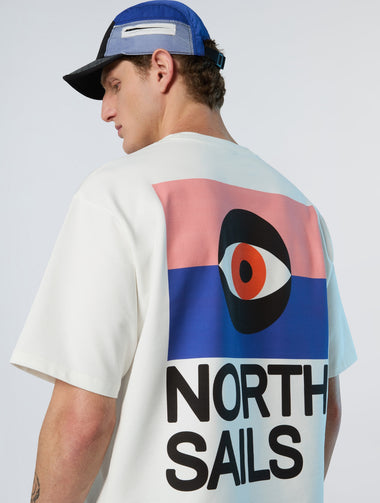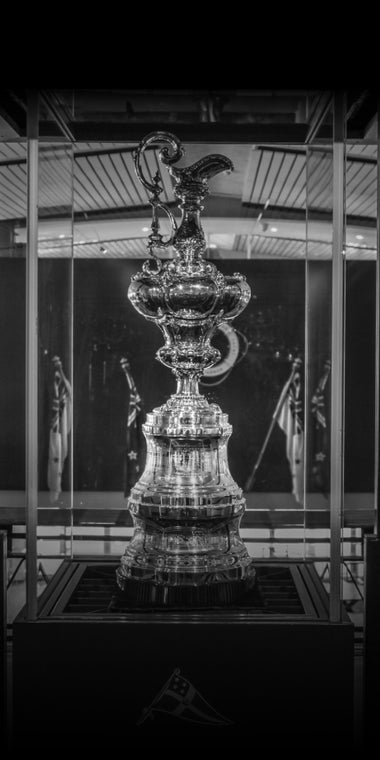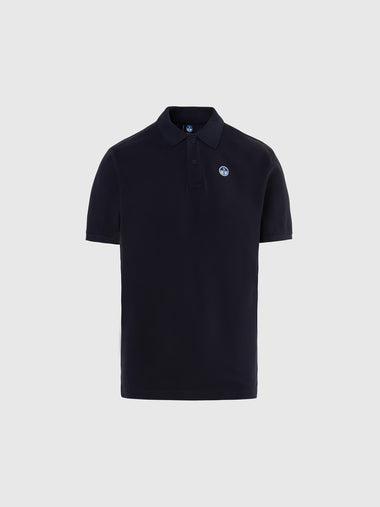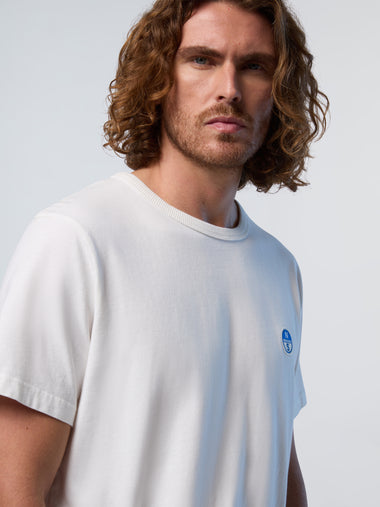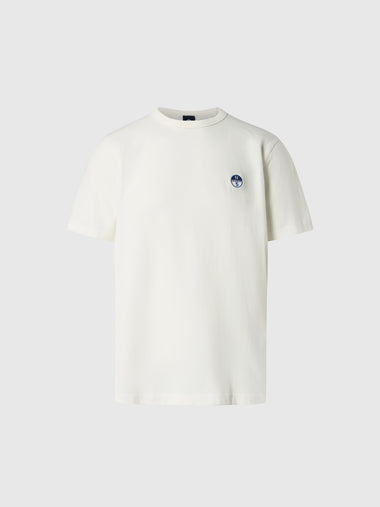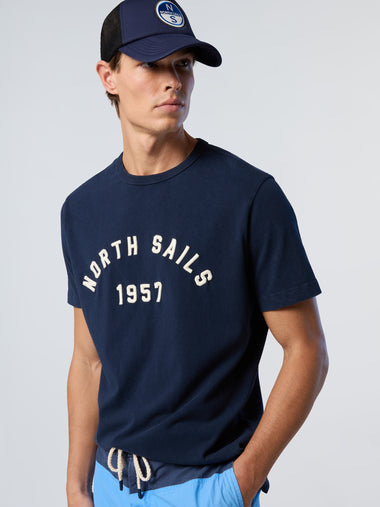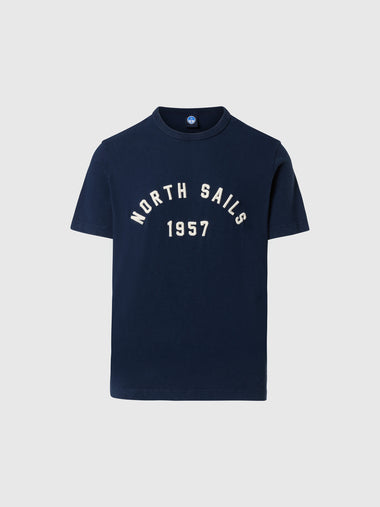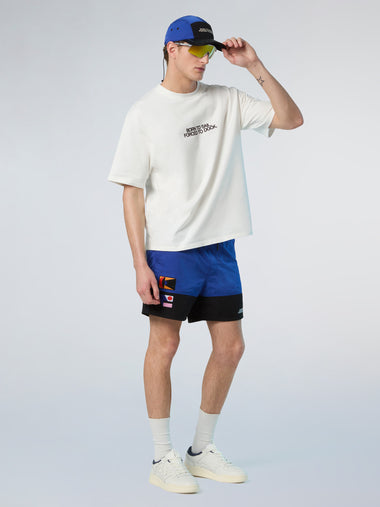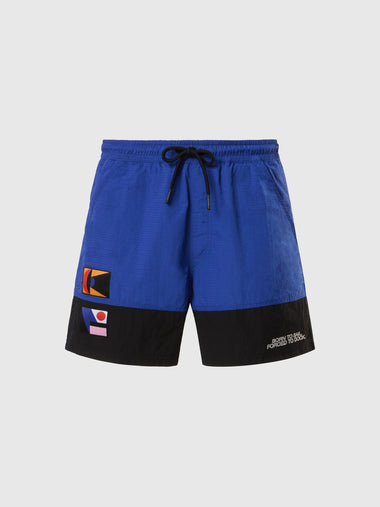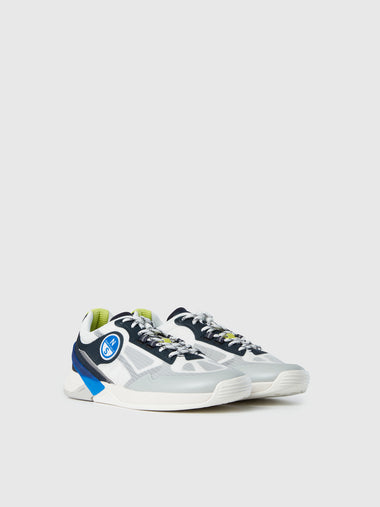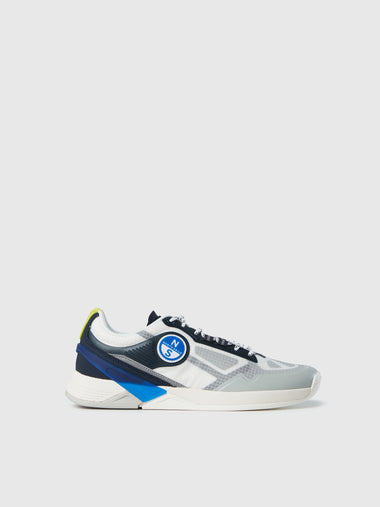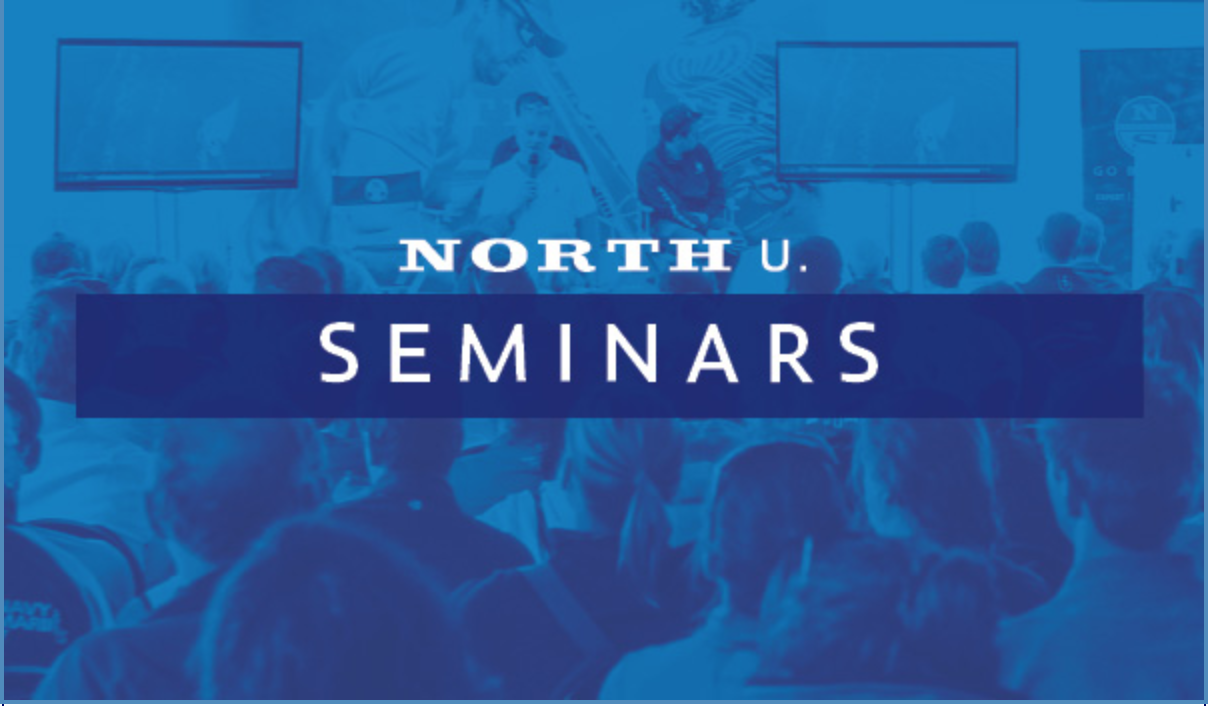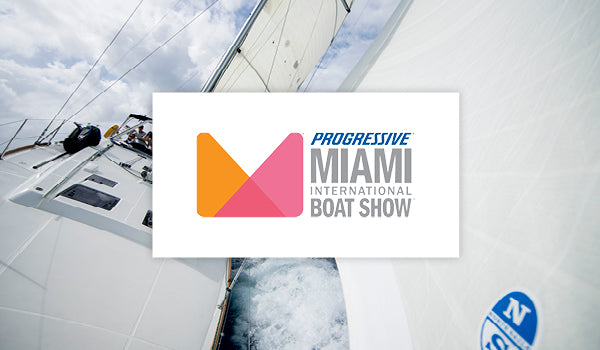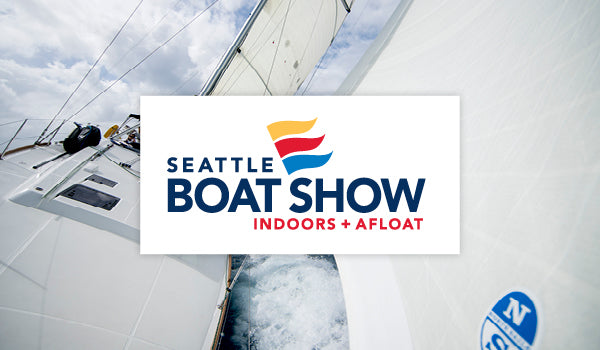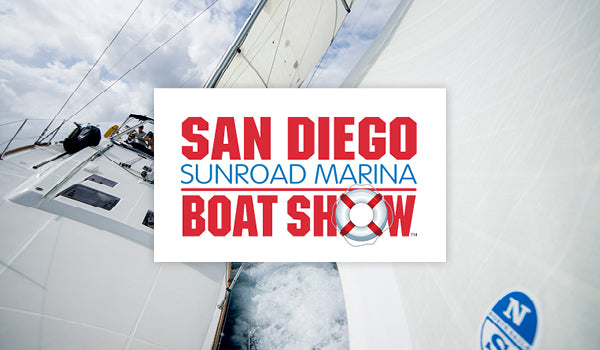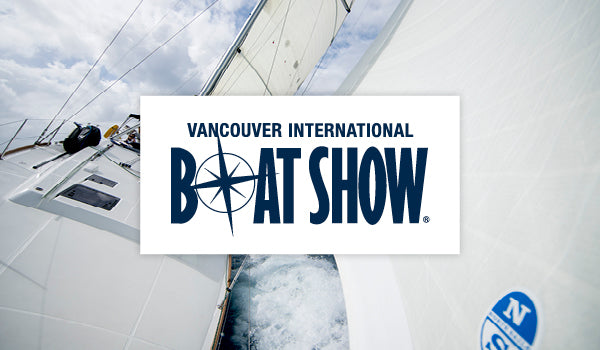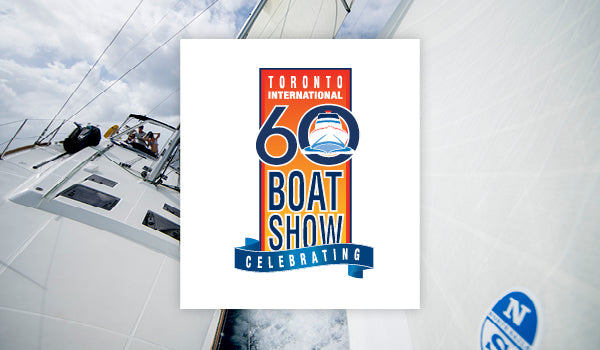NORTH SAILS BLOG
All
Events
Guides
News
People
Podcast
Sustainability
Tech & Innovation
Travel & Adventure
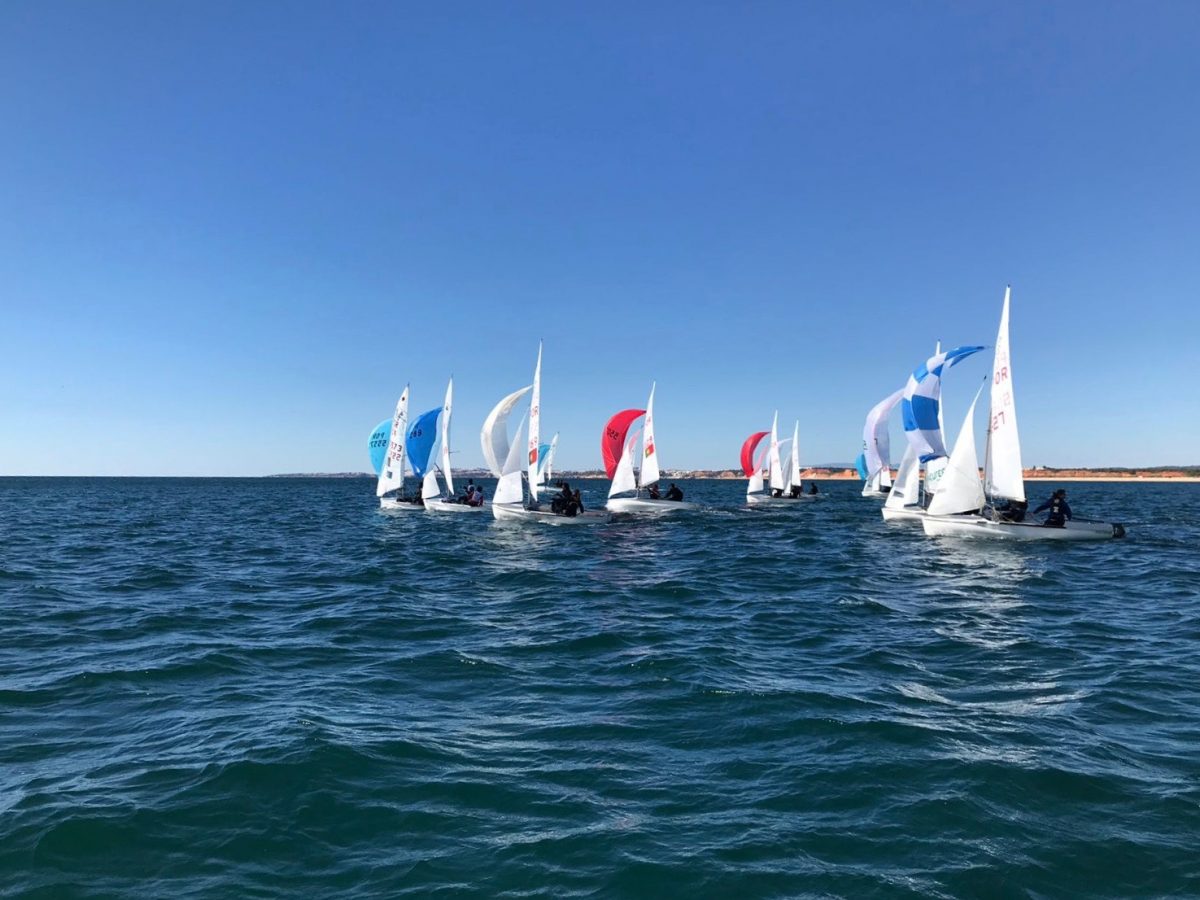
PRIMEIRA CLÍNICA DE 2018, COM HUGO ROCHA, CONTOU ONZE EQUIPAS DE 420
Primeira Clínica de 2018, com Hugo Rocha, contou Onze Equipas de 420
2018 arranca com a realização da nossa Primeira Clínica do ano para a Classe de 420. Durante dois dias, 11 Equipas tiveram a oportunidade de partilhar experiências com o nosso Class Expert, Hugo Rocha. Velejadores do CVBarreiro, CNCascais, CVLagos, CNSesimbra e CIMAV aderiram com grande entusiasmo a esta iniciativa.
Na sequência do trabalho realizado em Cascais, continuamos a apoiar os velejadores durante a presente época. Para participarem nesta actividade as equipas anteciparam a sua chegada a Vilamoura, onde vai já amanhã começar o Torneio de Carnaval e onde será, no próximo ano, o palco do Campeonato Mundial da Classe 420.
Fomos recebidos pelo CIMAV que nos disponibilizou as suas instalações, dando assim o seu contributo para o operacionalização desta Clínica e para a viabilização de mais um momento importante no percurso destes velejadores.
O primeiro dia ficou marcado por uma grande variação de ventos, contexto do qual conseguimos extrair várias situações-tipo para treinar diferentes cenários e utilizá-los como temas para reflexões em grupo.
O segundo dia, por falta de vento, foi mais dedicado a uma abordagem teórica que se tornou num momento muito interessante, onde velejadores e treinadores se juntaram para partilhar dúvidas, dicas e experiências com o apoio do Hugo Rocha.
Agradecemos a todas as Equipas a sua participação e empenho na partilha de experiências, ao CIMAV todo o apoio local que nos disponibilizou e aos Hotéis Dom Pedro as condições que proporcionou. O nosso obrigado também à Ingrid Braga Fortunado pelas fotografias que disponibilizou.
Terminámos com um balanço positivo!l Velejadores saíram da Clínica com novas aprendizagens e aproveitaram a oportunidade para aprender que são várias as opções existentes, o que podem agora colocar em prática!
Se tens interesse nas Clínicas North Sails não deixes de nos contactar!
READ MORE
READ MORE
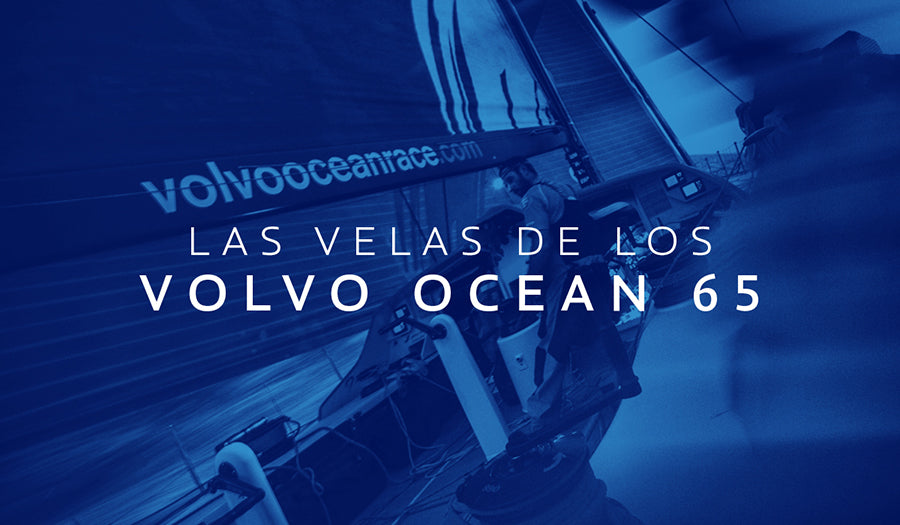
LAS VELAS 3Di, A EXAMEN EN EL MUSEO VOLVO OCEAN RACE
LAS VELAS 3Di, A EXAMEN EN EL MUSEO VOLVO OCEAN RACE
Luis Martínez Doreste y Nacho Braquehais protagonizaron una charla sobre las velas 3Di que equipan los barcos de la Volvo Ocean Race. El evento, celebrado en el Museo Volvo Ocean Race de Alicante, contó con una nutrida participación de público y fue retransmitido por Internet.
Luis Martínez Doreste y Nacho Braquehais explicaron cómo se fabrican las velas North Sails 3Di y repasaron el inventario a bordo de los Volvo Ocean 65 que participan en la Volvo Ocean Race 2017-18. El acto llenó la sala de conferencias del Museo Volvo Ocean Race de Alicante y fue retransmitida en directo a través de Internet.
El vídeo está disponible aquí.
North Sails es el proveedor oficial de velas de la Volvo Ocean Race 2017-18.
READ MORE
READ MORE

LAS VELAS 3Di, A EXAMEN EN EL MUSEO VOLVO OCEAN RACE
LAS VELAS 3Di, A EXAMEN EN EL MUSEO VOLVO OCEAN RACE
Luis Martínez Doreste y Nacho Braquehais protagonizaron una charla sobre las velas 3Di que equipan los barcos de la Volvo Ocean Race. El evento, celebrado en el Museo Volvo Ocean Race de Alicante, contó con una nutrida participación de público y fue retransmitido por Internet.
Luis Martínez Doreste y Nacho Braquehais explicaron cómo se fabrican las velas North Sails 3Di y repasaron el inventario a bordo de los Volvo Ocean 65 que participan en la Volvo Ocean Race 2017-18. El acto llenó la sala de conferencias del Museo Volvo Ocean Race de Alicante y fue retransmitida en directo a través de Internet.
El vídeo está disponible aquí.
North Sails es el proveedor oficial de velas de la Volvo Ocean Race 2017-18.
READ MORE
READ MORE

J70 SPEED GUIDE
The boat appeals to these different groups because it’s fun to sail—it’s a mixture of dinghy and keelboat—and it’s not technically too difficult.
READ MORE
READ MORE
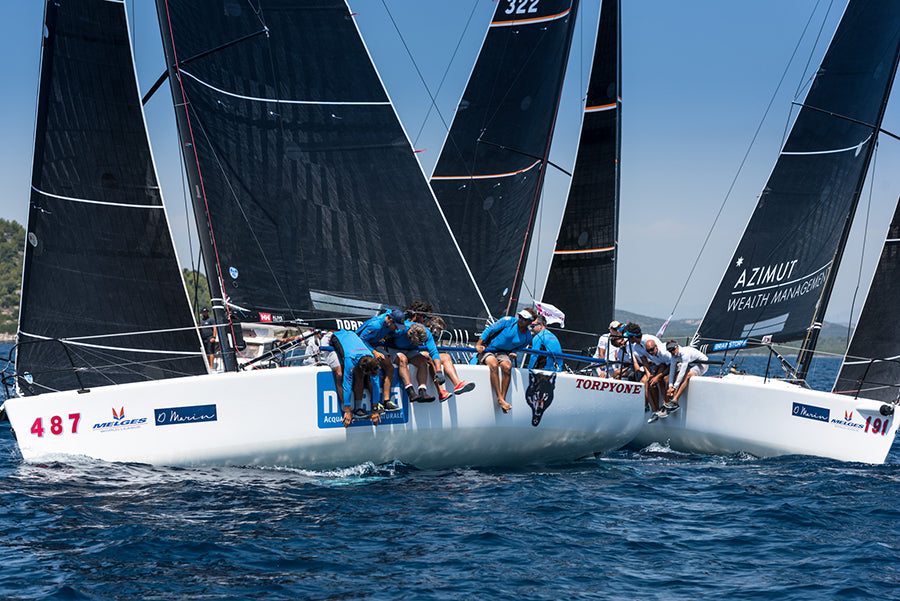
NORTH SAILS ÖVERGÅNG FRÅN 3DL TILL 3Di ÄR NU HELT GENOMFÖRD
NORTH SAILS ÖVERGÅNG FRÅN 3DL TILL 3Di ÄR NU HELT GENOMFÖRD
Ökad produktionskapacitet i Minden (Nevada) och Sri Lanka med fokus på 3Di-segel till mindre båtar
I januari 2018 passerade North Sails ytterligare en historisk milstolpe. Då var nämligen skiftet från membransegel till kompositsegel – eller från 3DL till 3Di – som pågått under nästan tio år helt genomfört.
3DL-seglen var banbrytande när de lanserades i början av 1990-talet. Sedan dess har de haft en dominerande ställning inom segmentet fiberförstärkta mylarsegel, och det krävdes en helt ny North-produkt för att rubba dess ställning. De första prototyperna till det som idag är 3Di testades under Americas Cup 2007 när North byggde ett antal kompositsegel helt utan film till titelförsvaren Alinghi. Sedan dess har 3Di-konceptet vidareutvecklats och används nu på alla typer av båtar, från extrema kappseglingsbåtar och superyachts till långfärdsbåtar.
Dagens 3Di-segel håller formen bättre och har en överlägsen livslängd jämfört med alla typer av mylarbaserade membransegel, inklusive våra egna 3DL-segel. Intresset för 3Di har ökat stadigt sedan säljstarten 2010, och i och med lanseringen av 3Di RAW 760S och 3Di NORDAC har vi nu 3Di-produkter som är perfekt anpassade även för mindre kappseglingsbåtar och mindre cruisingbåtar. För att kunna möta den ökade efterfrågan har North Sails nu vidtagit en rad åtgärder för att öka produktionskapaciteten av 3Di-segel.
I takt med utfasningen av 3DL-tekniken har North Sails genomfört omfattande anpassningar av fabrikerna i Minden, Nevada och Sri Lanka. I september 2017 stängdes den sista 3DL-linjen ner och båda fabrikerna tillverkar nu enbart 3Di-segel.
Samtidigt har produktionskapaciteten höjts. Som exempel kan nämnas att den så kallade ATL-processen (Automated Tape Laying), där seglet byggs upp genom att prepreg-behandlade fibertejper läggs upp enligt ett noga specificerat mönster, nu sker 24 timmar om dygnet, sju dagar i veckan, på sju produktionslinjer i Minden och fem i Sri Lanka. Konverteringen av prepreg-strukturen sker med bakning under värme och tryck på totalt tio justerbara 3D-formar.
© Ben Zucker
Dan Neri, North Sails CEO, förklarar bakgrunden till företagets ändrade produktionsstrategi: "Utbyggnaden av fabriken i Sri Lanka är ett svar på de lyckade lanseringarna av 3Di RAW 760S och 3Di Nordac, som är speciellt utvecklade för att passa mindre kappseglingsbåtar respektive mindre cruisingbåtar. I och med detta har vi nu ett 3Di-sortiment som uppfyller alla de krav som kräsna seglare ställer, oavsett om det handlar om en 18 fots skiff eller en 100-fots superyacht. 3Di-teknologin ligger bakom ett oräkneligt antal regattavinster och världsrekord, och vi ser fram emot att få höra om de äventyr som möjliggörs nu när 3Di Nordac snabbt vinner mark bland cruisingseglare."
“3Di-seglen från North har varit fantastiska. Storseglet har gått 35.000 sjömil, men om man bara målar om det är jag säker på att de flesta som ser det skulle tro att det är helt nytt. Samma sak med förseglen. Du kan se att de är använda men de är fortfarande i bra skick. Och då har de gjort fler sjömil än de flesta seglare gör under en hel livstid. Så jag vet vad jag skulle köpa till min båt.”
-Bouwe Bekking, skipper på Team Brunel, Volvo Ocean Race
Tillverkningen sker på exakt samma sätt i både Minden och Sri Lanka, men anläggningen i Sri Lanka fokuserar på segel till båtar upp till 50 fot, medan Minden är specialiserade på segel till superyachts och kappsegling på Grand Prix-nivå.
Fabriken i Sri Lanka, som är helägd av North Sails, är en supermodern produktionsanläggning med nästan 1200 medarbetare i åtta separata byggnader. Anläggningen i Minden är förutom en produktionsanläggning även North Sails huvudcenter för forskning och utveckling av material, konstruktionsteknik och tillverkningsprocesser. North Sails har ett globalt team bestående av 72 personer som bara jobbar med design och konstruktion. Satsningen på forskning och utveckling är garanten för att North Sails ska kunna erbjuda de bästa produkterna även i framtiden.
Om det bästa ännu inte existerar, så skapar vi det.
© Amory Ross
READ MORE
READ MORE
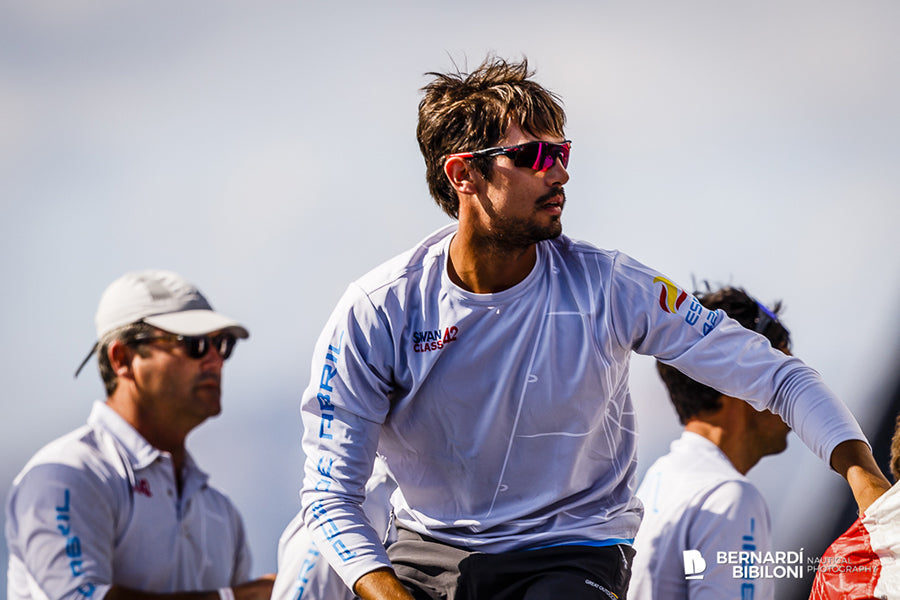
JORGE MARTÍNEZ DORESTE SE INCORPORA A LA RED COMERCIAL DE NORTH SAILS
JORGE MARTÍNEZ DORESTE SE INCORPORA A LA RED COMERCIAL DE NORTH SAILS
North Sails refuerza su red comercial en España con la incorporación de Jorge Martínez Doreste como responsable de la costa del Cantábrico, donde se concentra alrededor del 15% de la flota española de veleros.
North Sails cerró 2017 con 650 velas vendidas en España y arranca 2018 con intención de incrementar su presencia entre la flota española y consolidar su posición de líder indiscutible en el sector. Con ese objetivo, la velería refuerza su red comercial incorporando a Jorge Martínez Doreste, entrenador de la tripulación masculina de 470 en los Juegos Olímpicos de Río 2016 y reputado regatista de vela ligera y de crucero, que se hará cargo del mercado de la cornisa cantábrica.
“Queremos potenciar la presencia de North Sails en la zona del Cantábrico, que supone alrededor del 15% de la flota española, por lo que es muy importante para nosotros”, indica Luis Martínez Doreste, director comercial de North Sails España. “Jorge cumple dos objetivos principales: aporta juventud –algo muy importante para asegurarnos el futuro para la empresa–, y cuenta con una formación muy polivalente que incluye el título de ingeniero naval, experiencia en vela ligera y de crucero, y hasta en diseño de barcos”.
Jorge afronta este nuevo reto con ilusión y el convencimiento de que puede contribuir a incrementar la presencia de North Sails en el Cantábrico.
“Me atrae porque es un trabajo directamente relacionado con el mundo de la vela, en todo momento estás en contacto con el mar y aconsejas al cliente a elegir la vela más adecuada a su tipo de barco. North Sails es una referencia mundial, no sólo por la calidad de sus productos, sino también por el soporte postventa que ofrece al cliente, y los vendedores son mucho más que eso: son todos regatistas de renombre y transmiten confianza porque asesoran desde la experiencia. Entrenando a Jordi Xammar y Joan Herp desarrollé mi ojo en el tema de las velas, seleccionando la vela óptima para los Juegos, y creo que puedo aplicar ese conocimiento a escalas más grandes”.
Jorge Martínez Doreste será el responsable comercial de la velería en Asturias, Cantabria y País Vasco, y colaborará con la zona de Cataluña. Su incorporación completa la red comercial de North Sails en España, que desde ahora cuenta con 32 expertos.
READ MORE
READ MORE
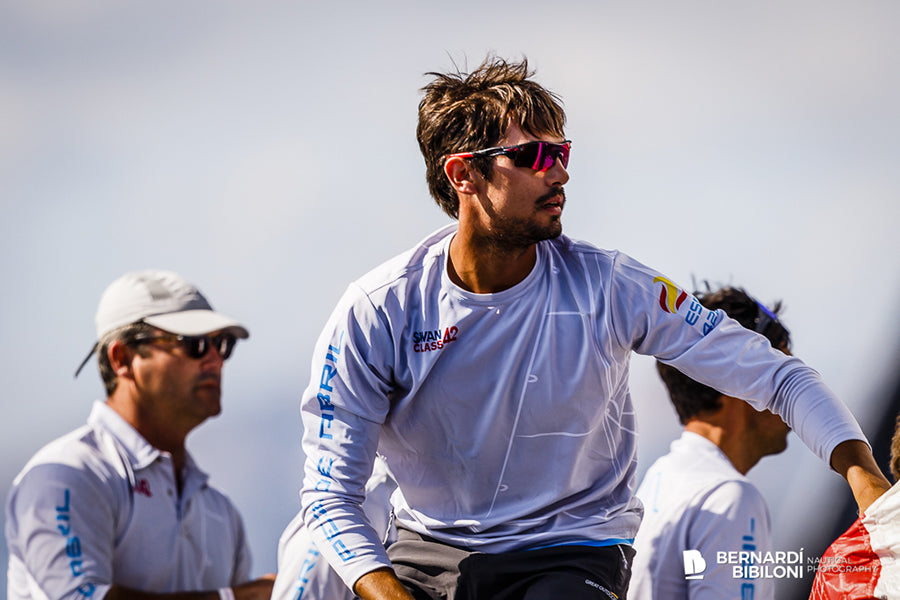
JORGE MARTÍNEZ DORESTE SE INCORPORA A LA RED COMERCIAL DE NORTH SAILS
JORGE MARTÍNEZ DORESTE SE INCORPORA A LA RED COMERCIAL DE NORTH SAILS
North Sails refuerza su red comercial en España con la incorporación de Jorge Martínez Doreste como responsable de la costa del Cantábrico, donde se concentra alrededor del 15% de la flota española de veleros.
North Sails cerró 2017 con 650 velas vendidas en España y arranca 2018 con intención de incrementar su presencia entre la flota española y consolidar su posición de líder indiscutible en el sector. Con ese objetivo, la velería refuerza su red comercial incorporando a Jorge Martínez Doreste, entrenador de la tripulación masculina de 470 en los Juegos Olímpicos de Río 2016 y reputado regatista de vela ligera y de crucero, que se hará cargo del mercado de la cornisa cantábrica.
“Queremos potenciar la presencia de North Sails en la zona del Cantábrico, que supone alrededor del 15% de la flota española, por lo que es muy importante para nosotros”, indica Luis Martínez Doreste, director comercial de North Sails España. “Jorge cumple dos objetivos principales: aporta juventud –algo muy importante para asegurarnos el futuro para la empresa–, y cuenta con una formación muy polivalente que incluye el título de ingeniero naval, experiencia en vela ligera y de crucero, y hasta en diseño de barcos”.
Jorge afronta este nuevo reto con ilusión y el convencimiento de que puede contribuir a incrementar la presencia de North Sails en el Cantábrico.
“Me atrae porque es un trabajo directamente relacionado con el mundo de la vela, en todo momento estás en contacto con el mar y aconsejas al cliente a elegir la vela más adecuada a su tipo de barco. North Sails es una referencia mundial, no sólo por la calidad de sus productos, sino también por el soporte postventa que ofrece al cliente, y los vendedores son mucho más que eso: son todos regatistas de renombre y transmiten confianza porque asesoran desde la experiencia. Entrenando a Jordi Xammar y Joan Herp desarrollé mi ojo en el tema de las velas, seleccionando la vela óptima para los Juegos, y creo que puedo aplicar ese conocimiento a escalas más grandes”.
Jorge Martínez Doreste será el responsable comercial de la velería en Asturias, Cantabria y País Vasco, y colaborará con la zona de Cataluña. Su incorporación completa la red comercial de North Sails en España, que desde ahora cuenta con 32 expertos.
READ MORE
READ MORE
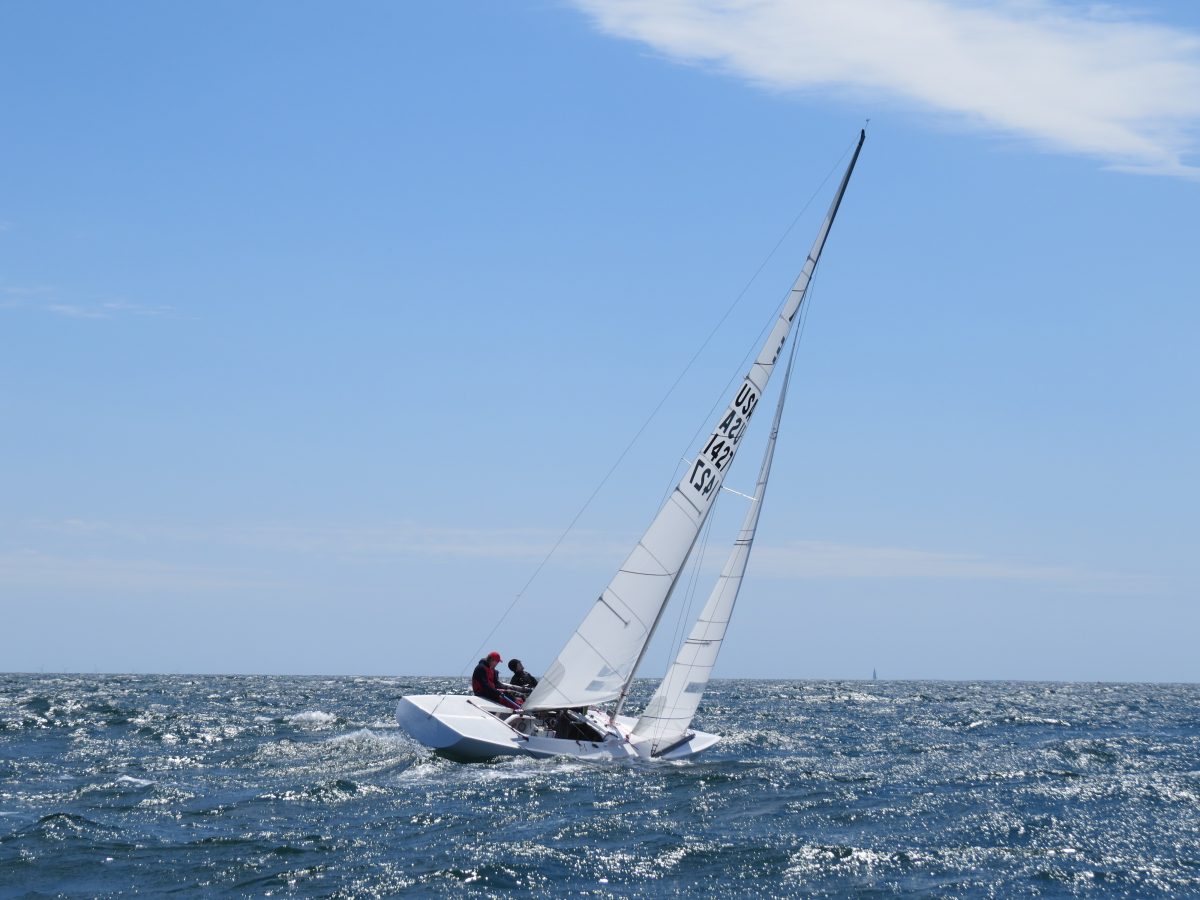
2018 ETCHELLS FLORIDA STATE CHAMPIONSHIP
2018 FLORIDA STATES DOMINATED BY NORTH CLIENTS
North Sails Powers Nine out of the Top Ten Finishers
The 2018 Etchells Florida State Championship was like an instant replay of prior Biscayne Bay Series events: big breeze, rain, and some serious wind chill. Although conditions were in the upper range, the upwind and downwind legs were exciting, but not as exciting as the mark roundings. Unfortunately for some, escaping without incident was nearly impossible. This stressed the importance of being in the front of the fleet.
We caught up with our Etchells expert, Skip Dieball, who raced onboard War Canoe. Here are some tips from his weekend experience:
“From my perspective with boat set up, I learned that you could get away with setting up the boat asymmetric based on the wave patterns. The main needed more twist to provide a nicer groove for the driver while going into the waves. Conversely, when sailing across the waves, you could get away with slightly harder main trim to give you more height without fear of slamming waves”.
Sunday was glamour sailing. 80 degrees, sunny and a more civilized 7-10 knots of breeze. Getting off the line was particularly difficult as the fleet bunched up towards the pin end. The current was pushing teams over the line, which forced the RC to start with the U-flag, which soon became the black flag in order to get races completed..
“Our team went for “low density” and this allowed us to remain consistent throughout an otherwise inconsistent day”.
Congratulations to Lawrie Smith and team Alfie and all teams powered by North Sails products. Contact our experts today.
2018 Florida State Championship
1
Alfie / Lawrie Smith
2
Scimitar / Steve Benjamin
3
Lifted / Jim Cunningham
4
America Jane II / Scott Kaufman
6
Gumption 3 / Kevin Grainger
7
KGB / Senet Bischoff *
8
War Canoe / Michael Goldfarb
9
Tiburon / Dirk Kneulman
10
Swedish Blue / Ante Razmilovic
* Denotes Partial North Sails Inventory
READ MORE
READ MORE
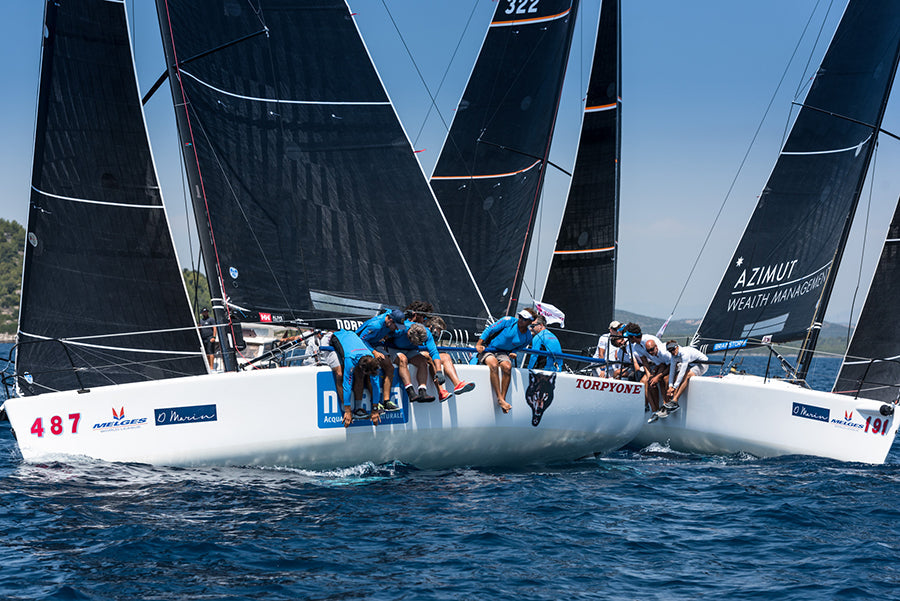
SKIFTET FRA 3DL TIL 3Di ER FULDENDT
SKIFTET FRA 3DL TIL 3Di ER FULDENDT
Øget produktionskapacitet i Minden (Nevada, USA) og på Sri Lanka fokuserer på 3Di-sejl til mindre både
Starten på 2018 markerer et definitivt skift fra 3DL til 3Di. De seneste 10 år har vi brugt på at transformere vores 3D-produktion fra laminerede 3DL-sejl til 3Di-kompositsejl. Da North Sails lancerede de banebrydende 3DL-sejl, flyttede vi laminat sejl op på et helt nyt plan! 3DL-sejl dominerede performance racing fra start og frem til America’s Cup i 2007.
Herfra begyndte skiftet til 3Di og de mylar-laminerede sejl er stille og roligt blevet udfaset til fordel for det helstøbte komposit, bygget op af pre-imprægnerede filamenttape, hvorved vi fik afviklet problemet med delaminerende sejl samtidig med, at vi har øget den unikke styrke i de formstøbte sejl, der forbliver grundstenen i vores sejlproduktion.
Ved den 33. America’s Cup i 2010 var 3Di så langt fremme i udviklingen, at Alinghi blev det første hold, der skulle forsvare Cup’en med et fuldt stel 3Di-sejl. Sidenhen har vi udviklet og udvidet konceptet til at dække alle former for sejlads, alle niveauer og de fleste bådtyper. Formstabilitet og levetid er usammenlignelig med laminerede sejl. Et faktum, som hele sejlverden har opdaget og nu, hvor vi har lanceret 3Di NORDAC til cruising - og 3Di RAW til kapsejlads, har vi måtte øge produktionskapaciteten væsentligt.
North Sails har systematisk omdannet produktionsanlæggene i Minden, Nevada og Sri Lanka fra 3DL og panelsejl til ren 3Di. Det sidste 3DL-sejl blev støbt i september 2017 og vi har ikke set tilbage siden. Både Minden og Sri Lanka kører med dobbeltskift, så de syv tapefremstillingsmaskiner (ATL) i Minden og de 5 i Sri Lanka kan køre i døgndrift. ATL- og imprægneringsudstyret leverer grundelementerne til 10 justérbare 3D-forme. Sri Lanka står for fremstillingen af sejl til både på op til 50 fod, mens Minden tager sig sejlene til Superyacht, Volvo Ocean Race og større kapsejladsbåde.
© Ben Zucker
"Udvidelsen af Sri Lanka-produktionen sker i kølvandet på den succesfulde modtagelse, som både 3Di RAW og 3Di NORDAC har fået. Vi kan nu leverer 3Di-sejl til alt fra 18’ Skiff i Australien til 100’ Ultime i Frankrig. Vi kan med stolthed siger, at North Sails’ 3Di-sejl har været medvirkende faktor til, at rigtig mange kan stille sig øverst på podiet til VM, EM og grand prix-sejladser verden over. Med 3Di NORDAC håber vi, at flere tursejlere kan få lige så stor glæde af teknologien, som kapsejlerne har."
“35.000 sømil indtil videre og 3Di-sejlene fra North har været uovertrufne. Giv storsejlet en gang maling, og jeg sikker på, at alle ville tro, at det er et helt nyt sejl. Det gælder også for forsejlene. Man kan se, at de er blevet brugt, men formen holder. Det ville tage de fleste sejlere et helt liv at tilbagelægge så mange mil, så jeg ved godt, hvad jeg ville købe til min båd.”
-Bouwe Bekking, skipper på Team Brunel, Volvo Ocean Race
3D fabrikken i Minden er hovedsæde for udvikling, research, teknologi og produktion af de 3Di sejl, som North Sails har patent på. Sri Lanka er en state of the art-produktion med små 1.200 ansatte, der supplerer Minden, så vi kan møde den høje efterspørgsel og leverer sejl til hver en havn i hele verden.
Vores 72 ingeniører og designere sørger for, at udviklingen fortsætter og at sejlene passer præcis til din båd og dine ønsker, mens vores research- & udviklingsteam sikrer sig, at vi til en hver tid har den mest effektive proces og at materialerne er de ypperste. Hvis det bedste ikke allerede eksisterer, så opfinder vi det selv.
© Amory Ross
READ MORE
READ MORE
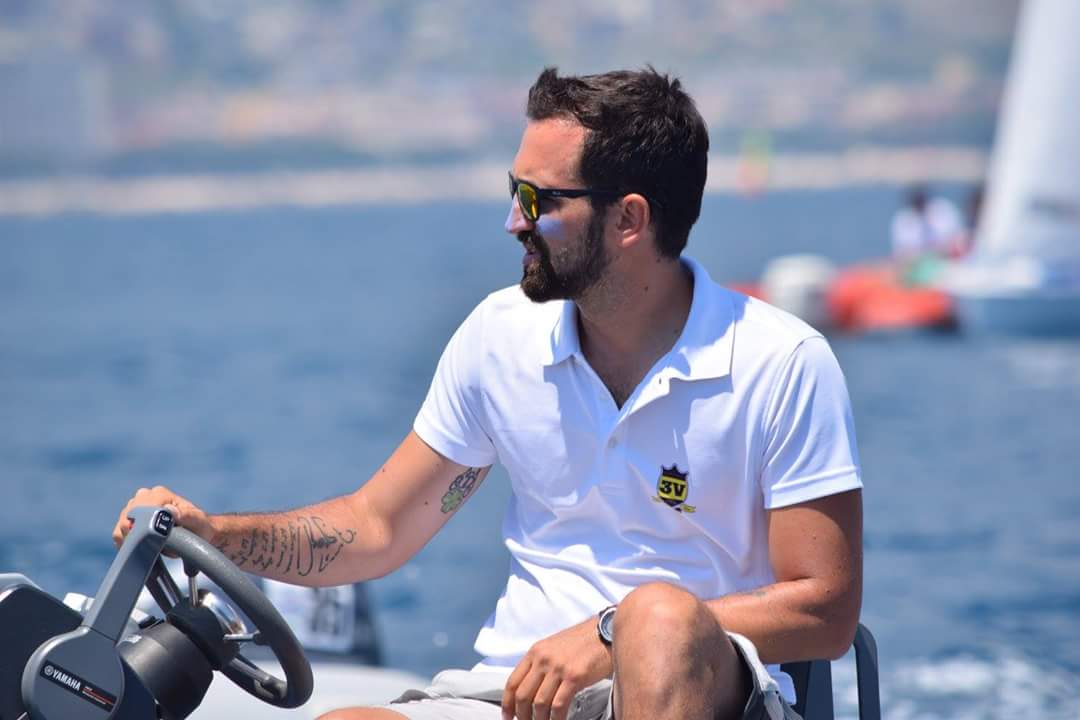
MATTEO SANGIORGI ENTRA NEL NETWORK NORTH SAILS
MATTEO SANGIORGI ENTRA NEL NETWORK NORTH SAILS
North Sails annuncia che Matteo Sangiorgi si è unito al gruppo degli Specialist in qualità di One Design Expert della classe Optimist
Matteo porta con sé anni di esperienza, che vanno dal coaching nell’Optimist, allo sviluppo vele di Optimist, 420 e 470. Lavorerà a stretto contatto con il team One Design globale, con un focus finalizzato ad aumentare la quota di mercato di North Sails nella classe più diffusa al mondo per quanto riguarda la vela giovanile, l'Optimist appunto.
“Ho deciso di cogliere l’opportunità di North Sails perché adoro l’idea di far parte di un’azienda che è in grado di fornire le vele a tutti, dai giovanissimi dell’Optimist ai veterani dell’America’s Cup - spiega un visibilmente soddisfatto Sangiorgi - Mi piace anche l’idea di essere coinvolto in un network così grande, dove ricerca e sviluppo sono un punto focale dell’attività di ognuno"
Tim Healy, Presidente della sezione One Design di North Sails, ha aggiunto:
“Accogliere Matteo in North Sails è un piacere. Porta con sé un grande bagaglio di esperienza e la sua passione e dedizione per la vela sono chiare ed evidenti. La combinazione di queste caratteristiche con le sue conoscenze tecniche ed abilità in barca lo rendono sin d'ora un elemento chiave del nostro team One Design”
North Sails vanta alle spalle ormai oltre 60 anni di esperienza nel design e produzione di vele. Il team di esperti One Design utilizza tutti gli strumenti più moderni a disposizione per offrire le vele più avanzate tecnologicamente a tutti i velisti, dai regatanti locali agli atleti olimpionici.
READ MORE
READ MORE
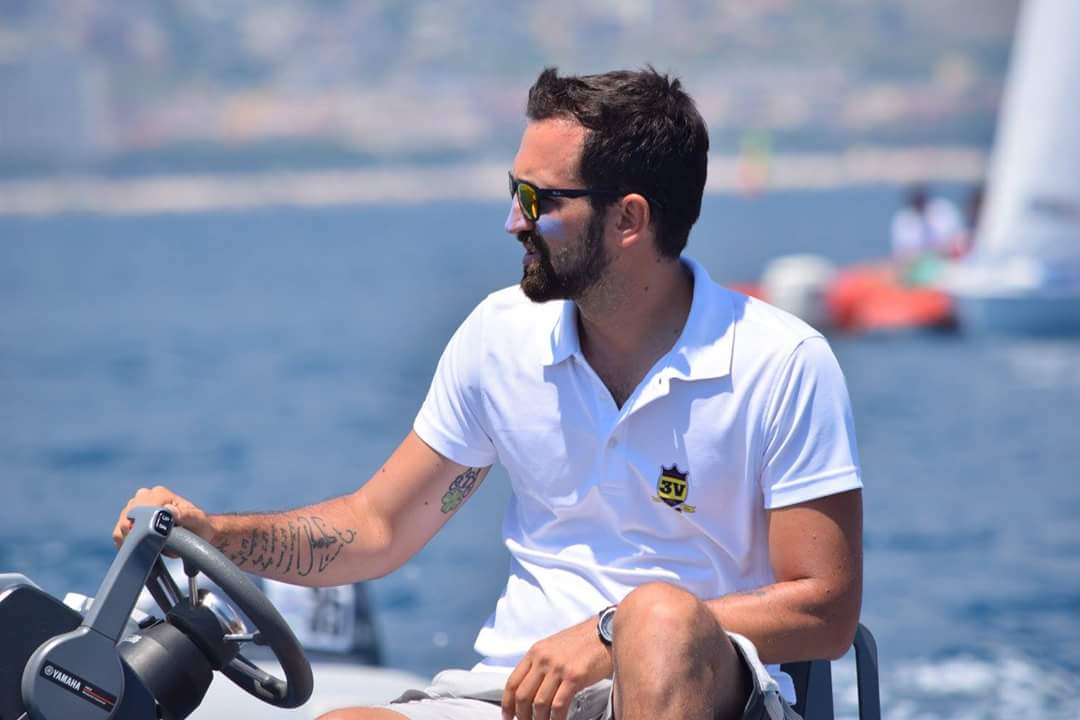
NORTH SAILS WELCOMES MATTEO SANGIORGI
NORTH SAILS WELCOMES MATTEO SANGIORGI
North Sails expands the global One Design team welcoming Matteo Sangiorgi
Gosport, UK, January 31st 2018: North Sails have announced today that Matteo Sangiorgi has joined North Sails as a One Design Expert for the Optimist Class.
“I decided to join North Sails because I love the idea of being part of a company that is able to supply sails for everyone from Optimist sailors to America’s Cup sailors. I also like the idea of being involved in such a big network, where research and development a key focus for everyone.”
Matteo brings years of experience with him, from coaching Optimist sailors to sail development in the Optimist, 420 and 470 classes. He will work alongside the global One Design team with a focus on the Optimist class to increase our market share in the most popular and largest global junior racing boat.
Tim Healy, President of One Design at North Sails added,
“We are delighted to welcome Matteo to North Sails. He brings a wealth of experience and his passion and dedication for the sport is clear. Combine this with his valuable knowledge and sailing skills makes him a great asset to our one design team.”
North Sails is backed by over 60 years of experience in One Design sail making and design. North’s team of One Design experts utilize design and product innovation available to supply the most advanced sails to One Design fleets, which includes everything from club racers to Olympians.
Full Interview with Matteo
READ MORE
READ MORE
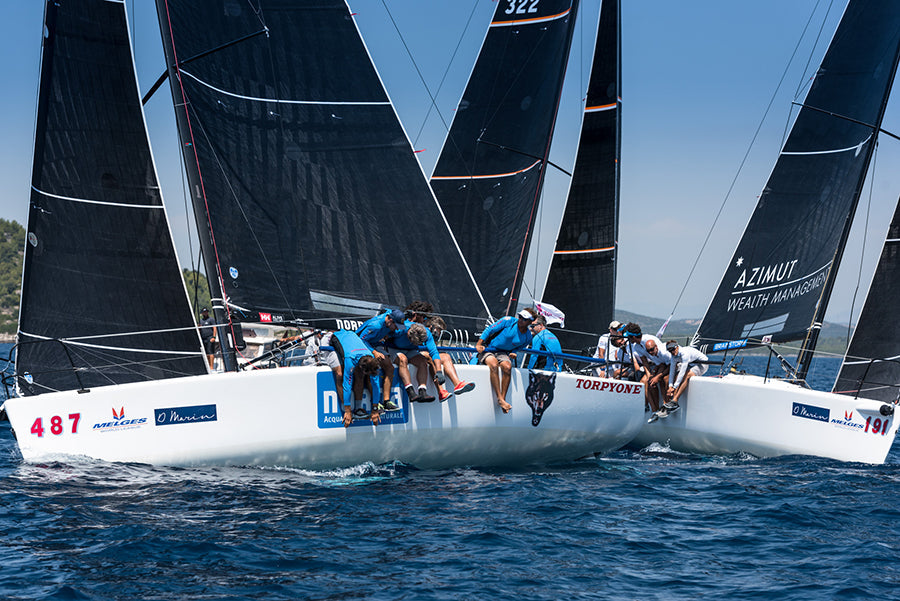
NORTH SAILS COMPLETES SHIFT FROM 3DL TO 3Di PRODUCT LINES
NORTH SAILS COMPLETES SHIFT FROM 3DL to 3Di PRODUCT LINES
Increased manufacturing capacity in Minden (Nevada, USA) and Sri Lanka focuses on 3Di sails output for small boats
The beginning of 2018 marks a milestone for North Sails as the company completes a 10-year transformation from 3DL string laminates to 3Di molded composite sail structures. North Sails was at the forefront of the mylar and yarn laminated construction wave with its groundbreaking 3DL sails. 3DL sails dominated performance sailmaking from the early 1990’s until the 2007 America’s Cup. With the shift to 3Di, the company ceased production of laminated sails reliant on mylar and is fully committed to the spread filament, prepreg, 3D composite structures. Three dimensional, full-scale shape molding remains a cornerstone of the North Sails approach.
3Di structures were first trialled by the defender syndicate, Alinghi in preparation for their defense in the 33rd America’s Cup. Since those early days, the 3Di concept has been developed and expanded for use across all types of sailing, from grand prix to one design and Superyachts to cruising. Today’s 3Di sails deliver greater shape-holding properties and vastly improved durability compared to any mylar and string, laminated sail construction. As the 3Di product line has gained acceptance, and in particular with the introduction of 3Di NORDAC for smaller cruising boats and 3Di RAW 760S for smaller race boats, North Sails has taken steps to increase production capacity.North Sails has systematically converted their manufacturing facilities in Minden, Nevada, and Sri Lanka as the product line has shifted from 3DL and paneled to 3Di. As of September 2017, the last 3DL production line was shut down and both factories are running exclusively 3Di product lines. Today North Sails has identical prepreg converting lines in both the Minden and Sri Lanka factories running 14 shifts per week, with seven Automated Tape Laying (ATL) lines running 24/7 in Minden and five lines running 24/7 in Sri Lanka. The prepreg converting and ATL lines feed a combined eight gantries and 10 full scale, adjustable 3D molds. North’s facility in Sri Lanka focuses on building 3Di sails for boats up to 50’, while Minden specializes in Grand Prix and Superyacht sails.
© Ben Zucker
Commenting on the evolution of the production strategy, North Sails CEO Dan Neri stated, “The expansion of the Sri Lanka factory is in response to the successful launch of 3Di RAW 760S sails for smaller race boats and 3Di NORDAC for smaller cruising boats. 3Di sails continue to meet the requirements of sailors in all classes from the 18' Skiffs in Australia to the 100' Ultime fleet in France. The technology is behind an unprecedented number of race victories and world records and we hope many more cruising adventures as 3Di NORDAC becomes more established within the cruising community.”
“The 3Di sails from North have been excellent. 35,000 NM usage. Give it a new paint job, and I bet if you would ask anyone, they would say this is a brand new main. It’s the same for the other sails. You can see they’ve been used but they are still in good shape. This mileage would be a lifetime for the average cruiser. I know what I would buy.”
-Bouwe Bekking, Team Brunel
3D Minden is the flagship center for materials research, engineering and manufacturing of 3-Dimensional products which are unique to North Sails. Sri Lanka Manufacturing is a wholly owned, state-of-the-art, facility employing close to 1,200 people across eight buildings. The products from Minden and Sri Lanka are sent to every port in the world.
North Sails proudly employs a 72-person strong global design and engineering team. The R&D team ensures North Sails uses the best processes and the best in raw materials. If the best does not exist, we create it.
© Amory Ross
READ MORE
READ MORE
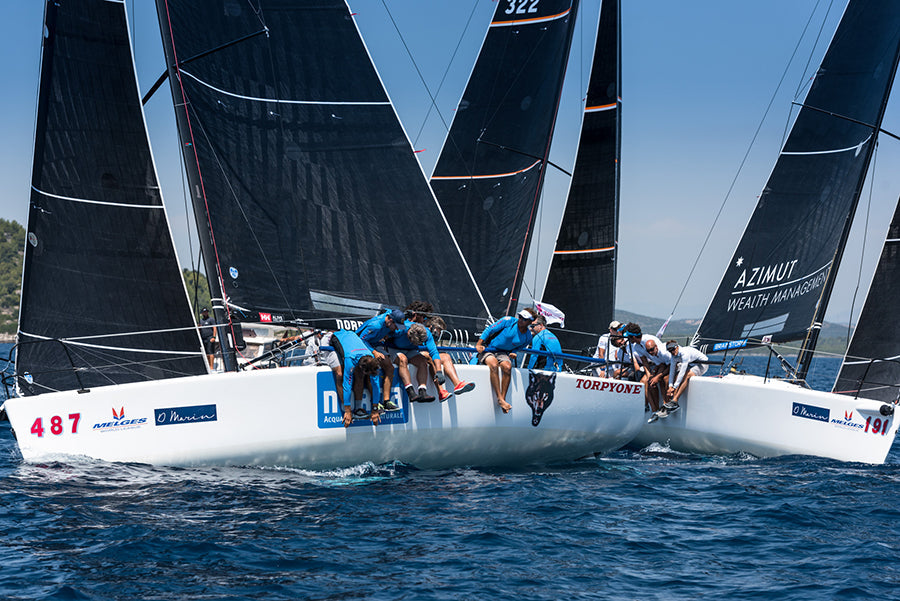
NORTH SAILS COMPLETES SHIFT FROM 3DL TO 3Di PRODUCT LINES
NORTH SAILS COMPLETES SHIFT FROM 3DL to 3Di PRODUCT LINES
Increased manufacturing capacity in Minden (Nevada, USA) and Sri Lanka focuses on 3Di sails output for small boats
The beginning of 2018 marks a milestone for North Sails as the company completes a 10-year transformation from 3DL string laminates to 3Di molded composite sail structures. North Sails was at the forefront of the mylar and yarn laminated construction wave with its groundbreaking 3DL sails. 3DL sails dominated performance sailmaking from the early 1990’s until the 2007 America’s Cup. With the shift to 3Di, the company ceased production of laminated sails reliant on mylar and is fully committed to the spread filament, prepreg, 3D composite structures. Three dimensional, full-scale shape molding remains a cornerstone of the North Sails approach.
3Di structures were first trialled by the defender syndicate, Alinghi in preparation for their defense in the 33rd America’s Cup. Since those early days, the 3Di concept has been developed and expanded for use across all types of sailing, from grand prix to one design and Superyachts to cruising. Today’s 3Di sails deliver greater shape-holding properties and vastly improved durability compared to any mylar and string, laminated sail construction. As the 3Di product line has gained acceptance, and in particular with the introduction of 3Di NORDAC for smaller cruising boats and 3Di RAW 760S for smaller race boats, North Sails has taken steps to increase production capacity.North Sails has systematically converted their manufacturing facilities in Minden, Nevada, and Sri Lanka as the product line has shifted from 3DL and paneled to 3Di. As of September 2017, the last 3DL production line was shut down and both factories are running exclusively 3Di product lines. Today North Sails has identical prepreg converting lines in both the Minden and Sri Lanka factories running 14 shifts per week, with seven Automated Tape Laying (ATL) lines running 24/7 in Minden and five lines running 24/7 in Sri Lanka. The prepreg converting and ATL lines feed a combined eight gantries and 10 full scale, adjustable 3D molds. North’s facility in Sri Lanka focuses on building 3Di sails for boats up to 50’, while Minden specializes in Grand Prix and Superyacht sails.
© Ben Zucker
Commenting on the evolution of the production strategy, North Sails CEO Dan Neri stated, “The expansion of the Sri Lanka factory is in response to the successful launch of 3Di RAW 760S sails for smaller race boats and 3Di NORDAC for smaller cruising boats. 3Di sails continue to meet the requirements of sailors in all classes from the 18′ Skiffs in Australia to the 100′ Ultime fleet in France. The technology is behind an unprecedented number of race victories and world records and we hope many more cruising adventures as 3Di NORDAC becomes more established within the cruising community.”
“The 3Di sails from North have been excellent. 35,000 NM usage. Give it a new paint job, and I bet if you would ask anyone, they would say this is a brand new main. It’s the same for the other sails. You can see they’ve been used but they are still in good shape. This mileage would be a lifetime for the average cruiser. I know what I would buy.”
-Bouwe Bekking, Team Brunel
3D Minden is the flagship center for materials research, engineering and manufacturing of 3-Dimensional products which are unique to North Sails. Sri Lanka Manufacturing is a wholly owned, state-of-the-art, facility employing close to 1,200 people across eight buildings. The products from Minden and Sri Lanka are sent to every port in the world.
North Sails proudly employs a 72-person strong global design and engineering team. The R&D team ensures North Sails uses the best processes and the best in raw materials. If the best does not exist, we create it.
© Amory Ross
READ MORE
READ MORE

SPEED READING: HOW TO MAINTAIN FOCUS WHILE OFFSHORE
SPEED READING: HOW TO MAINTAIN FOCUS WHILE OFFSHORE
Surviving Times of Isolation
📸Konrad Frost
Day after day, mile after mile, distance racing reminds us of that never-ending feeling of being stuck in one place for extended periods of time. Hear more from Casey Smith(CS) how to cope with those long periods of isolation where you can only do so much. Casey is a two-time Volvo Ocean Race veteran and was a key member onboard during all of Comanche’s record runs and race wins. Casey knows a lot about being stuck out at sea, but still finds humor in the little things and gets his job done, which is most important.
Here are Casey’s tips for maintaining focus while isolated at sea for days on end:
What’s the longest race you’ve done?
CS: For sure it’s the Volvo Ocean Race. Four hours-on, four hours-off, the whole way around the world. Waking up and coming on deck “Oh, hi. Fancy seeing all you guys here! And look, that other boat we are racing against is still right there, and it has been for the last week!”
Do you have a sequence of things you think about that help you stay focused?
CS: Sleep. Eat. Four hours on watch. Repeat (10, 20, 30+ days…).
Do the days blend together or do you lose track of time?
CS: For sure you lose track of the days of the week you never lose track of time because the whole boat revolves around time. The four hour watch rotation or the weather schedules and boat position schedules are all very closely followed and everyone wants as much time to rest as possible and also know how you are doing on the fleet.
📸Yann Riou
What are some things you think about while you are sailing for extended periods of time?
CS: You just need to concentrate on the competition aspect of the race; that’s why you are out there in the first place. Compete and try to win. It’s really important to put everything into sailing the boat 100%.
How do you maintain your focus if the weather gets rough and you are on the same tack/jibe for hours on end?
CS: Focus comes from wanting to win. Chances are if it’s windy and downwind are probably going fast. You want to make sure you are the fastest boat and keep the pedal down. If you’re sailing upwind, and conditions are windy and rough, that’s a bit tougher because it’s hard to sleep during the off-watch and your energy is a bit lower. Being on the same tack or jibe for long periods is great as it means you get a break from moving sails and equipment so everything has a silver lining!
What advice can you give to someone who is sailing offshore for their first time in relation to staying focused and not feeling overwhelmed?
CS: It’s all about making the boat go fast. Basically nothing else matters. You have a job to do, it might be helming, trimming, grinding, sail changing and everyone contributes to miles gained or lost. Do your job at 100% and keep the boat moving fast. Also, stay calm and level. There will be times when another boat (or boats) is doing better than you but stay calm and keep sailing your boat 100% as that’s all you can control.
📸James Blake
When you are down below, if you are not sleeping, what do you do to still stay alert and ready for when it’s time for your shift to start?
CS: Eat. Make coffee for the team. Tidy up the living space up. Dry water out of the bilge. Check the steering and other systems. Watch movies.
What are your favorite foods to help stay awake and focused if you are the crew on shift?
CS: We are usually limited on what foods we can have on board, so your mind does wander to what food you love and would love to be eating. The reality is you have never seen faces light up as much as when a fresh bag of jerky comes on deck. Coffee and warm drinks are huge as well, but chewing gum is needed after the jerky and coffee. Brushing your teeth is something that slips a little offshore.
Is there anything you have vowed to do when you’ve been on a long leg? (Did you do it?)
CS: Remember to load some more movies, music or books on the iPod. You can only watch the music video of Umbrella by Rihanna so many times.
Staring at the horizon for so many hours on end, have you hallucinated offshore?
CS: No hallucinations on deck but I’ve had some crazy dreams during the off watch. Also waking up and forgetting where you are and then slowly coming too. Then the realization of “crap, I’m on the boat and only one week into a six week leg from China to Rio.”
READ MORE
READ MORE

WORLD CHAMPION SAILOR ALLAN TERHUNE, JR. RETURNS TO NORTH SAILS
WORLD CHAMPION SAILOR ALLAN TERHUNE, JR. RETURNS TO NORTH SAILS
Terhune to focus on customers in Annapolis and Chicago
(Annapolis, MD) February 1st 2018: Allan Terhune, Jr., who first joined North Sails in 2007, returns to the North sales team to provide world class expertise to customers. North’s head of One Design Vince Brun first recognized Terhune’s raw talent and originally recruited the young racer, who has notched up eleven North American Championships (in the Lightning, Flying Scot and Thistle Classes) and was crowned the 2013 J/22 World Champion. After six years with North honing his skills in the loft and on the water, Terhune subsequently joined Quantum in 2014, but the champion sailor is now returning to join the world’s leading sailmaker in what promises to be an exciting year for the respected One Design expert.
Commenting on his return to North Sails, Allan Terhune, Jr. said;
“It’s a huge opportunity to work with the amazing team at North Sails and grow in the sport, and I’m really excited to work with both Jonathan Bartlett and the Annapolis team, as well as with Perry Lewis and the Chicago team. When you want to sail at the top level of the sport and raise your game, you want to have the best gear and equipment, and there’s no denying that the North Sails network and product offering is the best in the industry. I’m looking forward to being able to offer my customers more opportunity for success and help them enjoy their time on the water with North Sails products.”
Allan will join the Annapolis and Chicago teams with special focus on Offshore One Design while still helping with traditional small boat One Design, which is Allan’s speciality. He will continue working with clients in J/111, J/70 and J/88 Classes, plus expanding into J/121 and other projects.
Terhune is a resident of Annapolis, MD and graduate of the US Merchant Marine Academy. In 2007, Terhune was awarded US Sailing’s One Design Leadership Award and named Rolex Yachtsman of the Year Finalist in 2008 and 2013.
READ MORE
READ MORE
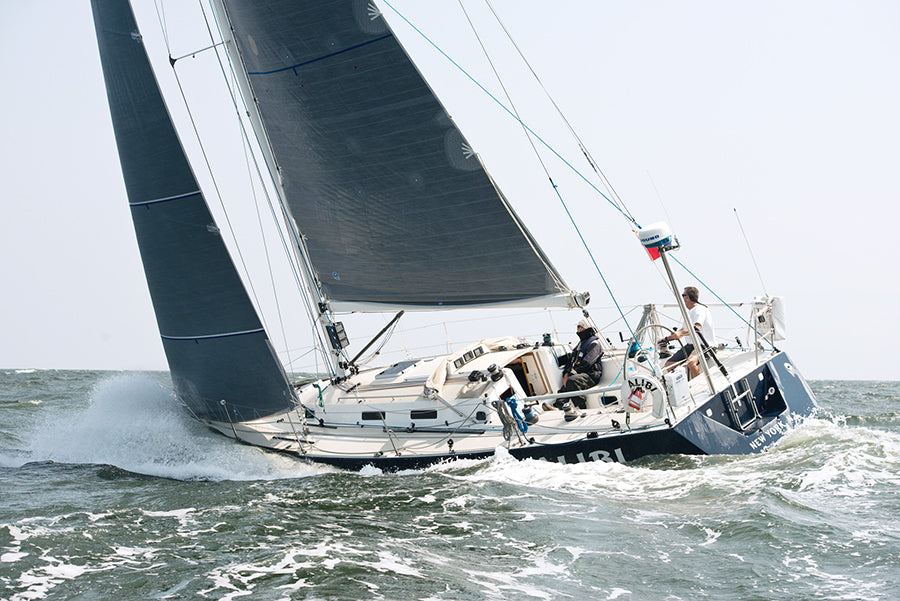
THE PERFECT ALIBI
THE PERFECT ALIBI
Powered by 3Di, Gary Grant takes on doublehanded sailing
© Photoboat
Gary Grant races his J/120 Alibi doublehanded and regularly beats fully crewed boats in major long distance races. Here’s what he had to say about his sails, his racing program, and his plans for the future with the help of his North Sails expert, Tom Castiglione.
When did it all start and what have you won recently?
I bought Alibi new in 2004 when I lived in London. My first boat was a 32-foot cruising boat, which didn’t allow me to race, so I got the J/120 which gives me great opportunities to compete.
In the 2015 Halifax Race, we were first in our division and in class against four fully crewed J/120s. We had a 2nd in the Block Island Race and the Vineyard Race, and we also won Stamford Yacht Club’s doublehanded racing trophy for that year.
Who’s your partner in crime?
Stephen Fisk is my primary crew. We started sailing together in 2005. Stephen was a member of my yacht club, and I heard he had a lot of experience in distance racing and on the J/120. Both of us really enjoy sailing together, and we both enjoy sailing doublehanded. We wanted to try something different, and we enjoy it so much we haven’t given up.
© Photoboat
What’s it like competing against fully crewed teams?
We do well in light air against the fully crewed boats, but when the moderate to heavy air conditions come up we lack weight on the rail. We use the autopilot when my help is needed up front, and as the sea-state picks up, it isn’t as effective either. So the light to medium wind range is our preference.
In the 2013 Block Island Race, we beat fully crewed J/120s. In 2017 we won the doublehanded PHRF award, even though we got third in our division on corrected time. My boat is a bit different from some of the other J/120 teams, as we have a carbon mast and they have aluminum masts.
When did you know you wanted to make the switch to 3Di?
In 2004 I had a suit of 3DL sails, but after about 3 years they started to deteriorate. I decided I wanted to go with something bulletproof, so I reached out to my local loft and got the details from Tom on 3Di and knew that would be the right choice for my program.
“After seeing the success of 3Di in the TP52 class and in the Volvo Ocean Race, I knew it was going to be the right move. I needed a set of sails that wouldn’t deteriorate on the shelf and was going to be reliable year after year. Doublehanded sailors need robust sails, as it’s hard to change sails without flogging or luffing, and we are often pushing our sails above their designated wind ranges.”
What are some advantages of 3Di for doublehanded sailing?
For sail changes, the sails get more wear and tear naturally since we are short on crew and it takes a little more time to make changes. They luff a bit longer than they would if we had a full crew to take them down. The J/120 is a stiff boat, and we often push the #1 pretty hard, especially in the reaching position just because it’s hard to make changes on that point of sail.
The greatest advantage of having 3Di is that when you get them set up they don’t stretch. It’s a major factor for doublehanding the boat. When you are alone on deck you are always thinking “would the boat be faster if I was steering or trimming?” You may spend less time trimming being alone on deck when your crew is sleeping or eating.
“The 3Di has been great for us, they are bulletproof and look just as good today as they did when I got them in 2014.”
Gary commented; “Doublehanded sailing has gotten more popular in distance racing. 3Di sails are perfect for distance racing in general, and especially in doublehanded or shorthanded sailing because they are durable and they hold their shape perfectly once the sheets are set. It really makes a big difference. They can handle the flogging and uncontrollable luffing that occurs when it takes a more time to execute a maneuver, especially when we only have only two sets of hands.”
If the sea state doesn’t allow you to leave the helm, how do you go about making sail changes?
If we have to do a sail change, we pick a point of sail that the autopilot can handle well, and go from there. Under the mainsail alone, the autopilot does the best. With an asymmetrical the angles become critical, so you end up oversteering with the autopilot.
“When we go offshore we take off the roller furler and use our 3Di hank-on sails. It is just easier for us. With the hank-on option, the sails practically flake themselves as they come down and it saves us time and manpower.”
Do you have any “memorable” moments sailing shorthanded?
We’ve had our fair share of wipeouts and spinnaker wraps. Fortunately, the boat is pretty well behaved so when it does go over, it happens slowly then comes right back up again, so it hasn’t been too bad.
A memorable moment was the 2013 Block Island Race, when we got the overall award for our division the year Rambler broke the course record. After the awards, I went up to the PRO and asked why they didn’t give it to Rambler. He replied,“Rambler doesn’t race against anyone, and you are in one of the most competitive fleets.”
In that particular race, the wind was perfect for us. We started out with the Jib-top reacher and came back in with the A3. The wind was around 18-22 knots. Around 2 AM we put the kite up to sail around Block Island, and the shackle on the sheet came off and all of a sudden we had the kite blowing all over the place. We were trying to get it down and it wrapped around the headstay. I set the autopilot and we barely got the sail down in time (5 miles later!) to put the jib up. We ended up not losing any ground at all, as it was perfect timing. When it’s windy and we both have to be on the foredeck, it can be a little crazy. We pick angles so if the boat gets caught we don’t roll into a jibe. We always set the autopilot so we would round up, as opposed to a crash jibe if she got pushed by a wave. The worst that could happen is we get a wave over us, that’s why we have our gear on and we are always clipped in.
© Photoboat
How did Alibi get her name?
I’m a lawyer by training so it’s a good name for the boat. It’s not an excuse, which most people think when they hear the term. It means you couldn’t have done what you are being accused of because you were not there.
“If I’m on my alibi, I can’t be doing anything wrong.”
What is different about preparing for a doublehanded distance race vs. a normal fully-crewed distance race?
It’s like tag-team sailing. When one crew is sailing the boat, the other is down below. I have a different way of setting things up on the boat from what Steve does. After criticizing each other and trying to improve each other’s trimming styles, we’ve optimized our techniques together and now we sail more consistently, which has resulted in more consistent results.
Do you have a plan if something goes wrong?
That’s one of the reasons I knew I had to get my 3Di sails to hank-on. In 2012 I was on deck sailing the boat alone and Steve was down below. I had the #1 up and all of a sudden the wind went from 12 knots to gusting over 30. I had to wake Steve up while driving and flogging the sails until he was up on deck. We both had to go forward and we got soaked. That’s when I decided I didn’t want to do that again.
In 2014, the wind came up and we had to change from a # 1 to a #3 quickly. Steve was down below. I said, “bring the #3 when you come up!” I opened the halyard for the #1 and easily brought it down on deck, It flaked on its own. We did the sail change in just three minutes and it worked really well. The hank-on 3Di sails were exactly what we needed.
What’s next?
This year we have the Block Island Race, then Bermuda. We may do the Vineyard Race. Longer term we want to bring the boat down south to do some winter racing. I’ll be doing the Caribbean 600 this year on a friend’s boat, and hopefully will be able to get my boat down there for next year. The J/120 I think would be a good boat to sail in the Caribbean circuit since there are more reaching opportunities with island sailing. In given wind conditions I think we would do quite well.
Out of all the events you’ve done so far, what is your favorite?
All the races are fun. They are all different. My favorite race is Newport to Bermuda because there is so much excitement and anticipation in Newport, and a very competitive fleet to race in. The top sailors are out there. The Bermuda Race is like three races in one. You start in Newport and it’s cold on the boat. Then you get into the Gulf Stream, and the only thing predictable is that the sea state is very confused. It’s an incredible climate change. When you get out you are close to Bermuda; the humidity drops, the water changes colors, it’s the perfect conditions for sailing.
How was your experience working with your local North Sails expert?
I knew what I wanted to do, and Tom is very familiar with the J/120 so he helped me create the best options. My first set came with the idea of doing Bermuda, so my first #1 is a bit beefier, with a slightly smaller LP, as we sometimes have to carry it above the stated wind range. It’s a little slow in Long Island Sound in light air, but for Bermuda it was right. I also have a lighter #1.
One of the great things about working with Tom is that we’ve done tweaks with the sails like the Code 0 to make things easy for the type of sailing I do. Tom really knows how the boat is sailed and understands that I have different configurations for each division I am competing in.
“Tom has optimized my sail options for the different races I do. It’s working out very well and I’m equally competitive with other boats. It takes a lot of understanding of how to sail the boat, conditions, and handicap systems to make it all work and he gets it.”
© Photoboat
Interested in North Sails 3Di? Contact your local expert today!
READ MORE
READ MORE
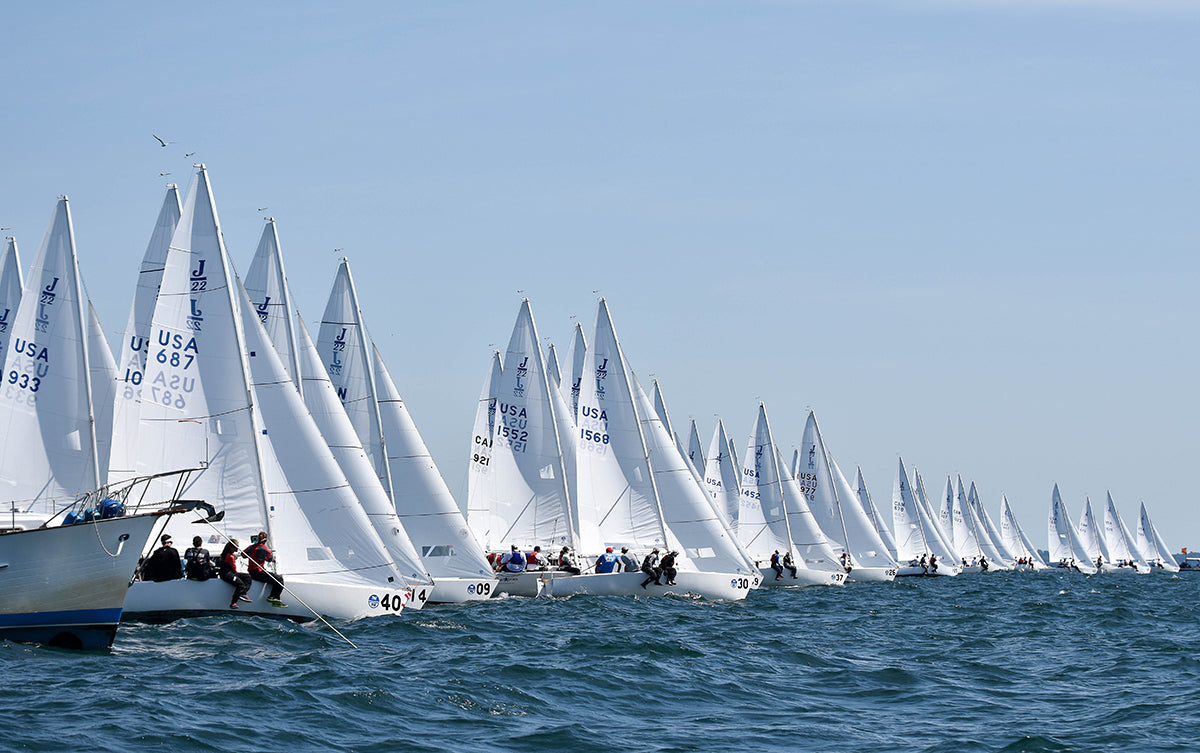
STARTING STRATEGIES: LOW RISK, HIGH REWARD
STARTING STRATEGIES: LOW RISK, HIGH REWARD
Tricks for a Better Race Start
The first two minutes of a race is arguably the most important. Those first two minutes will define where you start on the line, and how much space is around you to accelerate. This makes starting one of the hardest skills to master in sailboat racing. Good news is there are a few tricks that can make starting much easier. These tricks focus on executing a start that is low-risk and has a high-reward. A low-risk start isn’t going to mean that you are leading at every windward mark, but it will keep your options open on the first beat so you can go where you want without being forced which will give you a better chance of rounding the top mark in the front of the pack. Once you are in the front, it is easier to hang in there.
In the video below, our expert Mike Marshall talks us through a ten-boat start where one boat, in particular, had the opportunity to contain the fleet and have a low-risk start with just one small decision change. Instead, because they were too early, they had to sail down the line which then forced them into a high-risk starting situation that gave them no control of the race, or their competition.
READ MORE
READ MORE
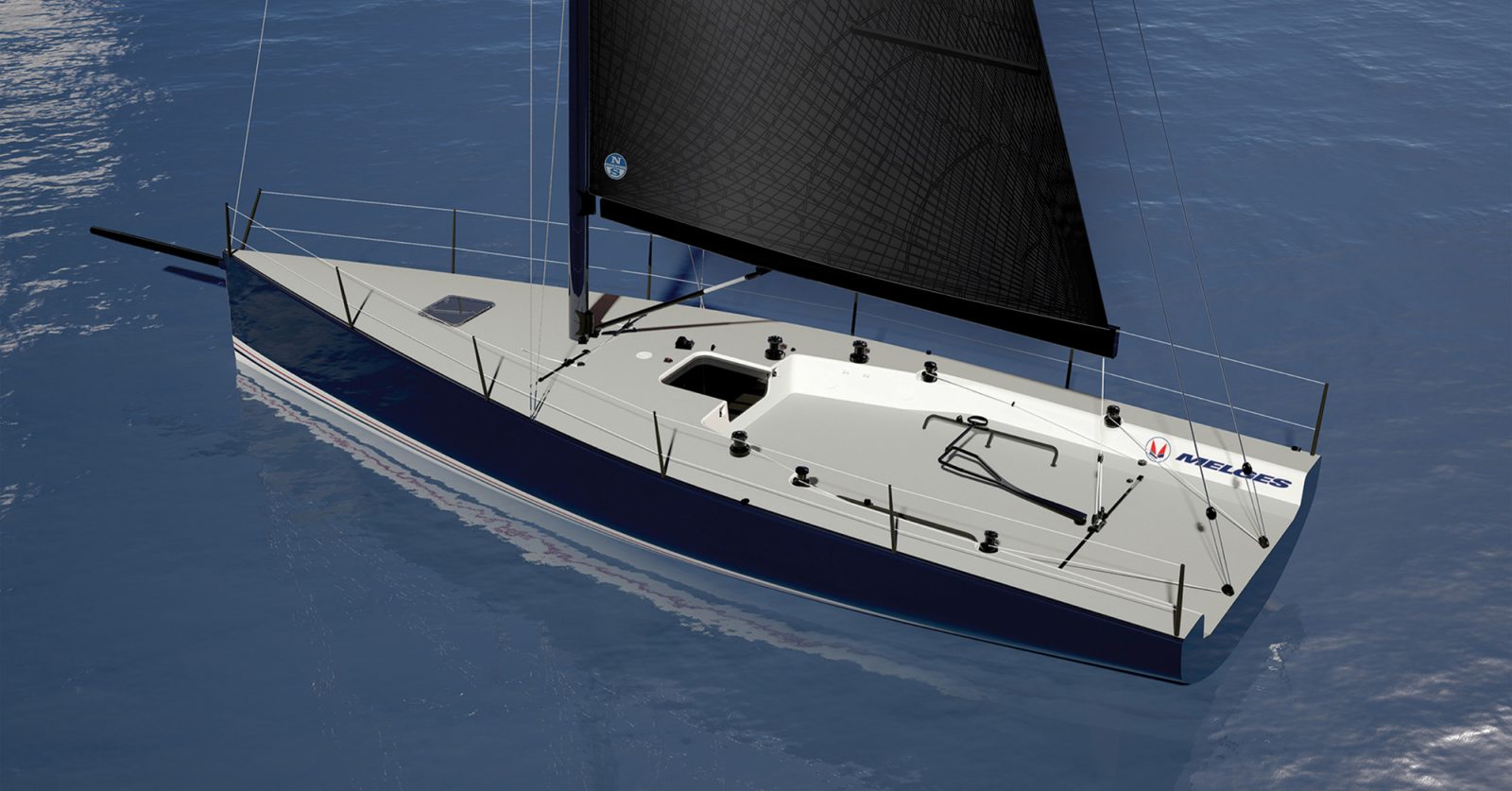
DRIE SPECIALE ZEILEN ONTWIKKELD VOOR NIEUWE MELGES IC37 KLASSE
Drie speciale zeilen ontwikkeld voor nieuwe Melges IC37 klasse
Mogelijk gemaakt door de 3Di technologie en North Design Suite software
Als de officiële en exclusieve zeilmaker voor de nieuwe Melges IC37 klasse stond het North Sails design team voor een uitdagende taak; een zeilinventaris ontwikkelen bestaande uit slechts drie zeilen, een grootzeil, fok en één spinaker, waarbij er tijdens regatta's slechts één wijziging mag worden aangebracht in de verstaging. Met deze vereisten moesten ze een set zeilen ontwikkelen die voor elke windrichting geschikt is.
Met de 3Di technologie en North Design Suite software (één van de meest specifieke en krachtigste design tools in de zeilmakers industrie) in huis werd de uitdaging geaccepteerd. Het complete verhaal van ontwerper Mike Marshall, waarin hij het 3Di ontwikkelingsproces voor de Melges IC37 uitlegt, is (in het Engels) te lezen op onze website.
READ MORE
READ MORE
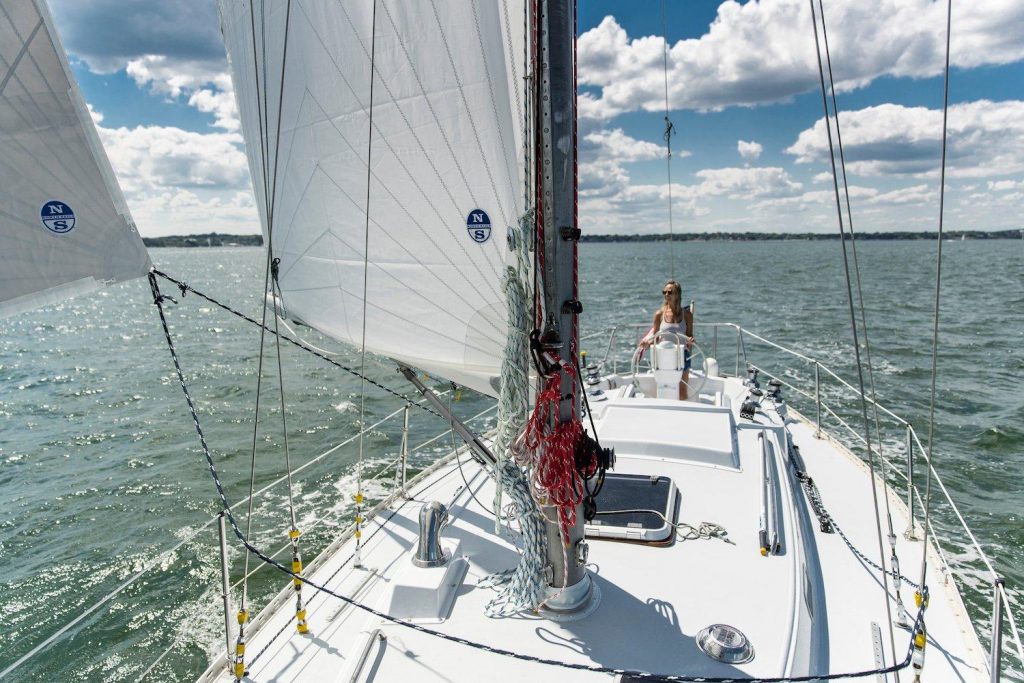
DAY DREAMING OF SAILING?
DAY DREAMING OF SAILING?
Escape with North Sails Waterlogs
Landlocked? Cabin fever? Have not seen the sun in days? Many of us in the Northern Hemisphere are counting down the days until winter is over and we’re back on the water.
While we can’t put you on a plane and fly to warmer water, North Sails is serving up daydream-worthy reading through our Waterlogs. Our Waterlogs are a collection of stories from our cruising customers around the world. The stories range from cruising on a multihull in the Mediterranean with 3Di NORDAC to Tom and Susie Partridge who stopped by our loft in Sri Lanka en route to Cape Town, South Africa. Whether you’re a racer or a cruiser, we all appreciate stories about casting off the dock-lines and using the wind to power our journey.
We hope you enjoy reading these stories as much as we like receiving them. Just don’t let your boss catch you daydreaming!
Gustave’s Adventures in the Mediterannean
One couple, three young children, a catamaran, and six months sabbatical to make the most of the Mediterranean. That was the project in 2017 for Jérôme Aubert, 40, and his wife Hélène, 35. Not necessarily an obvious choice for this sailing professional as he has been working at Harken for eight years but the family wanted to leave it all behind them and take off on an adventure. Click the photo for full story.
3Di NORDAC Test Sail
Everyone at North Sails was excited to launch 3Di Nordac in June 2017. We wanted to share the news far and wide and tell all our customer about the new addition to our 3Di product family. In preparing for launch, we sent Bill Fortenberry, our cruising segment leader on a test sail in the BVI’s. The perks of working for North Sails! Click the photo for full story.
Adina Explores Sri Lanka
Tom and Susie Partridge were early contributors to the North Waterlogs. They are from the UK but were making their way from Asia to Cape Town, South Africa. Tom emailed us one day to say they were going to be in Sri Lanka for two weeks and was possible to stop by our factory in Sri Lanka. Naturally, we welcomed him with open arms. Click the photo for full story.
First Hoist With Onne van der Wal
Onne van der Wal is a name you may have heard. He is a world-class photographer who spent the winter of 2016 restoring his Pearson 36. Being a photographer, Onne documented this project and shared his first hoist story with North Sails. Click the photo for full story.
Still want to get away? Read all of our Waterlogs here.
Do you have a story to share? We’d love to hear from you! Email us at contact@mktg.northsails.com.
READ MORE
READ MORE
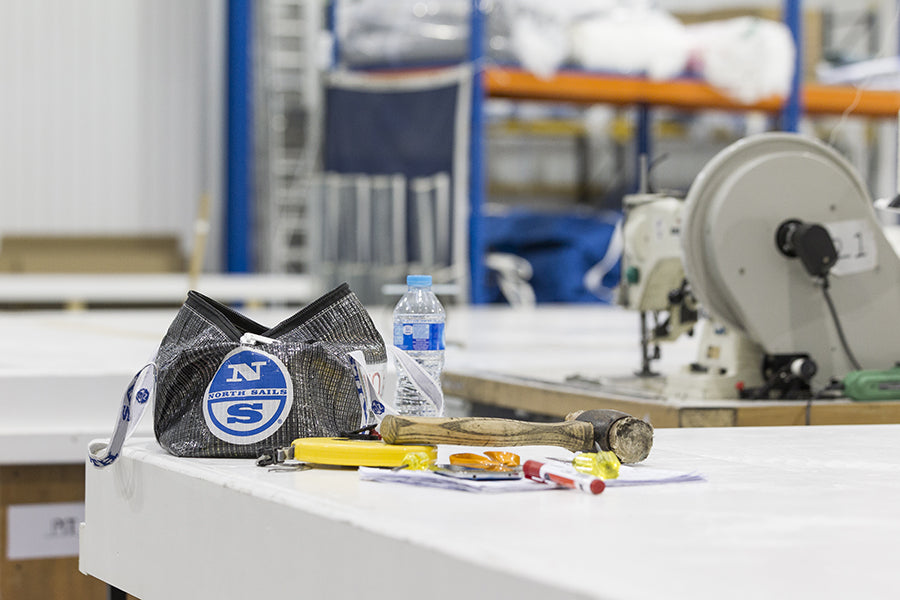
NORTH SAILS CELEBRATES JEFF TODD’S 20 YEARS OF SAILMAKING
NORTH SAILS CELEBRATES JEFF TODD'S 20 YEARS OF SAILMAKING
Todd Named Master Sailmaker to US Naval Academy in Annapolis
It is with mixed emotions to announce that Jeff Todd will be leaving North Sails after 23 years. Jeff has been a staple to North Sails in Annapolis for nearly a quarter of a century as manager of our service department, seeing the loft through three location changes. While he will be greatly missed, North Sails wishes Jeff much luck in his new endeavor as master sailmaker at the US Naval Academy.
Jeff is an accomplished sailor and sailmaker who joined North Sails in 1995. His career with North has spanned J-Boat class titles, as well as providing local support and expertise to events such as the Volvo Ocean Race and transatlantic races during stopovers in Baltimore. Jeff somehow managed to repair the PlayStation Code Zero, despite the fact that the sail was larger than the loft floor.
“Jeff has always been approachable and positive, with the skill to assess a situation and provide a fair solution,” commented Pete Colby, North Sails North American Service Manager. “He is hands-on in the loft and out in the field. I always found I learned something new about sailing or sailmaking after speaking with Jeff. North Sails and the Annapolis area are lucky to have worked with and learned from Jeff over the years.”
“Jeff brought an inherent wealth of knowledge to the job,” commented Jonathan Bartlett, loft manager in Annapolis. “Whether it was service work for the Whitbread, NOOD Regatta or seasonal service, Jeff always completed the work with the utmost care. Our customers always benefited from Jeff's honesty and fairness. Jeff has the same approach on the water, which is the mark of a true North Sails personality. He also sails the same way too. Our loft and customers will miss Jeff, but we’re confident they are in good hands with Ridgley MacKenzie.”
Ridgely will take over as Service Manager in Annapolis. He is from a family of sailmakers with a 50+ years history in the Annapolis area. Like Jeff, Ridgely will become a familiar face to North customers both in the loft and on the water.
© Ian Roman
READ MORE
READ MORE
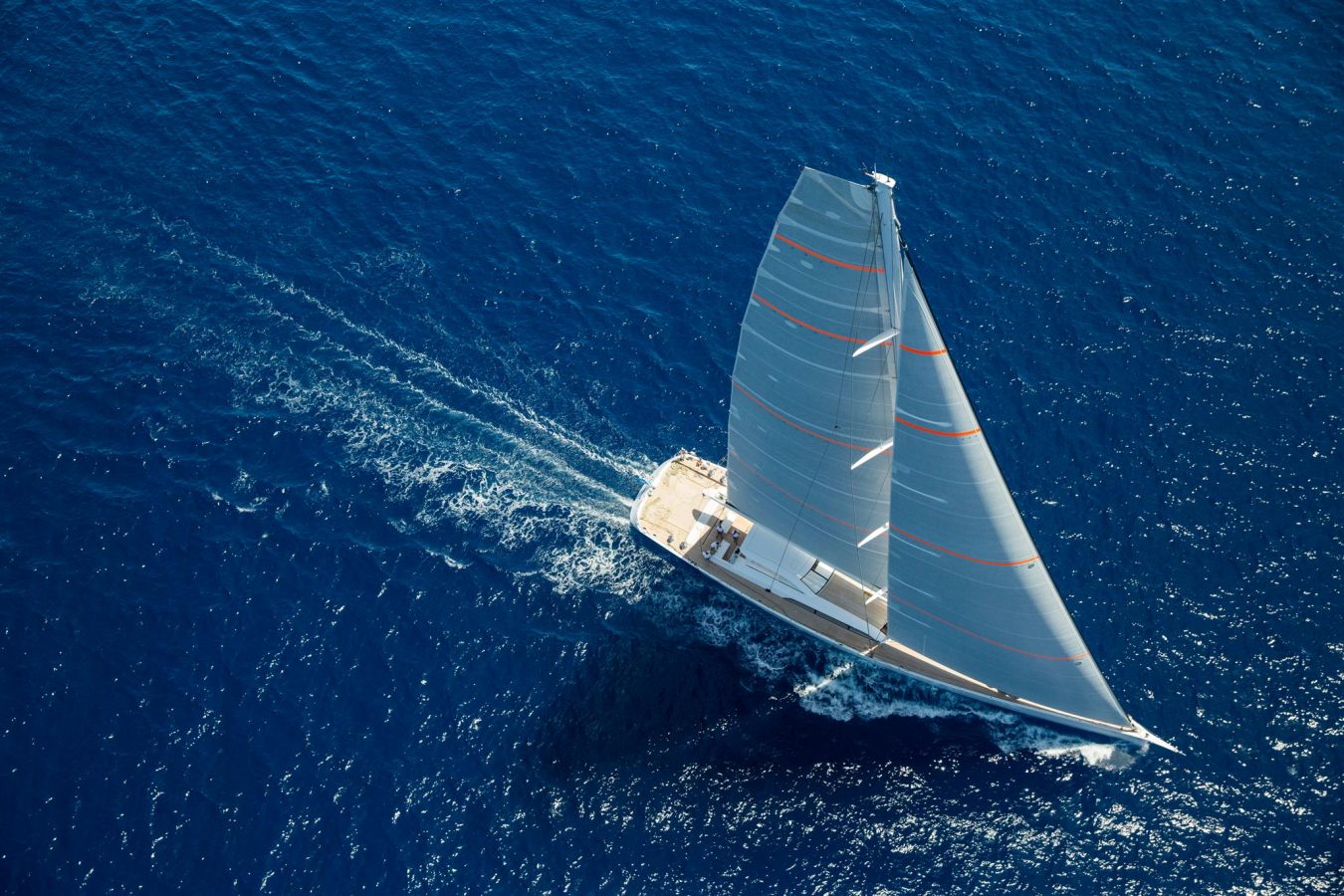
PALMA SUPERYACHT EXPERT JOINS NORTH SAILS
PALMA SUPERYACHT EXPERT JOINS NORTH SAILS
Quinten Houry joins North Sails in Palma to offer customers unrivaled products, technology, service, and expertise
North Sails today announced that Quinten (“Quinny”) Houry has resigned from Doyle Palma and has joined North Sails. Furthermore, Doyle Palma informed North Sails that they have given notice to Doyle Sails International LTD to terminate their license agreement. The former Doyle Palma business will become a wholly owned loft within the North Sails Group once the 90 days notice period has been completed.
Quinny is part of dynamic team of experts including Fiona Bruce and Russell Thom, all of whom are amongst the leaders in their fields within the Superyacht community. The consolidation of operations, personnel, and expertise in Palma strengthens North Sails presence in the heart of the European Superyacht community.
“Over the last seven years our loft and North Sails have competed on and off the water but with a common initiative of providing the best service to our customers” commented Quinny. “My thinking and approach to sailmaking are in line with the North brand, and I am proud to join a company who shares the same vision. Joining forces merges our wealth of experience and knowledge, and will strengthen our global Superyacht support and products. Beyond service, North is unique with their offering of 3Di. Their technology is innovative and intelligent, and I am looking forward to offering the industry-leading product to my clients.”
“Quinny joining North Sails adds another Superyacht expert with a wealth of experience to our team,” commented Scott Zebny, Superyacht Sales Manager based in Palma. “He is passionate, customer-focused and is highly respected in the Superyacht circuit. I admire what Quinny, Fiona, and Russell have achieved as our competitors and it’s a big win for North Sails to have them join our team.”
“We firmly believe that the thing that matters most in our business is the client,” said North Sails President Ken Read. “Quinny, Fiona, Russell and their entire team share our “customer first” mentality that is the bedrock of North Sails. Combine this ethos with the longevity, weight savings, strength and overall performance that our revolutionary 3Di product line gives all styles of sailing yachts, and you have an unbeatable package that our customers will love.”
Backed by over 60 years of experience, North Sails is the market leader in the Superyacht world. North’s team of Superyacht experts utilize design and product innovation to find solutions to outfit the world’s largest yachts. The North Sails network includes seven wholly owned manufacturing facilities and 110+ Certified Service Centers, including 16 dedicated Superyacht service lofts. Superyachts rely on this global network of North Sails experts to actively support their adventures and, the addition of Doyle Palma will deliver an enhanced service standard for even more clients.
© Stuart Pearce
READ MORE
READ MORE
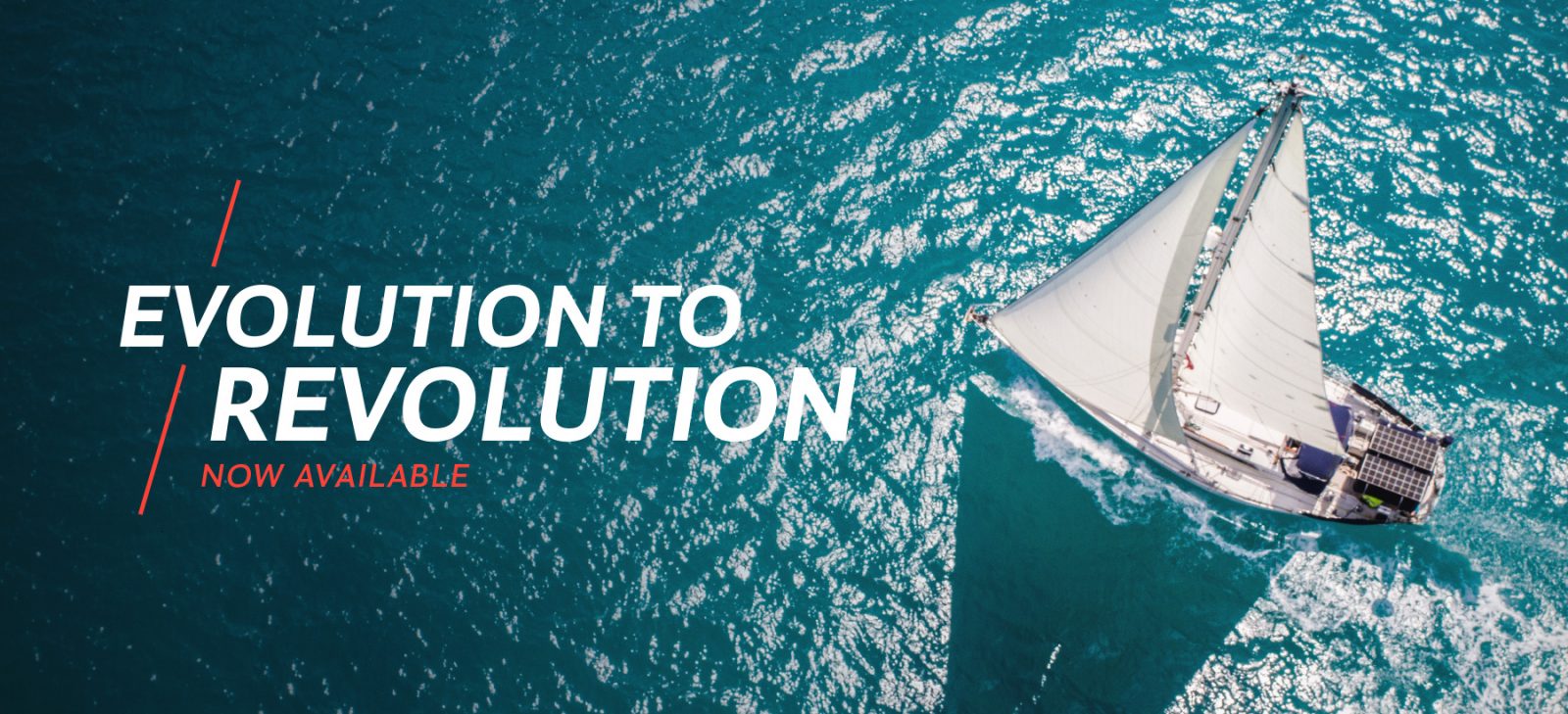
3Di NORDAC – VERDENS BESTE TURSEIL!
3Di NORDAC – VERDENS BESTE TURSEIL!
3Di™ er en helt unik måte å bygge seil på som har tatt Grand Prix regattamarkedet med storm.
Faktum er at seilene varer lenger, tåler mer og holder fasongen bedre enn noe annet seil. Mange spør hvordan det beste regattaseil også kan være det beste turseil? Godt spørsmål! Svaret ligger I teknologien. Den går ut på at seilet støpes av filamenter og ikke tråder eller bunter av filamenter som vi har sett til nå. Videre støpes filamentene på hverandre i en homogen støp og ikke som i laminatseil hvor trådene limes mellom 2 lag. Forskjellen mellom 3Di seil til regatta og tur ligger i valg av fiber og mengde fiber. Slik at pris, soliditet og holdbarhet blir samsvarende med den enkelte kundes forventninger og krav til seilets egenskaper. Her kan du lese mer inngående om 3Di-teknologien.
3Di NORDAC
Vår praktiske erfaring med 3Di Nordac er at det gir det mest solide turseil. Det tåler fuktighet, blafring, sol og salt sjø bedre enn noe annet tur-alternativ. Samtidig gir det din båt bedre seilegenskaper gjennom bedre fasongstabilitet. I praksis vil du og din familie erfare mindre krengning i rossene og bedre fart under alle forhold, altså en tryggere og mer komfortabel båt.
Kurt-Arne Mosand - 3Di NORDAC
Disse seilegenskapene setter deg også i stand til å vinne regattaer, som Kurt-Arne Mosand med sin Grand Soleil 40R.
3Di NORDAC - Storseil
3Di NORDAC - Rullegenoa
READ MORE
READ MORE
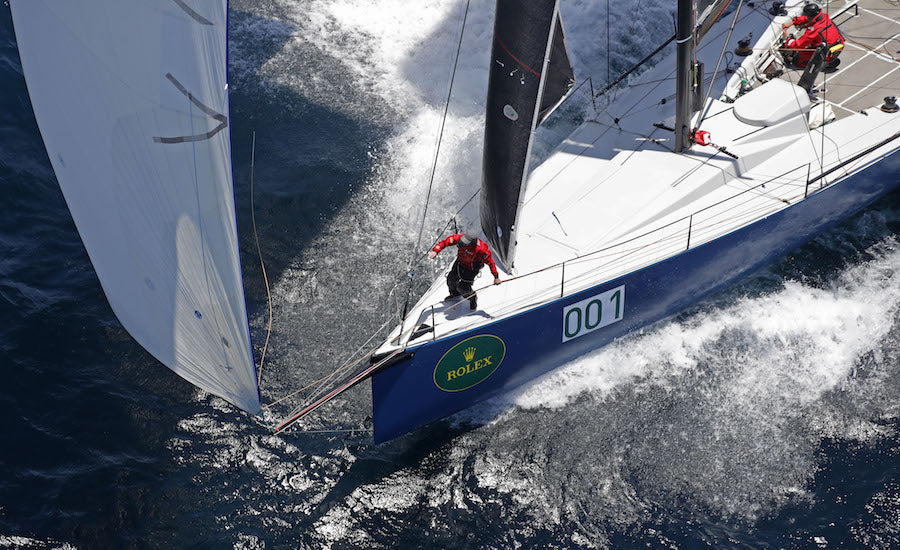
SPEED READING : OFFSHORE RACING
SPEED READING : OFFSHORE RACING
North Sails Billy Sykes shares tips for racing offshore long distance
© Rolex / Daniel Forster
Billy Sykes joined Matt Allen for the 2017 Sydney-Hobart. Matt won this race 34 years ago, and just last year pulled off the overall corrected time win, where he was awarded the prestigious Tattersall Trophy. Over the course of the race, there were lessons learned but the overall experience was something the skipper and crew had well-prepared for. Billy shares his top five tips for doing a long distance offshore race based off his latest experience on the new TP52 Ichi Ban.
Build your team with intent.
Each crew member wears multiple hats. Going into a distance race, there will be times where the crew has to get some rest. Usually the crew will divide into shifts or groups to make this possible. While some of the crew is resting down below, the others are racing the boat to its full potential. During this time, you wouldn’t wake up your crew to come out on deck for a sail change, you’d simply execute it with the crew that was ondeck for that shift. Building your team with intent to let everyone take turns for each job is the reality of a long distance offshore race. There isn’t just one bowman. There isn’t just one kite trimmer. Having each crew member understand all positions, it makes the team stronger and contributes to the team’s overall success.
© Rolex / Daniel Forster
Make sure your crew is comfortable and confident at the helm.
For an offshore race, it is crucial that all crew members can steer the boat with confidence. In our case during the Sydney-Hobart, Matt made sure all the trimmers were happy steering the boat so by the time we started the race, we all felt we knew the boat well. Over half the crew ended up helming over the course of the race so this preparation was critical. In big breeze downwind with the our biggest masthead spinnaker up, being able to change who was at the helm every hour was a fundamental piece of the success – everyone on our crew knew what to do so they were quick to make decisions and comfortable executing maneuvers.
“Matt did a great job making sure all crew members could steer with confidence during the Sydney-Hobart. It was very challenging to steer the boat downwind in these conditions. The best for us was that we just kept pushing her hard, we never took the pedal off. Running at 24-30 knots with essentially our biggest masthead spinnaker up was so challenging, it was two stand-out helmsman in those conditions who took the tiller and did an exceptional job.”
Choose your inventory wisely.
During the Rolex Sydney-Hobart Race the sea-state was tremendous. Going into the race you have an idea of what to expect, and after do-diligence, you can be more assured you know what you need to get you to the finish line. Accounting for the wind directions, weather systems, and points of sail that you will likely be on helps determine what you want to have on hand. For most offshore racing, the navigators will try to get the boat into the best current that would lead you in the right direction of the mark. Sometimes however, that doesn’t help the sea-state factor you will experience, which can be bad and unavoidable in some cases making the sail choices, and range of each sail even more important.
“Ichi Ban’s main took an absolute beating during the Sydney-Hobart last year. The sail was still perfectly fine, holding up to that type of wind pressure with no problems definitely shows what an exceptional product 3Di is.”
© Rolex / Carlo Borlenghi
Know your inventory and know how each sail works.
Knowing what sails you have onboard, and when to use them is of most importance. Always keep in mind you may need one in a pinch. Choosing sails is like deciding tactics. Depending on what you have onboard that you can put up also dictates what sort of tactical maneuvers are possible with your given sail choice. Another part to this is that good sail management and some well-timed eases on the kite sheet prevented damage to our sails.
“We all talked about the sail options we were going to bring a few nights before the start. We talked about combinations and racing style and what was going to work best. Essentially, I wouldn’t change anything that we took when we left Sydney Harbour.”
Having an owner who sets expectations and is hands-on during the planning process.
Having a confident owner is very important. Matt was very involved in choosing his sail inventory before the race. He knew what he wanted and that helped our team aid him in getting the right sails for the boat. Matt was there every step of the way to make sure we constructed the headsails and spinnakers out of the strongest materials possible so his inventory could handle a wider wind range. Our entire team here in Sydney worked hand-in-hand with Matt on this; the mainsail, headsail, and the spinnakers. We especially took some time to consider what DPI we were going to use for each upwind sail. Matt knew what he wanted, knew what he needed, and we were there to help him get exactly that.
“The planning, thought, and research that Matt and the team did before the build even started made Ichi Ban the race winning boat it is today.”
For the Sydney-Hobart race, Ichi Ban was equipped upwind with 3Di RAW 870 offshore mainsail, J2.5 3Di RAW 870, J4 3Di 870 ENDURANCE, 3Di RAW 760 FRO. Downwind she had the options of A2+. A3. A4, and A6. She also had a genoa staysail, made of 3Di RAW 870, and a spinnaker staysail.
Ichi Ban‘s most frequently used sail was the A4 and genoa staysail. Her fastest speed recorded was 26 knots with an average speed of 16 knots.
© Rolex / Carlo Borlenghi
READ MORE
READ MORE
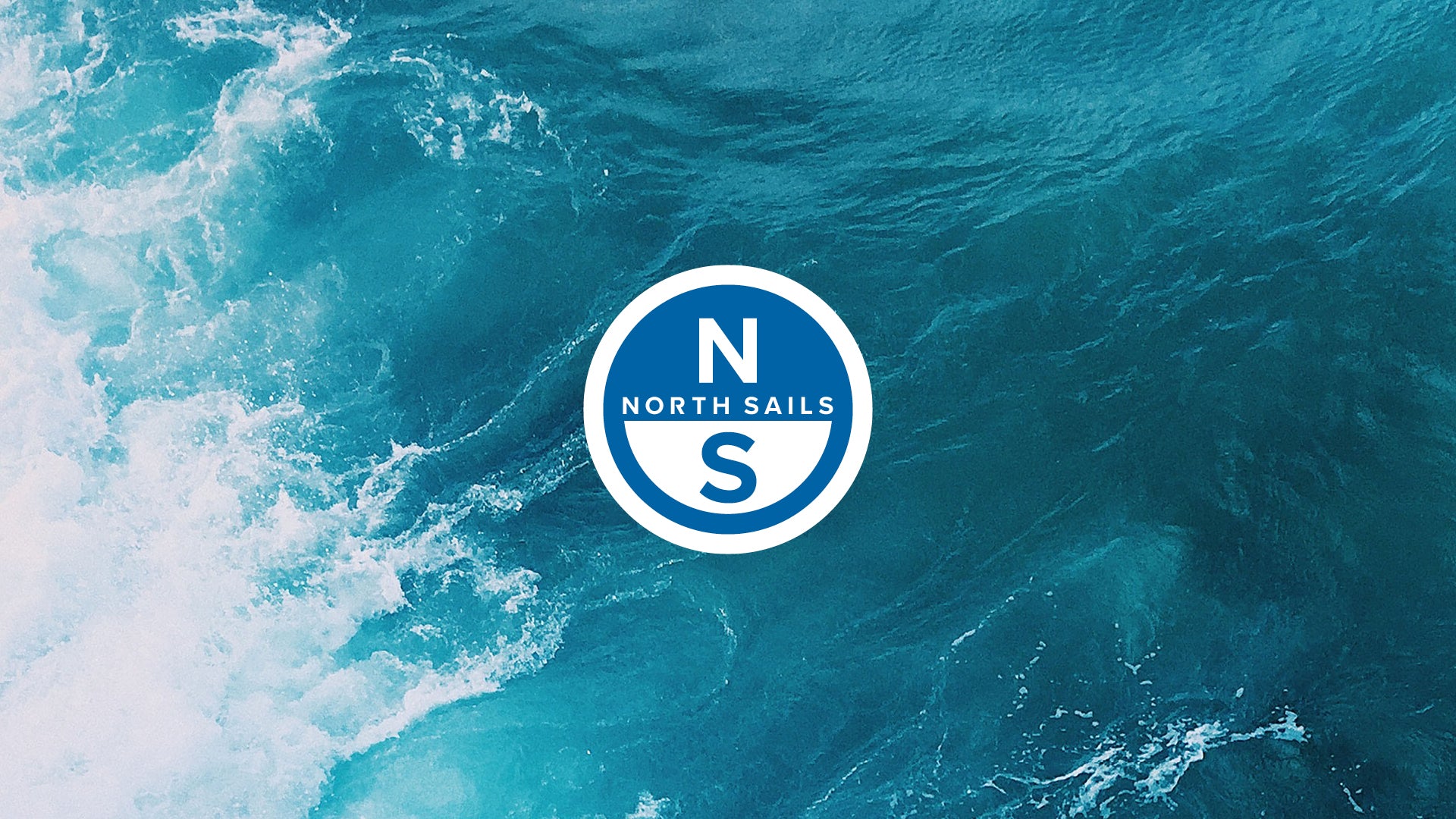
J105 SPEED GUIDE
North Sails class leaders Will Keyworth and Seadon Wijsen answer your J105 speed and boathandling questions, including the coolest thing about the class.
Who sails a J105?
As the first keelboat with a retractable bowsprit, the J105 was a breakthrough when Rod Johnstone designed it for J/Boats in 1991, and nearly 700 boats were built. Because it has relatively small jibs and spinnakers and a displacement hull, the boat is easy to sail, yet it still delivers excitement in a breeze. Teams frequently include more women and youth sailors than other classes, and we find that it’s a great platform for a sailor with modest experience who wants to compete, but doesn’t have a super crew pool to start.
If you climb aboard with three sails and an enthusiastic crew, you can quickly learn to jibe the chute. It takes a while to learn to get the most out of the boat when it’s underpowered, under 10 knots of wind, but that may be why the best sailors in this class tend to be the most persistent, gradually becoming more competitive. The class has restrictions on pros participating, which has combined with the boat’s simplicity, all-around performance, and large fleet to give it staying power as a class.
The J105 combines simplicity with all-around performance and large fleets.
What’s involved in crewing?
Most teams sail with five or six sailors, and they include many husband-wife teams. There is no limitation on the number of sailors aboard; the total crew weight allowed is 474 kilograms or 1,045 pounds. In windy venues, such as San Francisco Bay, most teams sail at maximum weight, and those with less weight and less strength make up for it by adding the sixth person.
We recommend recruiting a strong bow person to work the spinnaker around in jibes and pull it down at the leeward mark, and if they’re a little heavier than the typical bow person, it doesn’t seem to slow the boat down. On the other hand, the winches are adequately sized and the mainsail has enough purchase, so trimming isn’t overly physical, which means for those farther aft, quickness and the agility to move around is often more important than strength.
Top three J105 speed tips?
Spend time in the boat with a committed core crew.
Learn appropriate sail trim and rig tune, especially when windy.
Prep the hull and rig, clean the bottom, and save your best sails for big events.
What should buyers know when choosing a J105?
J/Boats isn’t building new boats currently due to low demand. Used boat prices range from $45,000-$90,000, and most are between $60,000 and $70,000. On older boats, you’ll commonly replace winches, the boom, and maybe the sprit.
We see that top competitors in the class often seek an older boat built before production shifted to the SCRIMP (resin-infusion) method, because the boats are considered a little stiffer, with less weight in the hull and deck. By rule, the first 400 pounds of corrector weights on light boats can be added down low, although not in the keel sump. J/Boats points out that this “class wisdom” may be overstated because much of the SCRIMP boats’ weight is in a substantially heavier keel grid. They also point out that the hulls have more laminate stiffness and are less susceptible to water penetration in the core, particularly in the deck—a problem that needs to be addressed in many older boats.
One of the other big decisions is whether to buy a boat with a wheel or tiller. Many like using tiller steering due to its lighter weight and feel, but in a heavy-air locale, almost everyone chooses wheel steering for better control. Both configurations win regattas, so our recommendation is that you choose whatever you are most comfortable using.
Finally, it’s worth noting that J/Boats built a number of shoal-draft J105s over the years; you’ll want to buy one with a deep-draft keel to go racing.
How do you move a J105 around to regattas?
Double-axle J105 trailers are prolific in many regions as owners commonly trailer boats to events. If needed, you can often borrow a trailer. It’s not unusual for boats from both New England and California to meet at a regatta in the middle of the country. That doesn’t mean that rigging a boat is super quick. It takes most boat crews a day to get a boat ready to travel and another day to go back in the water.
How many sails are required?
The J105 class allows you to sail with two jibs, two spinnakers and one main, but the spinnakers are identical, so the second is typically an older kite kept as a spare. Sails can be changed between races, so a boat with a light and medium jib will switch sails as the breeze builds. In broad terms, a light-air jib is used in 0 to 10 knots, the medium covers 8 to 16, and the heavy can be used in 14 and above.
If the water is relatively flat, the medium jib will provide good speed in most winds strong enough to start a race. Because boats often come with a large inventory of used sails, many new owners find they can buy a new main, spinnaker and medium jib and be competitive, with older sails used for low-key races or daysailing.
The class sail-purchase limits are reasonably liberal. You can buy three sails in one year and then two sails, the next. The mains must be made of woven Dacron and may be made of heavier cloth for windy venues like San Francisco where they are subject to a fair amount of flogging. Laminated jibs are permitted, which includes recent approval for North’s more durable 3Di sails—both medium and light-air jibs. (See North’s J105 sail products)
Leading the jib sheet to the windward winch keeps weight on the high side and allows the mainsheet trimmer to adjust the trim.
J105 Tuning
What are the keys to rig set-up?
When tuning up the J105 to race, we pay the most attention to 1) mast-butt position, 2) headstay sag, and 3) shroud tension on the D1 (lower), D2 (intermediate), cap (upper).
There is only one correct butt position, so you only need to set that once, as per the North Sails Tuning Guide. The guide also explains how to adjust each set of shrouds for different wind strengths. We stress learning about this because shroud tension affects headstay tension and how much the headstay sags under different loads.
Getting headstay sag right is also a little finicky, because the mast sits at different heights from boat to boat, varying by as much as 25mm due to the way the interior pan goes into the hull. To determine your headstay sag, we recommend sighting up the headstay with the backstay off —no more than 4 inches when it’s breezy and closer to 6 inches in light air. If you’re flying a medium jib in light air, you may need more sag, yet not so much that the headstay begins to bounce around in chop. Having enough sag in light air gives power to your jib, but if you have too much and you control it by tensioning the backstay as the wind comes up, you’ll end up over-flattening your main.
Shroud tension also affects mid-mast sag. In lighter airs, you want less tension on the D1 and D2 shrouds so you can see 25 mm of leeward sag in the middle of the mast. In 12 knots and up, you’ll want no sag at all.
What other control systems are important on the J105?
Setting up to cross-sheet the jib (and then practicing your tacks) is critical in windy conditions, as is having good leverage on the vang. You are not allowed to in-haul the jib with the windward sheet, so that simplifies things somewhat. Mainsheets have fine tunes and you’ll find some variation. For example, some are led outboard so the helmsman can play the fine tune. Our view is that this is an area of personal preference and probably not a high priority for you if you’re a new J105 helmsperson. Let the mainsail trimmer handle the job while you focus on steering.
For more tuning tips, read the J105 Tuning Guide
Headstay sag on the J105 is adjusted by means of shroud tension; the sag should be about 6 inches in light air and no more than 4 inches when breezy.
J105 Upwind Sailing
How much heel is fast on a J105?
In general, you should sail the boats pretty flat. A skilled driver will keep it flatter, but most important is to maintain a constant heel angle and consistent speed. If you need more heel to maintain consistency, that’s OK.
Where does the crew sit?
The boats are a bit stern heavy, so we always work to keep people forward and out of the cockpit. This is especially true with wheel boats, which have extra weight aft. If sailing with six, locate one person forward of shrouds; everyone else should be forward of the back edge of the cabinhouse; if sailing with five, sit the forward-most three close together, just behind the shrouds, followed by the mainsheet trimmer when he or she is able to get on the rail.
When the wind lightens, there’s no fore-and-aft position change, just lateral movement, with the jib trimmer moving to leeward first. When possible, we move everyone a half a body width farther forward, with the mainsail trimmer scooting to the front of the cockpit. In heavier air, bring the forward-most person behind the shrouds to keep weight at max beam.
How do you trim the J105 jib?
The key move we make with the jib is to keep halyard tension soft, especially with new jibs. Be sure to put trim stripes on the spreaders as per the North Tuning Guide. The jib likes to be kept twisted, with the leech opened up slightly even as the sheet is trimmed pretty hard. Above 10 knots, you will sheet hard enough that you may begin to get a wrinkle between the tack and the clew. Watching for that is a good way to judge sheet tension. Many people move the lead too far forward because the foot looks abnormally tight, but it’s fast this way. Keep in mind that both jib and main will need to be twisted.
In breeze, the J105 jib is sheeted hard with the lead far enough aft to keep the leech open.
How do you trim the J105 main?
Again, we focus on halyard tension on the mainsail—it’s critical. Until it gets breezy, don’t over-tension the halyard; you should have diagonal wrinkles from the slides on the luff. Also, your outhaul should be tight.
Many people think they should always be streaming their top mainsail telltale, but because the top batten is full length, in reality it’s hard to stall the top. The sails are designed with a lot of twist in them so you can sheet hard as it gets windier. We recommend even in 8 knots that the top telltale should be stalled 60 percent of the time. The extra leech tension has the added benefit of pulling the headstay tighter, too, minimizing headstay sag.
The J105 doesn’t like much heel. From 11 knots up, our team is fully hiked, and at 15 knots, we’re pulling on the permanent backstay and tightening the cunningham. The backstay flattens the main well and begins to twist open the sail again, minimizing heel and weather helm. That’s the real trick on this boat. Set the rig tune so your trim and your backstay work for both sails at the same time. If the headstay gets too saggy and the main gets too flat, you probably don’t have enough cap and D2 tension.
The vang becomes critical in a breeze. In 8 to 10 knots, pull the vang snug. As the boat begins to get overpowered, pull it on firm. When using a lot of twist, it’s time for a two-hand pull, with feet against the cabinhouse. For the sake of your boom and mainsail, remember to ease the vang at the weather mark and let the cunningham off.
How do you shift gears upwind?
Besides hiking when the wind increases, shifting gears begins with adjusting the jib leads—moving the lead aft increases twist in the leech, which makes a big difference. The factory tracks have wide spacing between holes, so drill extra holes, one per inch.
You should quickly move to maximize outhaul on the mainsail, apply backstay as needed, and begin easing your traveler down in the puffs. Don’t hesitate to add a lot of vang tension so you can ease mainsheet instead of traveler; as a rule, the traveler car rarely moves lower or higher than the bench seats on either side of the cockpit.
Who says what when sailing upwind?
We like to have a crew on the rail calling the puffs consistently, so the main trimmer can be proactive in keeping the boat upright. Likewise, calling the waves allows for better steering and easing of sheets in lighter air. Dialogue between the helm and main trimmer is critical—and even more so when using a wheel because the driver is less likely to feel the pressure on the rudder.
The conversation when it’s windy is usually about having more or less twist in the sails. Is there too much helm and we’re going too slow? Twist the leeches. Not enough height? Reduce twist. The best sailor on many J105s is often the main trimmer because she is dialed in to both sail trim and boatspeed.
Keep weight forward and low when sailing a J105 downwind, with two crew forward of the shrouds in lighter conditions.
J105 Downwind Sailing
Where are J105 crew located?
Keep weight forward, out of cockpit. People also tend to stand a lot, but it’s faster to get down, keeping weight lower. On most boats, the main trimmer is at the companionway and the chute trimmer is at or ahead of the forward edge of the cockpit. All others move forward: in 0-8 knots, put two crew forward of the shrouds; in 9-16 knots, they can move just aft of the mast.
The boat likes to be sailed fairly flat and, ideally, the helm goes neutral. If it’s light enough that you’re sailing VMG angles, you’ll have some crew to leeward for a slight leeward heel. In running conditions of 10-plus knots, all crew will move to weather and sail the boat flat. Over 12, you sail with a little weather heel, and when control becomes an issue at 16-plus, the crew slides aft. In 20-plus, a couple guys are sitting in the cockpit.
How do you trim the spinnaker?
On a J105 downwind, the basic moves are to ease the chute as far as possible and rotate it in front of the boat as much as you can. The main should be all the way out and the vang kept soft.
The all-purpose and heavy-air spinnakers are the same size—the latter has bigger corner patches and a slightly different design to maximize projection. On both, the class-legal maximum luff is two feet short of ideal, so we generally sail with the tack line eased. This helps rotate the chute to windward—a good guide is not to ease it more than the height of the pulpit. As the breeze builds, you may trim down the tack line to within a foot of the pole.
The key to speed is the conversation and coordination between helm and trimmer. In light air, we look for an angle where the boat feels good, with slight heel to leeward. The mistake that people often make is to heat up the boat too much in lulls and soak it too low in puffs. You need to smooth that out. Yes, you do scallop your way down the course, but do it gently. The good guys gain a lot this way, and for everyone else, this is one of the best areas to practice and improve.
How do you shift gears downwind?
The key transition downwind is in 9 to 11 knots, learning when you can sail deep and when to keep the boat sailing higher and faster. The tack line on the spinnaker is a good focal point for this: If the tack moves to leeward of vertical, pull the tack line toward the pole; if to weather, ease it out, with a total range of two or three feet.
Another way to think of this is that in light air, when sailing VMG angles, the tack line is pulled towards the sprit and the main is trimmed for the angle. In medium air, when sailing deeper, the tack line is eased the most. Then, when control is an issue, tighten the tack line, which keeps the chute from oscillating.
Another downwind tip is to “fraculate”—taking slack out of the headstay by trimming in the sheets on the rolled-up jib. This firms up the backstay and transfers the energy in the sails more directly to the hull.
Near a leeward mark or at a finish line, you can also sail wing and wing, with the spinnaker on the opposite side from the mainsail. This takes practice and should be reserved for tactical situations, say the last five or six boatlengths to the mark. You can sail lower and just as fast, but don’t try it for extended periods; you risk collapsing the chute and losing more distance overall.
In 12 knots of breeze, most J105 crew stay out of the cockpit and at or just aft of the mast. To "fraculate" or keep the rig steady with backstay eased, tension the jib sheets to remove headstay slack.
J105 Boathandling
What are your top tips to starting well in a J105?
The J105 has a big keel and rudder, so you can sail pretty slowly before the start and not slide sideways much when you accelerate. However, the boat takes time to get up to speed. Practice accelerating from half speed to full speed before each race to learn how long it will take. Never let the boat stop or get too far from the line.
You’ll see many J105 teams wait to unfurl their jib in the last minute before starting, because visibility is better and, without a luffing jib, it’s easier to hold position on the line. When doing so, keep your bow at a fast angle to the wind so you can unroll the jib and accelerate quickly. The one time we never keep our jib rolled is when the wind is really light—if you get totally parked, the rest of the fleet may be long gone by the time you get moving.
What are the keys to tacking a J105 well?
Tacking the jib is pretty easy because it’s not a big sail, so you only need two trimmers in the cockpit. The other crew members go over the coach roof and keep their weight forward. This also gives the helmsperson more visibility.
How the trimmers work depends on whether your jib sheet 1) leads to a footblock and a leeward winch, 2) to a footblock and a windward winch, or 3) directly to a cabintop winch.
In light air, the cabin top winch set-up can be handled by the jib trimmer and the next person forward, and this has the advantage of keeping weight forward. However, those winches aren’t set up for breezy conditions.
We prefer sheeting to the primaries and having the main trimmer handle the jib-sheet release. The jib trimmer is the next person off the rail and trims the new sheet. This is also where cross-sheeting really pays as the jib trimmer is immediately moving to windward, not grinding away down to leeward. The main trimmer can then help out by dropping in the winch handle and doing the final trim after the jib trimmer starts hiking.
Most boats have self-tacking traveler cars. When tacking, the main trimmer can ease the mainsheet fine tune a little, release the jib, pull up the traveler, and then drop the handle in for the jib trimmer (if cross sheeting).
So the boat can accelerate, don’t bring the jib in too hard right away. Put multiple marks on the jib sheets to line up with the base of windward winch (if cross-sheeting), and after trimming to the first mark, the jib trimmer can hit the rail and the final five inches of jib sheet can be ground in by the main trimmer.
What are the keys to jibing a J105 well?
A good J105 jibe is a dance between the rates at which the driver turns the boat and the trimmer eases the spinnaker. As the boat bears away and the sheet is eased, the driver needs to watch the clew of the chute; when it gets to the headstay, the boat can be turned more quickly as the new sheet is taken up quickly. If you turn too fast without easing the sheet enough, or if you turn too slow, the chute ends up on the windward side of the headstay when the turn is complete.
On many boats, especially in lighter-wind areas, one trimmer will handle both spinnaker sheets. On other boats and in more breeze, it’s common to have two sheet trimmers for more consistency in ease and take-up. Either way, the foredeck person and sometimes others drag the new sheet around the headstay and aft. It’s important to pull the chute through the jibe this way to avoid a twist, then get to the high side quickly to help the boat accelerate. Keeping crew weight on the high side before the jibe will also help the boat turn.
In light-air jibes, don’t turn the boat too fast or pull the main across too soon. Jibe the spinnaker first. Then the mainsail trimmer should grab all parts of mainsheet and “pop” the main through to keep the upper leech from hanging up on the backstay. In heavy air, on the other hand, don’t take too long to get main across. Get it across while the boat is at full speed. Otherwise you may have to turn the boat too far to get the main over, and then you may round up when you finish the jibe. One helpful trick is to ease the vang a little bit.
How do you make a fast spinnaker set?
There are two rules to remember on J105 spinnaker sets: First, the bow must be at the windward mark before the bow person pulls the pole out to extend the sprit. Second, to set the spinnaker successfully, keep it out of the water by not pulling the tack line out too soon.
The bow person begins the set by freeing the chute from the forward hatch. Wait to start the hoist until the boat makes its turn. When it’s windy, as the mast person hoists, both the bow person and jib trimmer pull the tack line out to its mark. Next, the bow person can roll up the jib.
If a jibe-set is needed, there are two approaches you can take: one is to re-rig the chute on the correct side of the boat and hoist as the boat jibes. The other option is for the bow person to walk the clew around the headstay during the hoist, or even before you hoist.
Sailing wing and wing with the spinnaker can be a useful tactical move; keeping weight forward in light air is always faster.
What are the keys to a good spinnaker takedown on the J105?
Most people douse the spinnaker to windward. Leeward drops are harder, in part because the chutes are wide and easy to shrimp (drop in the water). Either way, if you make sure to have room to turn the boat downwind, any takedown will become easier.
On a normal windward takedown, after the jib is unrolled, the helmsman bears off and the trimmer eases the spinnaker sheet. The bow person pulls (aka “tractors”) the clew around to the windward side of the jib as the halyard starts to come down. One crewmember stands below and pulls the chute through the forward hatch. If it’s windy, don’t blow the tack line too soon to keep the chute clear of the water—make sure the spinnaker is collapsing and that two crewmembers have a good grip on the material.
On a leeward takedown: the bow person grabs the lazy sheet and with the crewmember below pulls the chute under the jib and down the hatch. On these drops, don’t release the tack line until the sail decompresses and you’re able to pull the spinnaker straight down.
What are the most common takedown mistakes?
The most frequent error we see is simple—the spinnaker sheet isn’t eased enough so the bow person can’t pull the chute around the jib. The other one is also simple—if you do shrimp your kite, you must completely stop the boat before you can pull it back aboard.
How do you recover from a broach?
Most broaches don’t last long; once you ease the spinnaker sheet, the boat will pop back up. Remember to ease the main and the boomvang as you start to broach, and your recovery may be immediate.
What J105 best practices do you recommend?
Set daily objectives. Evaluate after sailing so you can step forward next time.
Identify crew responsibilities.
Mark everything so you can duplicate settings, especially jib leads and sheets.
Practice tacking and jibing; choreograph movements so you repeat them every time.
Document rig tune and settings.
What’s the coolest thing about the J105 class?
The J105 class is very friendly and well-organized. You’ll find some really good technical sailors who know about rig tune and are willing to share knowledge. We recommend new people in the class find a more experienced buddy and ask if you can sail together at events. Watch, observe, ask questions, and you’ll improve steadily.
READ MORE
READ MORE
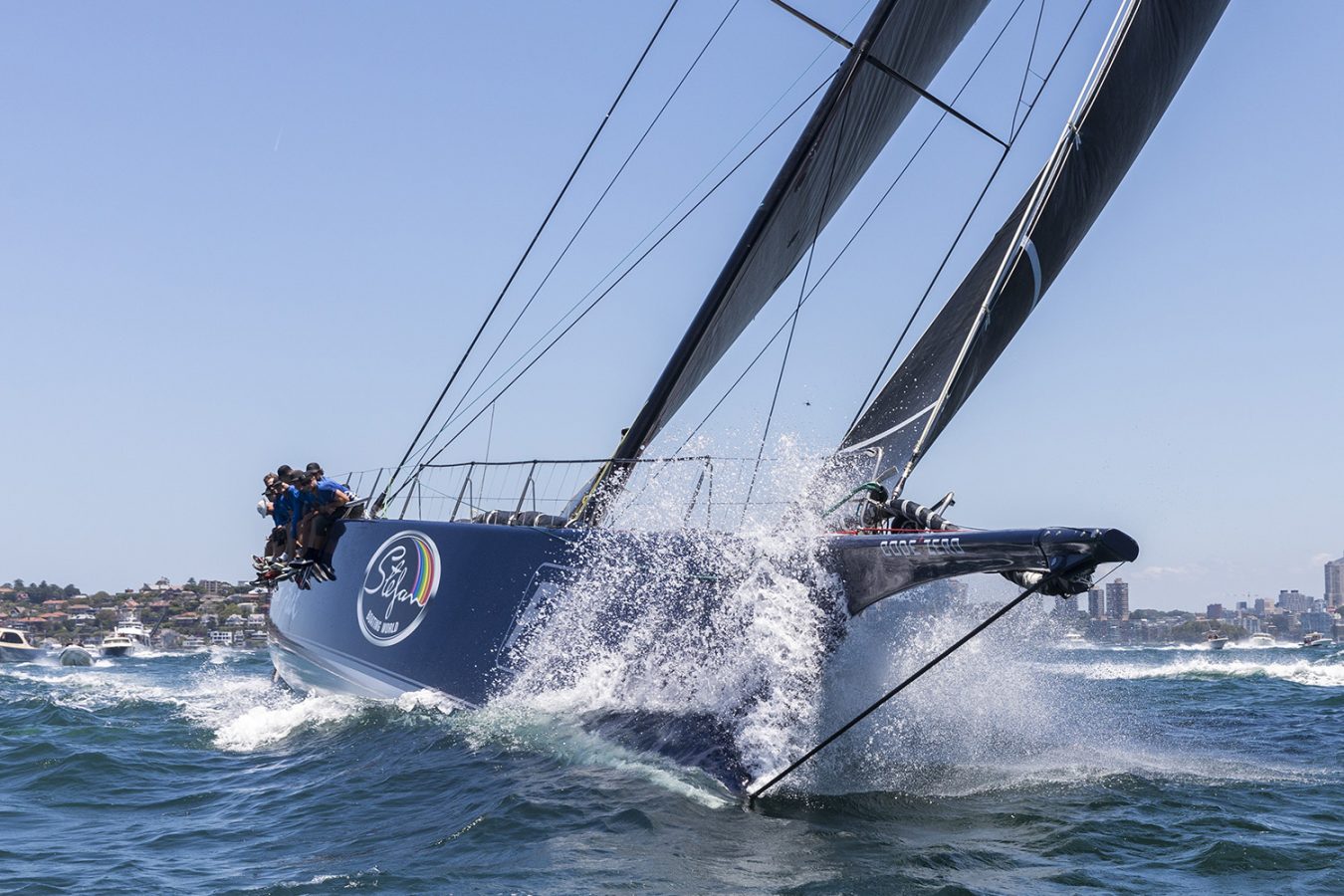
SYDNEY HOBART : REFLECTIONS
SYDNEY HOBART : REFLECTIONS
Clients share their experiences in the 628nm race to Hobart
Clients reflect on their 628 nm race to Hobart from Sydney Australia in one of the most grueling yacht races in the world. Here’s what they had to say about the race, their crew, and their sails.
Alby Pratt- Infotrack -Juan K-100-Christian Beck Supermaxi Infotrack, formerly Loyal, was the Sydney Hobart record holder in 2016. 2017 was the first Hobart for new owner Christian Beck. The heavy running conditions did not suit the boat as well as last year’s reaching did, but a great crew lead by Tom Slingsby pushed the boat hard and kept the big black bus right up there with downwind flyers such as Wild Oats, Comanche and Black Jack. Infotrack broke her record from last year, further proof of what incredible conditions we had for the race. Look out for this boat! © Andrea Francolini
Aaron Cole – Concubine – Mills 45 – Jason & Shevaun Ward The Concubine team enjoyed what was probably the fastest ever trip to Hobart on a 45 foot yacht: 1 day 23 hrs 19 mins for 630 miles! We had amazing conditions, three sail reaching that turned into fresh VMG running from late the first afternoon all the way to Tasman island, and then a fast reach across Storm Bay. Good sail management and some well-timed big eases on the kite sheet meant we never damaged any sails during the race, which was absolutely key to a great result. Going by the talk at the Customs House Hotel,. not many teams could say this! Thanks to Jason, Shevaun and the team for a great ride to Hobart. © Rolex / Studio Borlenghi
Billy Sykes -Ichi Ban TP52 -Matt Allen (cut from web article) Matt Allen, a long-time North Sails customer, first won the Rolex Sydney Hobart Race 34 years ago. In 2017, he finally repeated the achievement on Ichi Ban when they were named overall winner of the Rolex Sydney Hobart Race. It was a fitting honor for a boat whose name translates to “number one” in Japanese. The win this year was even sweeter considering that Matt’s new TP52 is only three months old, which always brings the opportunity for things to go wrong because gear has not been tried and tested. But we managed to put all those things behind us and come away with the win for Matt, which was a great thing. © Carlo Borlenghi / Rolex
Matiu Te Hau -Triton- LC60 – David Gotze The Triton crew had very little time on the water together, but we came together really well during the race. The new main came through some heavy air gybes at night. A couple highlights: doing the race in under two days, passing four boats on the run up the Derwent, and sending it in 25-30kts and flat water. @Rolex/ Borlenghi Studios
Ian Johnson- Extasea -Paul Buchholz It was a great ride south on the DK 46 Extasea. The downwind boats soon left us in their wakes, but we had plenty of company with a fleet of Clipper boats shadowing us all the way to the finish. On our last night we ended up with a 25 knot southerly, testing the new heavy 3Di jib designed for ocean conditions. When the cold front quickly faded, we were becalmed off Tasman Island for several hours. I love seeing Tasman Island and it is always a highlight, though I was wishing for it to go away! Thanks to all the team and owner Paul Buchholz for a great race south. © Rolex / Carlo Borlenghi
Nick Beaudoin -Patrice – Ker 46 -Tony Kirby This year’s edition of the annual Sydney to Hobart yacht race was one for the record books. Many could not believe that for a second year in a row, hard running would dominate the majority of the race. As we rounded the sea mark, the crew set our new 3Di cable-less Code Zero and triple-slotted our way south. The breeze eventually backed and we peeled to an A2, then promptly changed to the A4 as the pressure filled in and pushed hard down the south coast all night. Crossing the Strait the following day was champagne sailing, as we peeled back and forth between masthead and fractional spinnakers. Along the East Coast of Tasmania, the clouds and the sea mist rolled in and made for a stressful night of hard running. When we rounded Tasman Island at first light, we were ahead of many larger boats. The excitement soon faded along with the breeze as we slowly made our way across Storm Bay, and then up the Derwent to finish strong. Tony Kirby was overjoyed with a Division 2 win, 3rd place overall, and first in the prestigious Blue Water point score. © Andrea Francolini
Mark Bradford- Blackjack- RP100- Peter Harburg The 2017 Sydney to Hobart lived up to its nickname as “The Great Race.” Thanks to some slick crew work, boat speed and tactics, we had a fantastic start and led out of the heads. Unfortunately the first part of the race was stability sailing, giving the upper hand to Comanche and Wild Oats. A boat speed race decided the turning positions at Tasman Light. In the tricky last stages, we felt we were still close enough to the action to pull things back but fell just a bit short. A fantastic result for our team, posting the third fastest time ever and breaking the previous record. I highly recommend this race to anyone who has a keen interest in the sport of sailing and a sense of adventure….We will be back next year! © Andrea Francolini
READ MORE
READ MORE
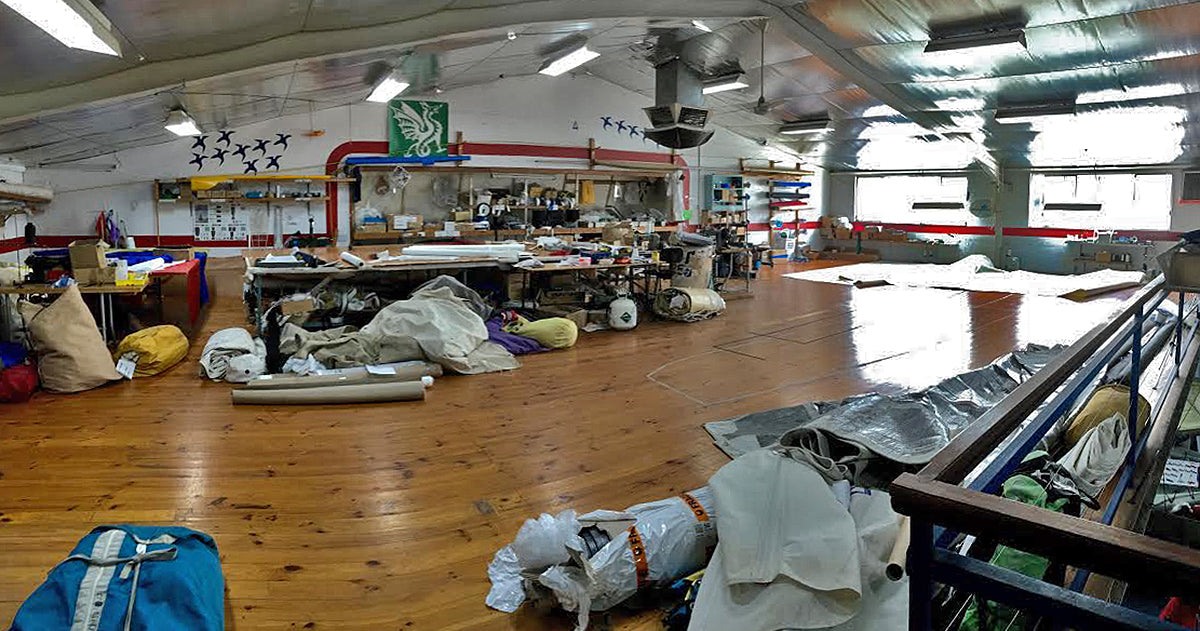
NORTH SAILS BRISBANE JOINS THE NORTH SAILS GROUP
NORTH SAILS BRISBANE JOINS THE NORTH SAILS GROUP
The Local Agent is purchased by North Technology Group
The North Sails Group is pleased to announce that North Sails Brisbane will become the latest loft to join the company. Founded in 1993 as Bradford Prentice, the loft set up by Mark Bradford and Vaughan Prentice has long since established itself as the largest sailmaker in Queensland and since 2001 they have been operating as a local agent of North Sails. Following the 2017 acquisition of North Sails Australia, which included both the Sydney and Melbourne businesses, today’s announcement sees the Brisbane team join the Group as a fully serviced, North Sails loft.
The loft has manufactured, sold, and serviced thousands of sails up and down the Queensland coast. The team pride themselves on their ability to understand their clients needs and find a sail solution that works for any size of boat, from the smallest dinghy through multihulls, right up to the racing super maxis and everything in between. In line with the North Sails Group ethos, the acquisition of the loft is aimed at giving customers an enhanced experience – while still dealing with Mark, Vaughan and the team on the ground they will also benefit from the shared technology and wealth of knowledge from within the Group. The growing global company, well known for its revolutionary North 3Di sails, has a network of lofts unrivaled by any other sailmaker in the world and continues to invest in innovation and technology, which in turn creates the market leading sails clients have come to expect.
Mark Bradford commented:
“Vaughan and I have greatly enjoyed setting up and running what has become North Sails Brisbane but we are hugely excited by this next step to giving our clients an even better service. We want to make sure that anyone that walks into our loft ends up with a sail perfectly suited to their sailing needs and part of that is making sure we are at the cutting edge of new technologies and able to offer the latest and greatest sails possible. We believe by joining the North Sails Group we can do that and all the staff at North Sails Brisbane are hugely looking forward to all that this new stage will bring.”
Ken Read, North Sails Group President commented:
“The core of our whole business is understanding the local culture and sailor by delivering sail solutions that exceeds their expectations. We are delighted that North Sails Brisbane is joining North Sails Group helping us to further develop our network and enhance our global customer experience. As we continue to push the boundaries of technology and put a huge amount of focus into research and development, we are excited to be able to share this with our lofts and customers around the world. I am delighted to welcome Mark, Vaughan and their team to the North Sails Group and look forward to working with them in the coming years.”
READ MORE
READ MORE
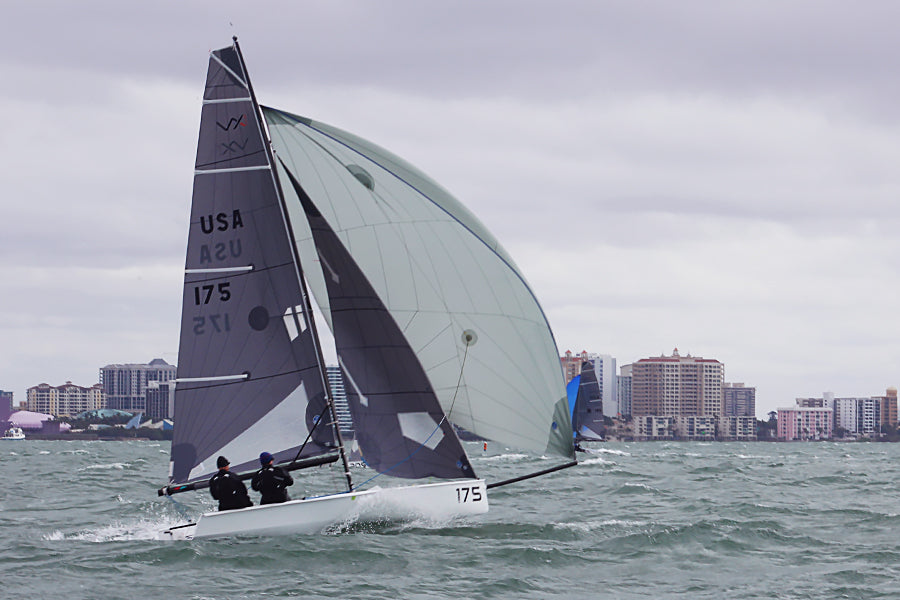
VX ONE MIDWINTERS CHAMPIONSHIP
VX ONE MIDWINTERS CHAMPIONSHIP
North Sails powers clients to the top in big breeze on Sarasota Bay
The VX One Midwinters, hosted by Sarasota Sailing Squadron, was a wet and wild one with strong breezes ranging between 15-18 knots giving sailors a thrill all weekend long. Sailors felt the need for speed in this fun and exciting one design class, hiking hard in the fight to be number one at the end of the day. North-powered clients deemed to be fastest, placing 1, 2, 3, 4, 5, 6*, 7, and 9th out of 23 teams. North Sails VX One expert, Jackson Benvenutti joined Richard Heausler’s team Second Line placing second overall, just two points away from first place finishers Jeff Eiber, on Calvin Ball. Jeff stated: “Going into this regatta I felt very fortunate to have my son sailing with me. So my primary goal was to keep the communication and psychology 100% positive and focus on enjoying our time together both in the boat and onshore. As the regatta progressed we noticed that the more time we spent thinking, looking around, and talking, the better we sailed or at least the easier it seemed to go the right way.
“We were very quick off the wind and having a blast too! Not capsizing in the jibes let us pass lots of boats downwind so we survived the windy day with 11 points. The next two days were in moderate wind so even though we were a little slower upwind with old sails and less weight we were still one of the fastest boats downwind. I was also happy with the performance of our 2 year old, very high mileage North sails. The VX is a very crew weight-wind speed sensitive boat. Of course it feels good to win but I feel an even bigger sense of satisfaction from sailing with my son and enjoying the warm camaraderie of my fellow VX sailors”, said Jeff.
To top off the podium in third place was Sam Padnos on TWD, also very close behind keeping the racing very close and exciting. Saturday was above all the windiest days and many teams experienced a little capsizing exercise during racing. Jackson’s team ended up in the drink a few times, but was still able to hang on to their positioning. Jackson stated,
“Flipping over three times in two races was certainly humbling and a bit of a reality check on our (lack of) weight in the big breeze. But we were in the mindset to live to fight another day and take advantage of the slightly lighter forecast for the next two days of the regatta. That common saying ‘you can’t win a regatta on the first day, but you can certainly lose it’ came to mind. We knew we had a bit of a hole to dig out of, but felt like we still had a chance to do well.”
After the weekend, Jackson reflected on some key points that contributed to his teams’ success over the weekend. Along with not giving up, here’s what he had to say about rig tuning, body placement, sail trim, and the true power of hiking hard.
Jackson’s 10 Takeaways:
1) Make sure the main halyard is all the way up! The mast bends a lot, which makes the mainsail fall down a little bit. Rig a halyard that is a bit thicker than the standard diameter spectra halyard where it goes around the cleat. To achieve this, we inserted a core inside the main halyard about 2 feet long where the halyard fit around the cleat when the mainsail was fully hoisted. This will also help with the line slipping over the cleat and gave us a bit of a better grip to pull it up those last few centimeters. In the breezier conditions, about 80% of the fleet had their halyards slipping below max hoist.
2) Batten tension is crucial and should be monitored to assure that you never have any vertical wrinkles along the batten pockets, especially the full-length battens! Using stiffer battens for the top battens in the main and jib will also help flatten out the top of both sails in the big breeze!
3) Cap shroud tension is important. We actually bottomed out our cap shrouds after 19.5 turns from the base setting, and would have liked to put about another 6 turns on if we could have! Ideally, the shrouds would be a little bit shorter, trimming a 1/2 inch off both studs will help achieve more cap shroud tension. However, you have to turn the lowers as well if you are cranking on the caps. If you don’t, you’ll end up with too much mast bend and over-bend wrinkles in your main, especially when you apply proper vang tension. Not having proper lower and checkstay tension will allow the mast to bend too much, and will actually decrease the headstay tension you are trying to achieve (indicated when the mainsail begins to show overbend wrinkles which extend from the middle of the luff near the spreaders and run towards the clew). Generally, the best ratio of cap shrouds to lower shrouds seemed to be 3:1. That means 1 turn on the lowers for every 3 turns on the caps.
4) In chop the boat sailed well flat with the bow down and the sheets eased, in particular, the mainsheet.
5) When executing the planing/bow down mode upwind with the mainsheet eased to keep the boat flat, the jib cannot be trimmed too hard or else the slot will be closed off. The best way to keep the top of the jib open was to move the sheet down on the clewboard of the jib. Our sheet lived in the bottom 3 holes of the clewboard and felt especially fast one hole up from the bottom in the 15-18 knot breeze. This allowed us to flatten the bottom of the jib, keep the top twisted open, and inhaul the jib properly to the sweet spot (around 6 degrees of sheeting angle).
6) Trimming and easing both sails together upwind proved to be very fast! Easing the jib and main together as a puff hits allowed the boat to transfer the extra wind velocity into forward boat speed without the boat heeling over too much. Plus, this keeps the keel deeper in the water. We found that allowing the boat to go fast forward through the water (instead of trying to ride a puff up with the sheets in and feathering) would make the keel become more efficient, which in turn provided height. In short, your pointing would come from speed.
7) Downwind the boat was very sensitive to weight movement. Being aggressive with your fore and aft movements really worked well. Move forward to initiate planing, slide aft while planing, and then move forward again to prolong planing. In marginal planing conditions, if the skipper has to turn up to keep planing, you should be moving forward. If he has to turn down to keep the boat at the proper angle of heel, you should be moving aft. Sometimes it was possible to get the bow up and over a wave that you might not have been able to get over with a short-lived slide forward.
8) Keep the gears changing! On the last day of the midwinters, the breeze was pretty puffy. This caused the boat to go from underpowered to overpowered very quickly, and vice versa. The key in those conditions is to constantly be looking at the wind that will be immediately affecting your sails and be proactive about the changes in velocity (not reactive)! The jib halyard tension and main cunningham are very easy to adjust and should be adjusted constantly in those conditions. Our boat is rigged up so that the jib halyard and main cunningham are actually the same continuous line. This makes it easy to keep track of where that line is, if I grab one, I have both of them. The adjustments on the luff on both of the sails would range from wrinkles in 50% to completely smooth, which will properly change the shape of your sails for the given wind condition. Basically, the boat will either be overpowered or underpowered, so you want a looser luff when you’re underpowered and a firmer, smooth luff when you’re overpowered.
9) Jib trim downwind is key. I think most people overlook it and focus more on the bigger sails, the kite, and mainsail. However, if the jib is under trimmed, then you are losing power and speed that you could easily have and you’re also dragging the sail through the air which is actually slowing you down! If the jib is over trimmed (which is worse than under trimmed) it completely closes off the slot which then essentially acts as a handbrake to your boat. An over-trimmed jib downwind will kill both the flow over the kite and the flow over the main. Not good! The best jib trim is with the car all the way down on the track, and then trim the sheet so that the top 1/5th of the jib is spilling open and slightly luffing. This trim technique will ensure a few things: the jib is trimmed in a way that keeps the groove wide open downwind so the driver can actively steer to the pressure changes, it will provide extra power in the sail plan to help sail slightly lower, and will keep the breeze flowing through the slots! The jib will need small adjustments every now and then as the boat goes through puffs and lulls. The main point is, don’t ignore the jib downwind!
10) There is no good substitute for hiking hard and good physical fitness. It’s simple, the harder you hike, the flatter you keep the boat, the less you slide sideways and the better the keel works! Hiking hard also means you can sail the boat with a little less weight, which can pay huge dividends on the downwind legs. Being physically unfit not only means you can’t sail the boat to its full potential, but it creates a snowball effect due to fatigue where you can’t make the boat go fast enough, your mind can’t process information as fast, and you make bad decisions. Body-weight workouts are worth their weight in gold in a class like the VX One. Staying well fed and properly hydrated also helps a ton in fighting fatigue. The VX One is a physically demanding boat!
Interested in our products? Contact your local VX expert today!
VX One Midwinter Championship
1
Calvin Ball / Jeff Eiber
2
Second Line / Richard Heausler
3
TWD / Sam Padnos
4
VX One / John Potter
5
Chuck Wagon / Phip Hallowell
6*
Isabelita Con Queso / Christopher Alexander
7
Character 3.0 / Justin Quigg
8
Wild Deuces / Paul Currie
9
GiddyUP / Kevin Gillman
* Denotes Partial North Sails Inventory
Interested in joining the VX One Class?
READ MORE
READ MORE
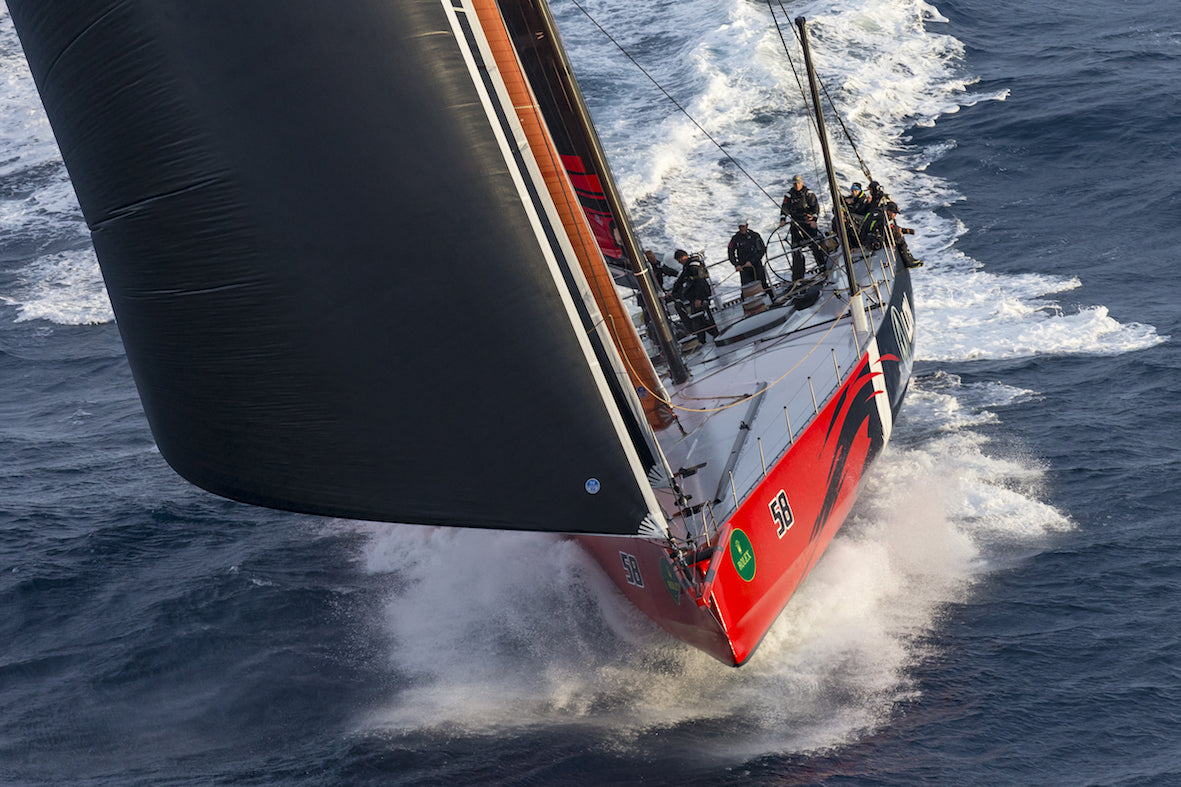
NORTH SAILS LLEGA PRIMERO A HOBART
NORTH SAILS LLEGA PRIMERO A HOBART
© Rolex/Studio Borlenghi
El supermaxi de 100 pies LDV Comanche ha logrado un histórico récord en la Rolex Sydney Hobart 2017. El barco patroneado por Jim Cooney, y dotado con velas North Sails, completó el legendario recorrido de 628 millas en 1 día, 9 horas, 15 minutos y 24 segundos, la mejor marca en los 73 años de historia de la clásica oceánica del Hemisferio Sur. Una flota de 102 barcos participó en la salida desde la bahía de Sídney, una tradición navideña que se celebra ininterrumpidamente cada 26 de diciembre desde 1945. La victoria absoluta correspondió a otro cliente North Sails: el TP52 Ichi Ban de Matt Allen.
READ MORE
READ MORE
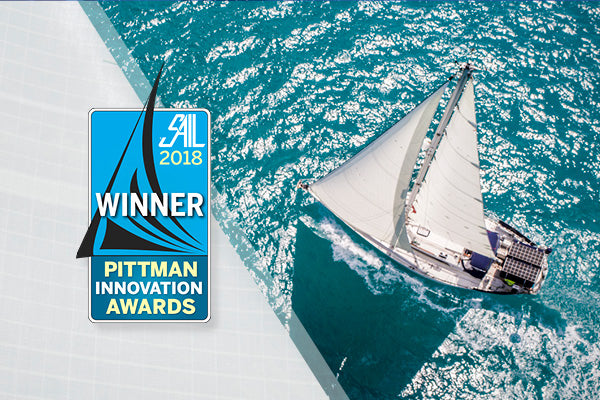
PREMIO PARA LA 3Di NORDAC
PREMIO PARA LA 3Di NORDAC
La 3Di NORDAC no deja de recibir reconocimiento internacional. La última incorporación al muestrario de velas North Sails para cruceros de pequeña y mediana eslora ha sido elegida por la prestigiosa revista náutica SAIL como ganadora del Pittman Innovation Award. En opinión de Charles J. Doane, editor de la revista SAIL: “Con la nueva 3Di NORDAC, North Sails combina las magníficas virtudes de coste-efectividad y durabilidad de las velas tradicionales con el proceso de fabricación 3Di aplicado al poliéster, un acierto seguro para navegación de crucero”. Más de 1.600 pedidos desde su lanzamiento en junio de 2017 confirman el éxito de la 3Di NORDAC entre nuestros clientes.
Para más información sobre la 3Di NORDAC, contacta con nuestros expertos.
READ MORE
READ MORE
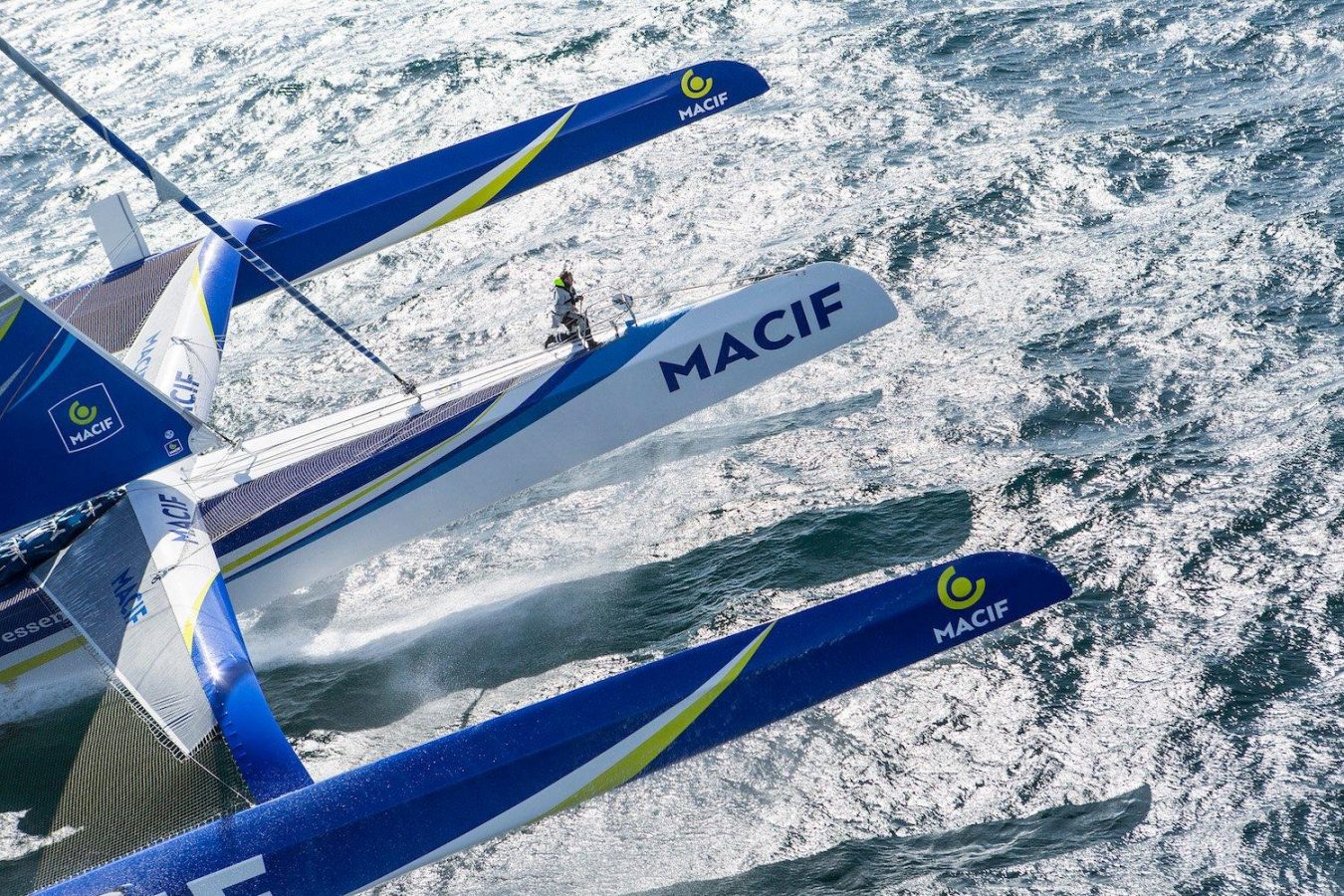
BRILLANTE 2017, ESPERANZADOR 2018
BRILLANTE 2017, ESPERANZADOR 2018
© Vincent Curutchet
Repasamos cómo ha sido 2017 y lo que nos espera en 2018. El pasado año, North Sails reforzó su catálogo de velas para crucero con la revolucionaria 3Di Nordac, que no deja de recibir reconocimiento internacional. A nivel deportivo, despidió un año excepcional con un nuevo récord estratosférico logrado con velas 3Di, el firmado por François Gabart al completar la circunnavegación del planeta en 42 días, 16 horas, 40 minutos y 35 segundos.
Para conseguir semejante hito de la navegación, Gabart completó la vuelta al mundo a un impresionante promedio de 27 nudos de velocidad. Su trimarán de 100 pies de eslora Macif voló con velas 3Di en una nueva demostración de rendimiento y de la tecnología exclusiva North Sails. Y de durabilidad: la mayor del Macif ya había navegado 47.000 millas antes de empezar la circunnavegación que supuso el récord, y que mejoró en casi una semana la establecida apenas un año antes por el SODEBO 4 de Thomas Coville, también con velas 3Di.
Las velas North Sails 3Di han batido nada menos que 24 récords mundiales desde 2014. El de Gabart se une a dos establecidos a principios de año: el IDEC de Francis Joyon lograba el trofeo Jules Verne por la circunnavegación absoluta más rápida de la historia (40 días, 23 horas, 30 minutos y 30 segundos) y Armel Le Cléac establecía el récord de vuelta al mundo en solitario para un monocasco durante la Vendée Globe, (74 días, 3 horas, 36 minutos y 46 segundos). Otras marcas de 2017 para recordar son las dos establecidas durante la Transpac Race: el Mighty Merlone de HL Enloe batió el récord de multicascos (intocable durante 20 años), y el Comanche de Jim Clark el de monocascos. Ambos optaron por velas 3Di RAW.
A nivel comercial, North Sails reforzó en junio su catálogo de velas para crucero con la 3Di Nordac, un producto que por primera vez combina la tecnología 3Di y el poliéster, y que está recibiendo unánime reconocimiento internacional. También en nuestro país, como explica Luís Martínez Doreste, director comercial de North Sails España:
“Cerramos el año con una excelente aceptación de la nueva 3Di Nordac, que hemos vendido con éxito especialmente en las áreas de Canarias, Andalucía, Levante y Cataluña. Es un gran producto y nuestros clientes están muy satisfechos”. La nueva vela para crucero colaboró en la consecución de unos buenos resultados de ventas en la campaña 2017: “El balance de 2017 para North Sails en España ha sido muy bueno, hemos cumplido nuestros objetivos comerciales y logrado grandes éxitos deportivos, especialmente en One Design. De cara a 2018 esperamos la llegada de interesantes novedades que completarán nuestra oferta actual, y estamos convencidos de que recibirán una magnífica aceptación por parte de nuestros clientes”.
READ MORE
READ MORE
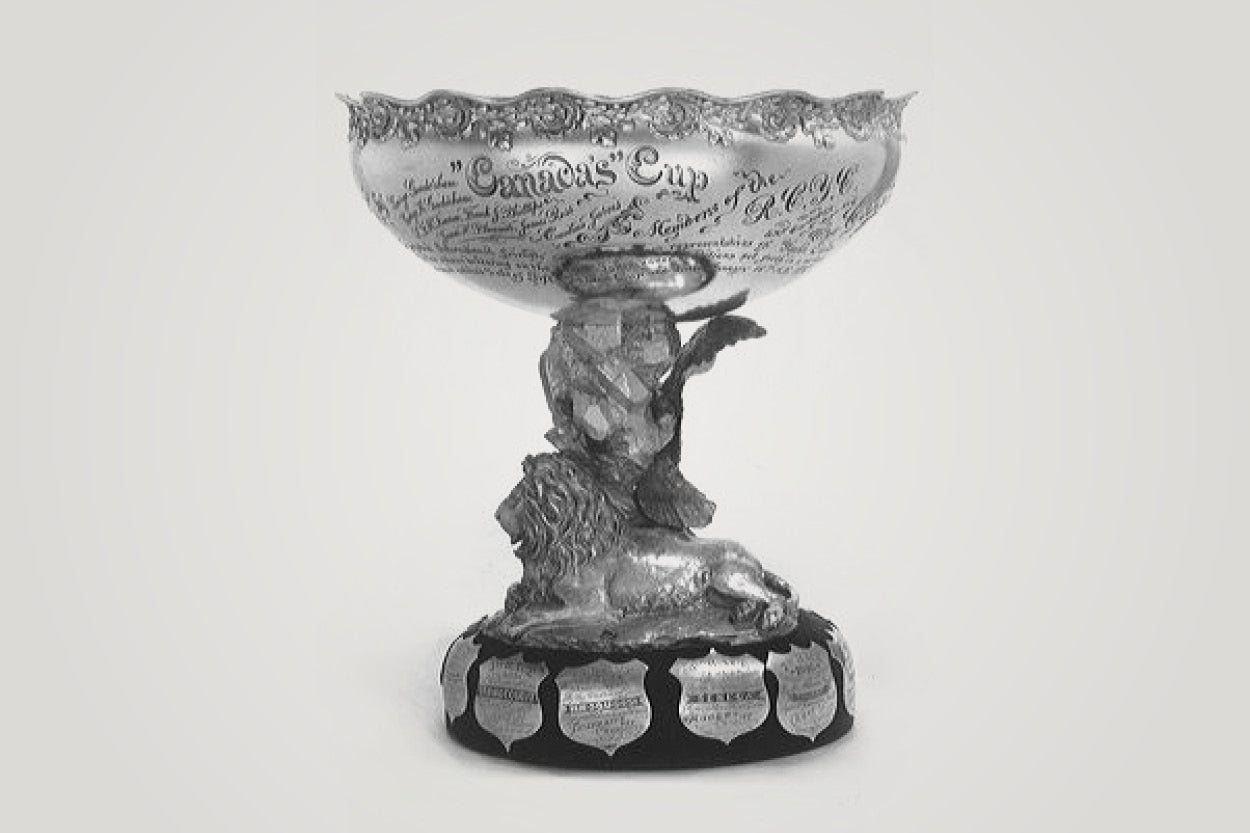
CANADA’S CUP TROPHY TO VISIT THE 2018 INTERNATIONAL TORONTO BOAT SHOW
THE CANADA’S CUP TROPHY AT THE 2018 TORONTO BOAT SHOW
The Canada’s Cup is the premier match racing trophy for the Great Lakes. The Cup was deeded in 1896 to be awarded in perpetuity to a winner of a series of match races between a yacht representing a Canadian yacht club and one representing an American club, both to be located on the Great Lakes. The prestigious event has been contested 24 times between the United States and Canada; USA holds the edge, 13 to 11.
WHAT:
Come and see the oldest and most prestigious Great Lakes sailing trophy, the Canada’s Cup, and learn about exciting changes for the Canada’s Cup Event. Be introduced to the Melges IC37, the new boat that has been selected for the event for 2020, 2022, 2024.
WHEN:
Friday, Jan 19th – 1600 – 1900 hours.
Saturday, Jan 20 – 1200 – 1600 hours.
Sunday, Jan 21 – 1200 – 1600 hours.
WHERE:
North Sails Booth #1623
READ MORE
READ MORE

HUGH BEATON EXPLAINS 3Di NORDAC AT 2018 TORONTO BOAT SHOW
HUGH BEATON EXPLAINS 3Di NORDAC AT 2018 TORONTO BOAT SHOW
The first weekend of the 2018 Toronto Boat Show was a great success despite the weather! Our Toronto team had a great time with customers, both familiar and new. Lots of interest was seen with our NEW 3Di NORDAC product. To learn more about it, see where Hugh Beaton explains the technology of 3Di NORDAC. Interested in our products? Contact your local expert today. https://www.youtube.com/watch?v=HIJNWrYAtqU&feature=youtu.be
READ MORE
READ MORE
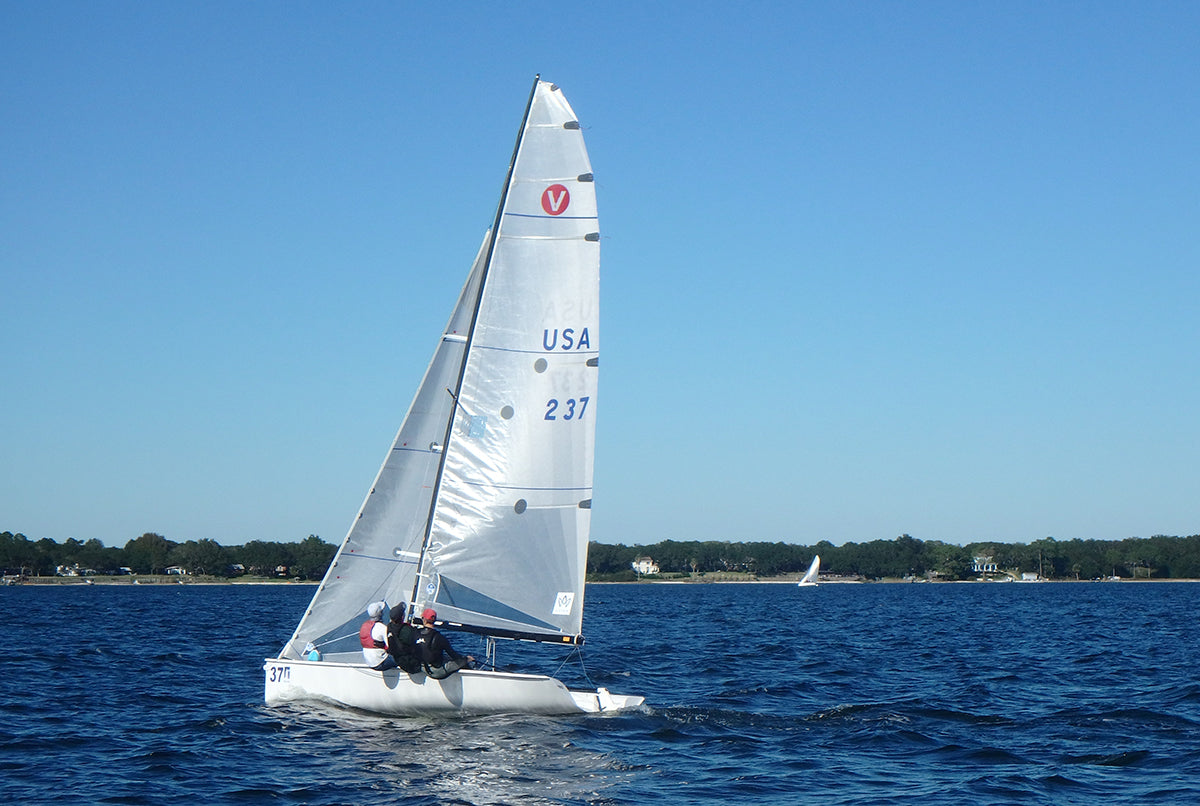
THE POWER OF A PERFECT LIGHT AIR ROLL TACK
THE POWER OF A PERFECT ROLL TACK
Boat Handling Goes a Long Way
The Viper 640 class has seen a lot of growth in the last couple of years largely in part to its grassroots feel, its fun-loving fleet members, and its dedicated class management. A nice list of destination venues like Bermuda and Florida doesn’t hurt either! But the true draw to this class is the boat itself. It is a proper sport boat with the feel of a planing dinghy with the stability of a small keelboat. There is no “low and slow” mode in the Viper 640. Even in under 10 knots of breeze, you always feel like you are flying downwind and, as it soon as it is over 10 knots, hang on to your hats!
Like any other racing class, the teams that consistently find the top of the podium on a Viper 640 are the ones that demonstrate superior boat speed but also, like a high-performance dinghy, the boat handling skills are nearly just as important as the boat speed factor. A lot can be gained on the Viper race track from executing your boat handling at a high level.
Don’t Underestimate the Power of a Perfect Light Air Roll Tack
We’ve all been a victim to that the hotshot team coming at us on port tack on the first beat in lighter air conditions. We’re thinking, “no problem, we are on starboard, they are either going to have to duck us or do a slow tack to leeward and we’ll roll right over the top.” Only to end up seeing that smirk on the helmsman’s face as they look back at us after ultimately pinching us off and sending us back to the middle of the course. How did they do that?! The perfect roll tack… That’s how!
Learning the skills of executing a perfect roll tack often times begins in our junior sailing days – be it Opti’s, Lasers, or some other dingy. Then it has to be translated into different boats and with different teams. But the fundamentals remain very similar:
A perfect rate of turn
A well-timed “bump” from the crew weight
The perfect amount of back wind on the jib
Hitting the exit angle
Easing the sails
Flattening the boat together and effectively without over flattening
It’s that simple! Here is the breakdown of executing a perfect roll tack in light air in the Viper 640:
Once we’ve communicated that the tack is coming, we try to be patient and find a nice flat spot to start the turn. We give the mainsheet a bit of trim to close the leech and help the boat start to turn up. We might lean our body weight to leeward just a tad, but we don’t aggressively heel the boat to leeward. The initial tiller movement is quite slow as we try to let the boat carry its momentum into the wind as long as possible. No one moves until we have turned all the way through head to wind and the jib starts to backwind.
When the jib backwinds, the helmsman accelerates the turn (pushing it all the way into the bridle if using the aft mainsheet set-up) and the crew now, smoothly but deliberately, moves their weight hard to the rail (on the new leeward side). It’s critical to wait to do this “bump” until the jib has backwinded because now we are using the pressure from the wind to help us generate the roll. If we roll too early, it slows the turn down and we don’t get the leverage from the wind to help generate a powerful roll.
When we think the boat has now reached its maximum heel, the jib trimmer will now switch the jib, the main trimmer will release the main, and the team will hop to the new weather side and use their shoulders as much as possible to pump the boat back to flat. It is crucial not to let the boat over-flatten. Depending on how much wind there is, you’ll have to decide how many crew members are needed to flatten. It is also crucial that both sheets stay eased as you bring the boat back to flat because the boat will experience an apparent wind shift aft as the mast comes back to vertical. You need to keep the leeches open to allow for maximum acceleration.
Once the boat is flat and you’ve hit your exit angle, you can trim the sails back into the normal upwind look. Remember that the Viper really likes to sail low angles upwind when it is light, leaning on the jib for power. So we try to avoid coming out of the tack at a lower angle. If you come out of the tack to close to the wind, you will be underpowered and down speed.
READ MORE
READ MORE
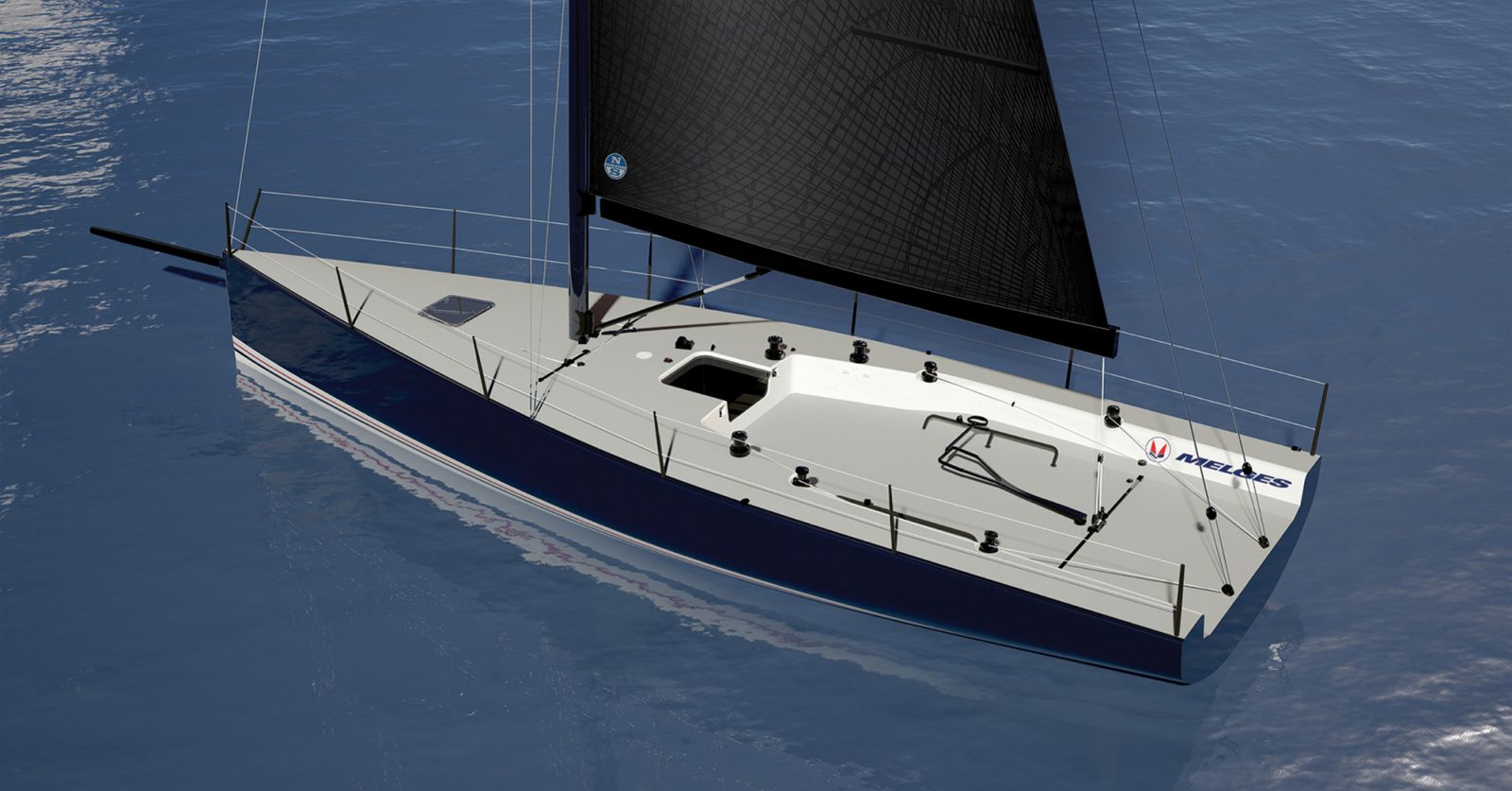
NORTH SAILS DESIGNS INVENTORY FOR NEW MELGES IC37 CLASS
Designer Mike Marshall explains 3Di sail development
When notified that North Sails would be the official sailmaker for the Melges IC37 class, the design team realized we had a challenging task before us. An inventory of only three sails – one main, one jib, and one spinnaker – and only one standing rigging tuning adjustment allowed during class regattas (the mast ram). Given these requirements, how could we design a set of sails to cover the entire wind range when racing this 37-foot one-design boat? Fortunately, we had all the tools we needed with North’s 3Di technology and the North Design Suite of modeling software.
It was clear from the outset that 3Di was the only option for sails that could take the loads of a 37-foot boat yet perform well in winds anywhere from 5 to 25 knots. With 3Di, tapes are oriented in the direction of the loadings, giving outstanding stretch resistance, and Aramid and Dyneema fibers provide exceptional durability. So the 3Di decision was an easy one.
Next we got to work perfecting sail shape through aero-elastic modeling. In a seven-step process passed down from years of America’s Cup development, the Melges IC37 sails were modeled in a variety of wind conditions. Thanks to a close relationship with Southern Spars we had access to very detailed mast information, such as mechanical properties and rigging attachment points, which allowed us to design sails that would perfectly fit the mast of the Melges IC37.
Here are the seven steps in the sail development process:
Step 1: Build a model of the rig. Using North’s Desman program, we created a complete three-dimensional model of the spars and rigging.
Step 2: Determine the base rig tune of the mast. Through our partnership with Southern Spars, we obtained the maximum loaded tuning and rigging specifications for the Melges IC37 and ran it through the program Membrain, to determine the maximum and minimum mast bend from tuning. This, in turn, provided the minimum and maximum mast ram positions and the range of mast bends and headstay sags the sails would see up the wind range. .
Step 3: Design the sails and place them on the rig. Using the program Spiral, we specified a shape for each sail. This software defines a sail’s three-dimensional shape as a “molded” surface without any wind pressure or load applied.
Step 4: Define the structure of the sails. Using the software module Warps, we selected 3Di construction and created the taping layout of the sails. The structure of a sail is as important as its designed shape, because these two factors must work together to achieve the sail’s “flying shape.”
Step 5: (left) Apply wind pressure to the sails and rig. We used the program Flow to introduce wind pressure over each sail’s three-dimensional mold and produce a pressure map on the sail’s surface. This pressure field was then linked to the program Membrain, to see what effects wind pressure would have on the molded sail shape.
Step 6: (right) Apply a pressure map to the molded sail shape. Using Membrain , we took the rig and sail model developed in the first four steps and applied the pressure field from Step 5. Membrain considers the specific properties of the sail’s construction, adds in wind pressure, and shows how the sails will deform (stretch) when they are loaded.
Step 7: Carry out aero-elastic coupling. Once a sail’s flying shape is tuned and trimmed in Membrain, the deformed (pressurized) shape is sent back to Flow. This shape is different than the molded shape created in Spiral (without any wind pressure), so Flow recalculates a pressure map, which is then sent back to Membrain and applied to the sail to get a new deformed shape. This process is called aero-elastic coupling. Within the North Design Suite, the computer keeps going back and forth between Flow and Membrain until there is little or no additional change in Membrain’s deformed sail shape. At this point, we know that the sail shape is in balance with the wind loads on the sail.
After carefully considering multiple design options and running many load cases, we developed a set of sails for the Melges IC37 that would optimally fit the range of mast bends and perform well from 5 knots of breeze all the way up to 25 knots. We also determined the tuning for the mast, all before the first boat even left the mold.
North’s 3Di technology and North Design Suite go hand-in-hand and we are excited to see our work come to life when Hull #1 hits the water in a few weeks. What goes on behind the curtain tends to go unnoticed, but with the new launch on the horizon, our designers are proud to introduce to you the new North-powered Melges IC37 Class, the newest addition to Corinthian one design competition, with industry-leading technology that sailboat owners and crew will love.
Find out more on the Melges IC37, or speak with your local expert today.
READ MORE
READ MORE
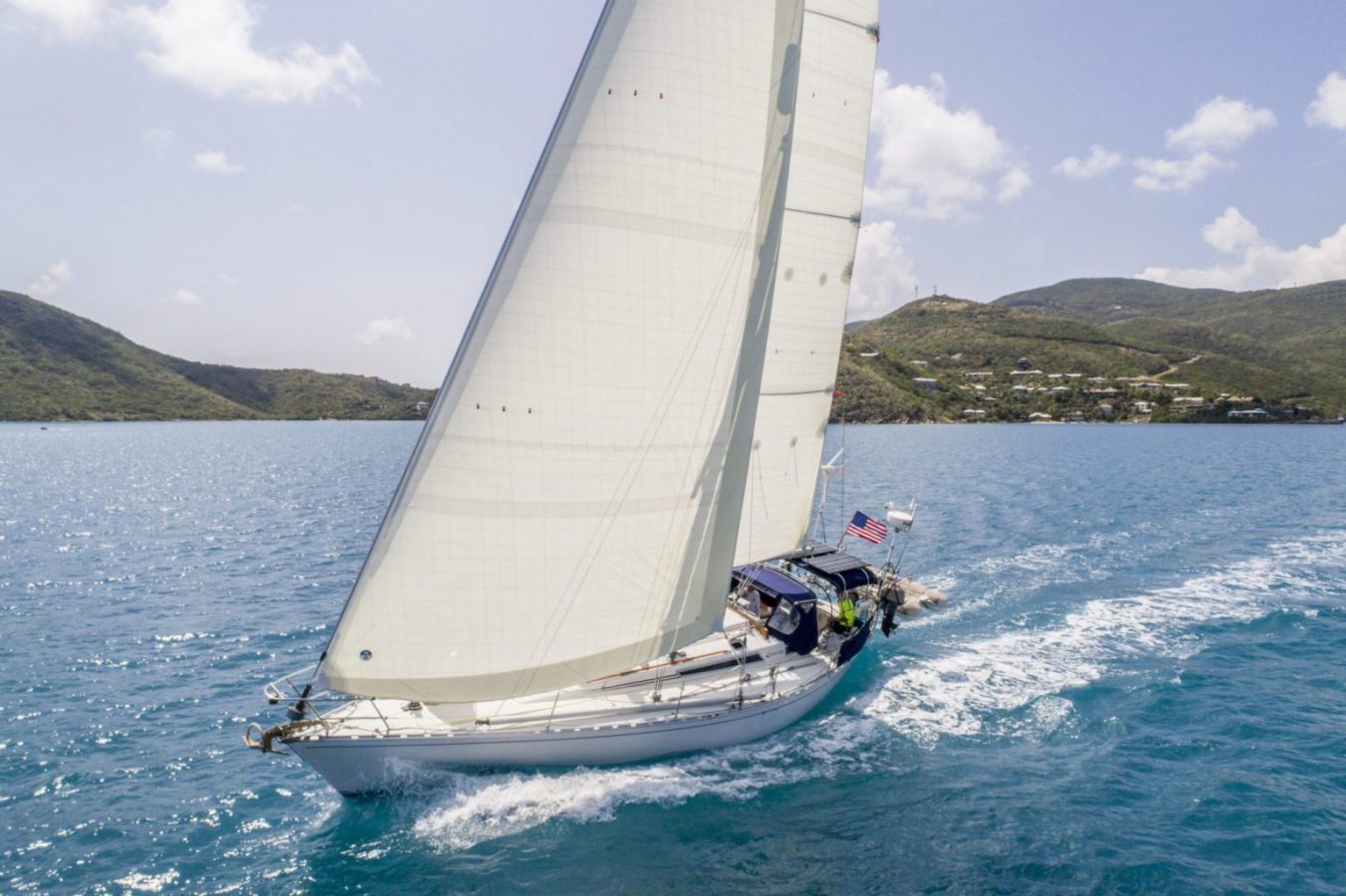
3Di NORDAC ANERKENDES NU OGSÅ MED ÅRETS PITTMAN INNOVATION AWARD!
NORTH SAILS ANERKENDES MED SAIL PITTMAN INNOVATION AWARD
Prisen, der de seneste år er gået til meget forskellige produkter, men overvejende til det nyeste elektroniske vidunder, går i år til vores innovative tursejl, 3Di NORDAC. Begrundelsen er, at North Sails har taget den avancerede teknologi udviklet til sejlads på højeste niveau til at udnytte polyesterens egenskaber fuldt ud, og kreeret en produktlinje, så alle nu kan få glæde af den.
© Amory Ross
I går, 17. januar 2018, annoncerede SAIL Magazine, at deres Pittmans innovationspris går til North Sails i år. ”Med deres nye 3Di NORDAC-sejl har North kombineret omkostningsniveauet og den lange holdbarhed fra de traditionelle sejl med 3Di-processen ved at bygge dem i ren polyester, hvor polyesterfilamenter i polyester-resin danner den grundlæggende 3Di-tape”, som SAILs redaktør Charles J Doane formulerer det. ”Resultatet er et sejl med lang holdbarhed, der er lettere, mere formstabilt og mere mug-resistent, end traditionelle vævede sejl er – win, win for tursejlerne kloden rundt.” Siden juni 2017, hvor vi lancerede 3Di NORDAC, har de revolutionerende sejl vagt stor begejstring blandt både sejlere og branchens eksperter. Vi har modtaget flere ordre og priser i løbet af den relativt korte periode, end vi havde turdet håbe på. At dommerne fra SAIL Magazine nu også anerkender muligheden for, at flere sejlere kan gøre brug af den unikke 3Di-teknologi, bekræfter, at nytænkning på et traditionelt marked var tiltrængt. North Sails’ øverst chef, Dan Neri, har følgende kommentar til prisen:
“I 2015 så vi muligheden for at kunne revolutionere udbuddet på cruising-markedet. Vi var overbeviste om, at vi havde udviklet noget helt unikt med 3Di Nordac og det har vi hermed fået bekræftet.”
Han fortsætter: ”3Di NORDAC ligner de velkendte hvide sejl, men har en glattere, stærkere og mere formstabil facon samtidig med, at prisen er konkurrencedygtig. Vi vil gerne takke komitéen for at anerkende dette unikke produkt med Pittmans innovationspris. Kontrol over bådens drivkraft med sejl, der responderer er essensen i den oplevelse, som vi ønsker at give tursejlere. Med mere balance, mindre pres på roret, mindre afdrift og lettere håndtering leverer 3Di NORDAC lige præcis det!” ”Andre sejlmagere vil nok argumentere for, at Aramid og Dyneema danner ”bedre” sejl, og at polyester ikke er avanceret nok eller har egenskaberne. North Sails er overbeviste om, at polyester stadig er det rette materiale til tursejl. En hver form for nedbrydning – stræk, kompression, knæk eller krymp – af sejlet mindsker dets ydeevne. Fokus på at forstærke sejlet i belastningsretningen er nødvendig. 3Di-sejl er betydelig mere strækresistente, end noget andet sejl i verden. Polyester har lang holdbarhed (UV-, knæk-, slid- og strækresistens), er let og nemt at forme. Sejlerne kan nyde godt af den stærke overfalde, den stabile facon og de integrerede reb, der holder formen og letter håndteringen i al slags vejr.”
Læs mere om 3Di NORDAC
READ MORE
READ MORE
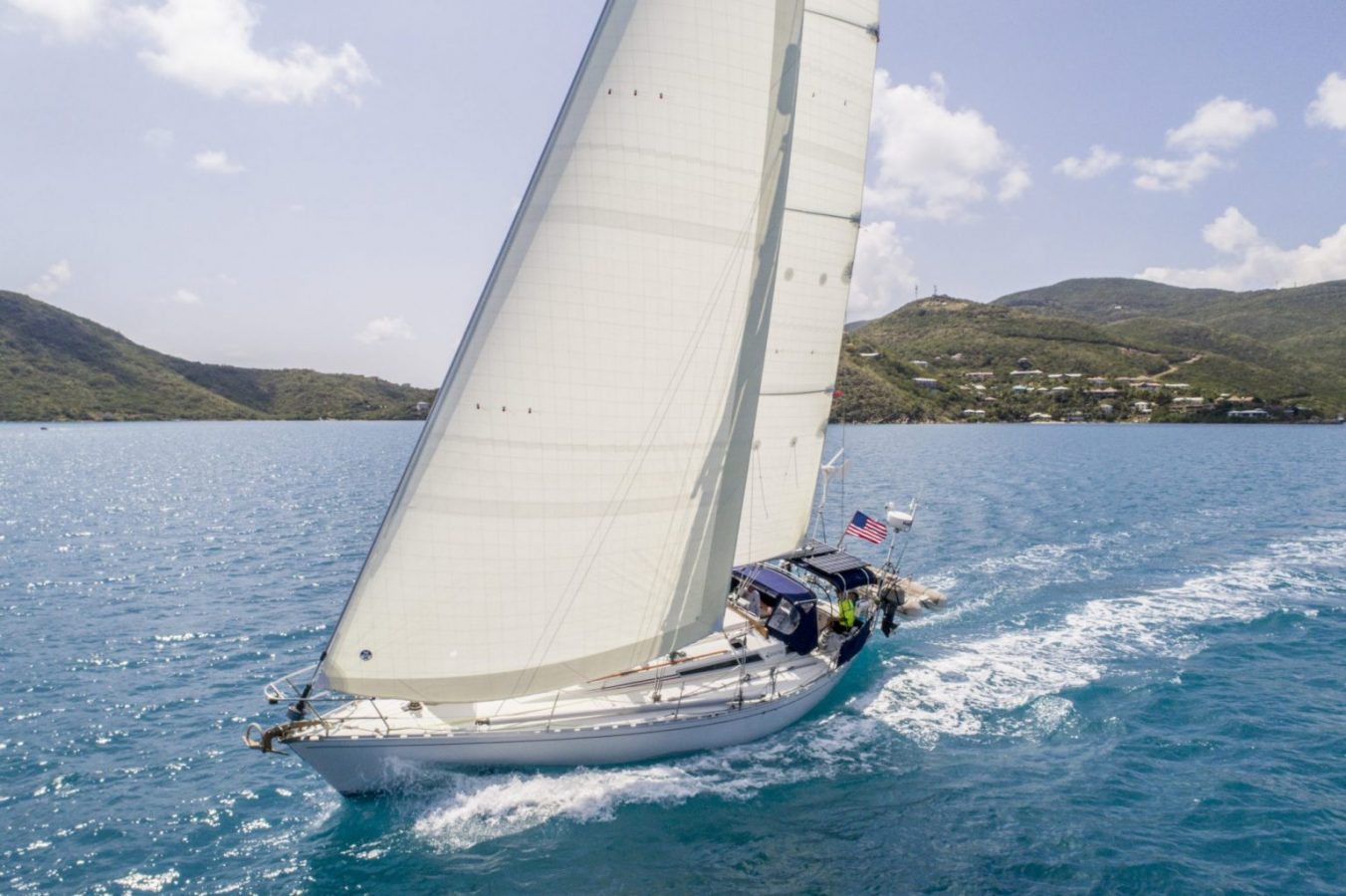
NORTH SAILS CLAIMS SAIL PITTMAN INNOVATION AWARD
NORTH SAILS CLAIMS SAIL PITTMAN INNOVATION AWARD
The Dacron sail reinvented: revolutionizing the cruising market by offering 3Di technology to the wider sailing community at an affordable price
© Amory Ross
NEWPORT, January 17th 2018: North Sails 3Di NORDAC is already recognized as game changing cruising technology and has claimed yet another coveted prize. The revolutionary polyester sail, designed for small to medium sized cruising boats, was yesterday announced as a winner of SAIL Magazine’s renowned Pittman Innovation Awards.
Since 3Di NORDAC was launched in June 2017, the sail has seen unparalleled success with cruisers and industry experts, claiming awards and stellar sales in a short space of time, with more than 1600 orders placed since being introduced. The SAIL judges recognized that 3Di NORDAC offers the wider sailing community the unique 3Di technology developed on the race course: “With its new 3Di NORDAC sails, North has combined the great cost-effectiveness and durability of traditional sails with the 3Di process by building them entirely in polyester, with polyester filaments set in polyester resin in the 3Di structural tape,” said SAIL editor Charles J. Doane. “The result is an affordable all-polyester sail that is lighter, less stretchy, more durable and more mildew-resistant than traditional woven polyester sails - a win-win for cruising sailors everywhere.”
Commenting on the award victory, North Sails CEO Dan Neri added,
“In 2015 we saw a real opportunity to create product differentiation in the cruising market and we felt confident we had developed something special with 3Di NORDAC. We are pleased by the response from the cruising community.”
3Di NORDAC is a familiar-looking white sail, boasting stronger, smoother, longer lasting shape, and priced to compete within the cruising market. We would like to thank the SAIL Pittman Innovation Awards for celebrating this great product. Controlling your sail power with responsive sails is the hallmark of the North Sails cruising experience. 3Di NORDAC sails deliver this experience with less heel, less helm, less leeway and lighter, more easily-handled Dacron sails than ever before. 3Di NORDAC product does this without sacrificing the durability that is critically important to cruising sailors.
Many sailmakers might argue that Aramid or Dyneema yarn deliver a “better” sail, and that polyester is too low tech and offers no interesting properties. North Sails believes polyester remains the right material for the cruising market. Sail distortion of any type - stretch, compression, shear or shrink - has a negative effect on sail performance. Most sails concentrate on resisting loads in the stretch (tension) direction. Ounce for ounce, 3Di sails have significantly more resistance to stretch than any other sail made in the world today. Polyester is high durability (UV resistant, flex, abrasion, toughness), soft, lightweight and forgiving to handle. Sailors enjoy the rugged external rip stop surface of 3Di NORDAC, zero risk of delamination, perfect sail shape and integrated reefs for better reefed sail shape.
Learn more about 3Di NORDAC
READ MORE
READ MORE

MAGPIE DOMINATE ETCHELLS AUSTRALIAN CHAMPIONSHIP
MAGPIE DOMINATES ETCHELLS AUSTRALIAN CHAMPIONSHIP
North Sails Clients Sweep the podium, Graeme wins another National Title
The Swan River Etchells fleet in Fremantle, Western Australia put on a show with sunshine, crystal clear water, great racing conditions, and hospitality for the 2018 Etchells Australian Championships. This race track will be hosting the 2020 Worlds Championship and has proved it will make a wonderful venue for the competition in a few years time.
The teams experienced variable conditions, from 10 to 20+ knots, testing the local and visiting sailors. The winning team of Graeme Taylor, James Mayo and Richard Allanson sailing Magpie never found it hard to turn on the speed, leading the event from day one. They finished the 7-race event with a total of 15 points overall and a 9-point lead over the second place.
The team This Thing of Ours with David Turton, Josh Torpy and Klause Lorenz finished second overall, and local team, The Croc with Michael Manford, Dean McAullay and Nick Gray rounded off the podium finishes placing third overall. North Sails is proud to have powered all 3 top teams!
Three-time Australian National Champion Graeme Taylor will now focus on the next World Championships later this year in Queensland Australia, where he hopes to better his 2nd place from the recent Worlds in San Francisco. Graeme uses PC-FM Mainsail, GM Medium-Heavy Jib and LM-2L Jib.
North Sails is committed to the Etchells class working non-stop to provide the fastest sails and the best service to our clients worldwide.
For more information about our products contact your local North Sails Etchells expert.
Full Results
READ MORE
READ MORE
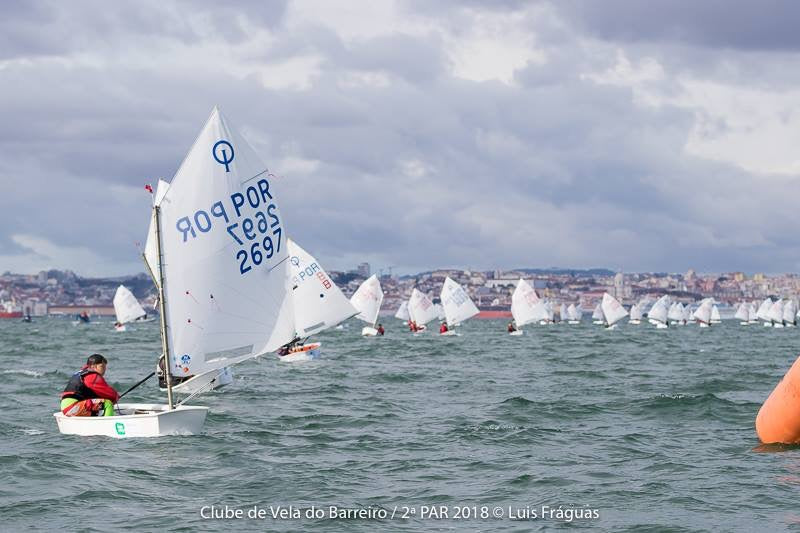
A EVOLUÇÃO DEPOIS DA CLÍNICA OPTIMIST !
A Matilde Bandeira (POR2696) e o Salvador Baptista-Fernandes (POR2697) do Clube de Vela do Tejo, estão de Parabéns pela sua prestação na II PAR Centro - Classe Optimist, que teve lugar no Barreiro durante os dias 13 e 14 de Janeiro.
A regata de apuramento regional foi a primeira em que os velejadores participaram depois da Clínica North Sails, que decorreu em Cascais no passado mês de Dezembro. Ambos provaram que estiveram atentos e retiraram dessa experiência valor acrescentado para o seu desempenho em prova.
Aliado ao seu desempenho global enquanto velejadores foi, também, a capacidade de análise técnica das velas que, fortemente, contribuiu para o sucesso da performance nas mais variadas condições de vento, enfrentadas no campo de regata.
A Matilde e o Salvador tiverem, então, durante este fim-de-semana a oportunidade de colocar em prática o que aprenderam na Clínica. Os velejadores provaram estar mais familiarizados e com maior conhecimento na abordagem das suas velas, neste caso os modelos R-1 (POR2696) e R-4 ((POR2697). O detalhes foram bem trabalhados e os resultados ficaram registados!
À Matilde pelo seu 1ºLugar Feminino (1ºAno com upgrade); 2ºLugar Geral (1ºAno com upgrade) e 10ºLugar Geral a nível Regional e ao Salvador pela sua vitória numa das regatas da prova e pelo 7ºLugar Geral a nível Regional, os nossos Parabéns!
All Photo Credits: Luis Fráguas
READ MORE
READ MORE
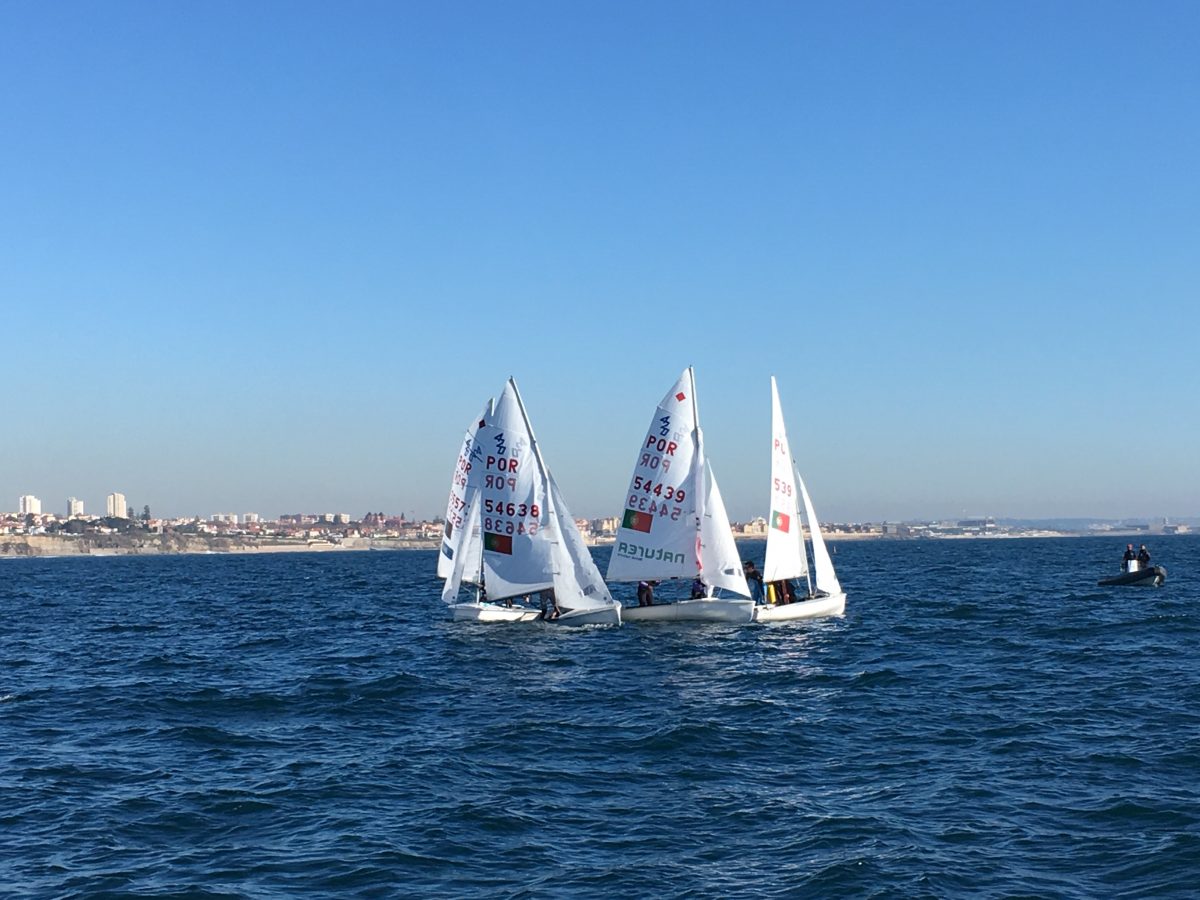
ESTÁGIO DE 420 COM HUGO ROCHA - 2017 IN REVIEW
North Sails com Hugo Rocha no Estágio de Natal de 420, em Cascais
A North Sails participou em dois dias do Estágio de Natal do Clube Naval de Cascais para a Classe 420, que decorreu de 19 a 22 de Dezembro.
A convite do CNCascais, a North Sails marcou presença com o Hugo Rocha que trabalhou, em conjunto com o treinador da equipa Pedro Cruz, diversas abordagens nesta classe One Design, contribuindo para a melhoria da performance dos velejadores.
A Naturea Sailing Team - Mafalda Gonçalves/ Maria Pereira do CNSesimbra e a dupla Francisco Rodrigues/ Tiago Alves do CVBarreiro - tiveram, também, a oportunidade de se juntarem a este estágio, sendo as equipas convidadas da North Sails/ CNCascais.
"Como velejador e como Class Expert da North Sails é um prazer poder participar neste tipo de iniciativas e verificar que há um grande potencial nos velejadores portugueses, espero ter a oportunidade para colaborar mais vezes. Agradeço ao CNCascais pela iniciativa e pelo apoio a este estágio." Hugo Rocha
As sete equipas tiveram a oportunidade de experienciar novas formas de optimização das suas velas, sendo que o balanço final foi bastante positivo. Já conhece as diferentes velas North Sails One Design para 420?
Photo Credits: Naturea Sailing Team
"Estágio muito positivo, pois aprendemos bastante, com especial foco na afinação das velas e no equilíbrio do barco. Andámos com todos os tipos de vento, o que foi muito bom para compararmos velocidades com os restantes barcos. Experiência a repetir!" Mafalda Gonçalves/ Naturea Sailing Team
Photo Credits: Clube Naval de Cascais
Agradecemos ao Clube Naval de Cascais pela oportunidade que proporcionou e pelo seu interesse nas nossas Clínicas. Caso queria ter mais informação sobre Clínicas North Sails não deixe de nos contactar!
Para apoio ao registo deste evento utilizámos o semí-rígido Zodiac 5.5Pro. da Yachtworks a quem deixamos o nosso agradecimento.
READ MORE
READ MORE
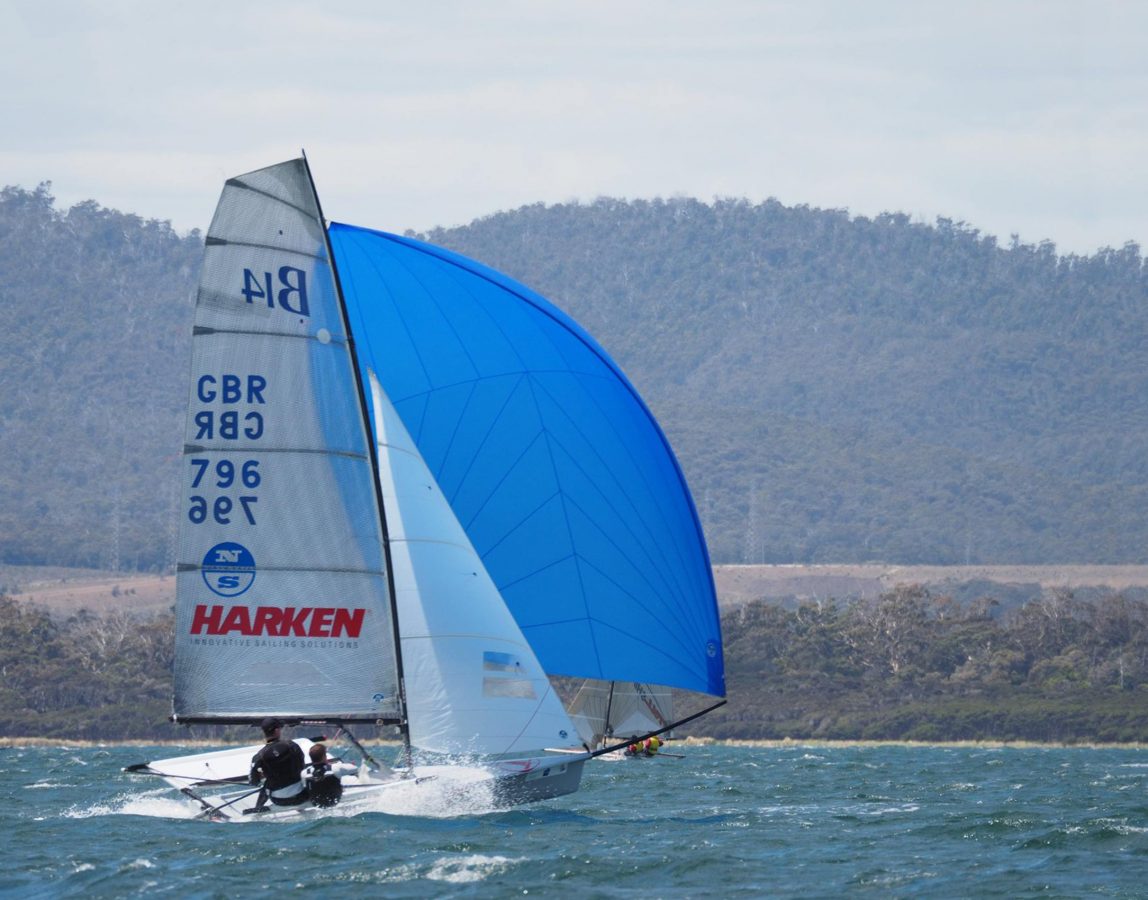
INTERVIEW WITH B14 WORLD CHAMPION NICK CRAIG
INTERVIEW WITH B14 WORLD CHAMPION NICK CRAIG
Seven bullets at the Worlds in Tasmania
After eight races, Nick Craig and Toby Lewis won the B14 World Championship with all bullets on the scoreboard. The event gave the 30 boat fleet a mixture of conditions, however in general on the breezy end of the forecast, which was ideal conditions for the skiff class.
Nick and Toby are familiar faces when it comes to the front end of the fleet in One Design racing, with victories in multiple national and international events in a variety of boats. They were also champions of the Endeavour Trophy in 2008 – the annual Champion of Champions event in the UK.
We caught up with Nick after the Worlds:
How long have you been sailing in the B14 Class?
I sailed the B14 for a few years around a decade ago and got back into the class a couple of years ago. I had missed the downwind buzz and great international racing and socials.
Which sail designs do you use and what is it that you like about them?
We use the North LGM-8 3DL mainsail, LJ-4D Dacron jib and the SS-04 kite. I think our rig setup is very powered up but controllable in breeze (with these sails), which gives great pace in every wind condition. The SS-04 kite is really quick downwind!
What was venue like to sail at and what would be your top tip for the venue?
It was an excellent venue – we had sunshine and great wind almost every day :-). Everyone at the sailing club was really friendly, the family made friends and had a good time and we had fun touring around seeing Penguins and amazing beaches!
It is quite tidal with some shallows in odd places at low water so it is worth gaining some local knowledge through racing there, looking at tidal charts and talking to people.
After a successful start to the year, what’s your goal for the rest of 2018?
Do some more great racing in competitive classes – we are lined up to sail in the Merlin Nationals, GP14 and D-One Worlds
What are your top tips for sailing a B14 upwind & downwind?
Upwind in light winds the B14 is quite similar to slow boats – take the shifts and pressure and she likes a surprising amount of leech tension. In breeze, the B14 is very different to anything else I sail upwind and a lot of fun! Pressure is king over shifts and tacks should be made sparingly as you come off the plane.
When going upwind, you are looking to stay on a “high plane”: bow down, touch of windward heel and ease sails to get the boat planing and then gradually sheet in to plane close to the wind. Constant trimming is needed unless the wind is very steady.
Downwind we try to steer the boat through sail trim and body movement to avoid rudder use. Toby is a fantastic kite trimmer which frees me up to look for pressure and try to map a path down the run to stay in the most pressure
You have had great success in multiple classes, what is your secret?
No great secret – outstanding crews, lots of hours on the water, sailing in competitive fleets and always trying new things and seeking to learn.
Thank you Nick and congratulations to yourself and Toby!
Find out about North fast B14 sails.
Full results
READ MORE
READ MORE
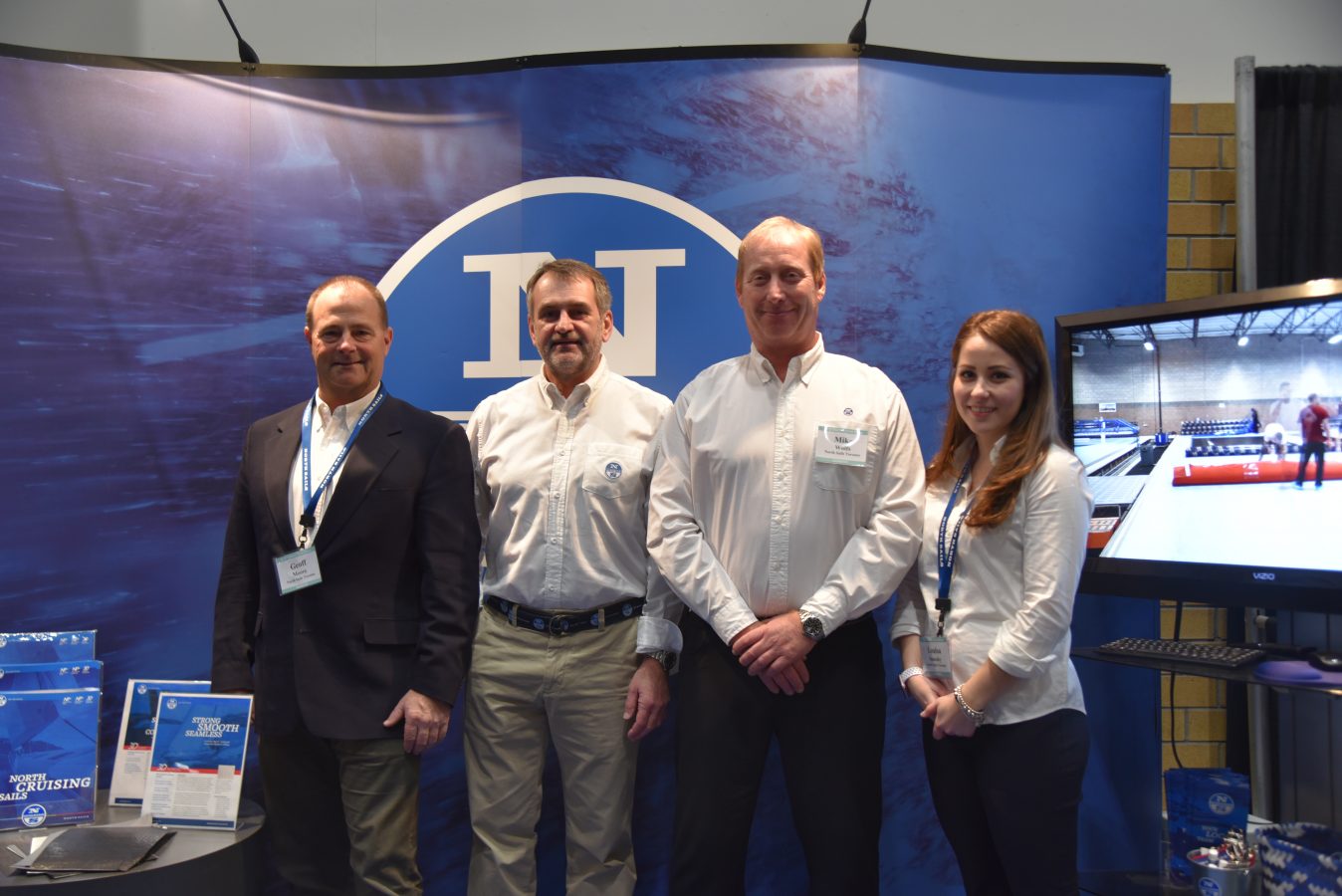
2018 TORONTO INTERNATIONAL BOAT SHOW
COME VISIT YOUR TEAM AT THE 2018 TORONTO BOAT SHOW
Our team including Hugh Beaton, Geoff Moore, Mike Wolfs, Louisa Sonosky (pictured above) are on site for the entire show to help you find the right sail for your needs. Take advantage of North Sails Boat Show Special by placing your order today for preferred pricing. Looking for cruising sails? Check out our award winning 3Di NORDAC for a better cruising experience. 3Di NORDAC reinvents the traditional dacron cruising sail providing more aerodynamic shape without compromising control, speed and comfort; rather it enhances and improves all the above. Order the revolutionary cruising product today!
Stop by booth 1623 in the Sailfest area during your visit to the show!
Interested in our products? Visit us at the Toronto Boat Show or Contact our local loft today!
READ MORE
READ MORE
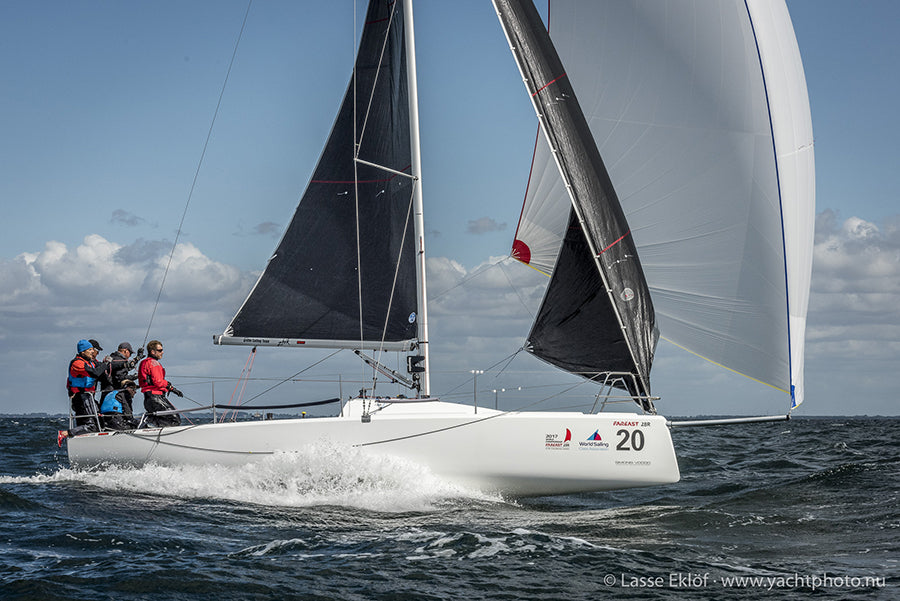
NYUTVECKLADE SEGEL BLEV GULD VÄRT I VM FÖR FAREAST 28
NYUTVECKLADE SEGEL BLEV GULD VÄRT I VM FÖR FAREAST 28
FarEast 28R är ett relativt nytt inslag på världens kappseglingsbanor. Klassens allra första VM avgjordes i Malmö i början av augusti. Regattan samlade 22 båtar från sex olika länder, och när krutröken skingrats visade det sig att det var svenska Team Griffin som stod högst upp på pallen och kunde inkassera förstapriset – en splitter ny FarEast 28R.
Rorsman ombord var Martin Strandberg, och han ackompanjerades av Marcus Löfgren, Henrik Ekström, Björn Jönsson och Johan Lindell. Fem spikar och fem andraplatser av tio räknade seglingar innebar att det här gänget rodde hem en ganska klar seger. Ändå var ingenting klart förrän efter sista seglingen. I bagaget hade de nämligen en lite onödig disk; under sista länsen på tredje seglingen råkade de passera startlinjen, omedvetna om att det var förbjudet i seglingsföreskrifterna. Det gav dem inga fördelar, men regler är regler och disken var självklar. Och det innebar att de fick segla större delen av regattan kniven på strupen, vilket inte precis gjorde deras prestation mindre.
Namnet Martin Strandberg klingar kanske bekant. Inte konstigt i så fall. Martin är projektledare på Svenska seglarförbundet och jobbar med att skapa möjligheter för seglare i Skåne mellan 15 och 25 år att utvecklas i sina seglingskarriärer. Han om någon vet vad det innebär; Martin har kappseglat i hela sitt liv, har deltagit i två OS och ett Americas Cup och på meritlistan finns VM-medaljer i både Optimistjolle och Farr 30. Under ett antal år drev han dessutom North Loftet i Lomma, så han har koll på det där med segel också.
Alla som känner Martin vet att han är en person som inte lämnar någonting åt slumpen. Det gäller allt från träning till utrustning. Seglen är förstås inget undantag. Och efter sina år på North visste han till vem han skulle vända sig för att få riktigt snabba segel till VM.
En svår men intressant utmaning
Att utveckla segel till en såpass ny båttyp som FarEast 28 är bland det mest intressanta man kan göra som segeldesigner. Att säga att man börjar med ett vitt papper stämmer visserligen inte – inom North-koncernen har vi tillgång till en gigantisk databank baserad på alla tänkbara typer av båtar – men alla klasser har ändå lite olika förutsättningar, och ingen vet med säkerhet hur ett riktigt snabbt segel ska se ut. Så det var en svår men intressant uppgift som vi på North Sails tog i tu med tillsammans med Martin Strandberg.
Första FarEast 28:an kom till Sverige för ett par år sedan, och vi hade redan producerat ett antal segelställ. Men nu var det ett VM som väntade, vilket gjorde att ambitionsnivån fick skruvas upp ytterligare ett par snäpp. Målen inför 2017 var förstås att vinna VM, men också att lägga grunden till en första trimguide, baserad på framför allt Martins erfarenheter.
Krysstället består av storsegel och en enda fock. Ytmässigt är båda seglen rejält tilltagna med stora akterrundor. Klassreglerna säger att storseglet ska kunna revas och det är tillåtet med rev även i focken. Det där sista var något vi avstod från, men att rev i focken överhuvud taget är på tapeten antyder att de här båtarna kan vara utmanande att segla när det brallar lite.
Däremot har vi lagt in ett litet ”trimrev” i förliket på focken. En bit upp på förliket har vi satt ett cunninghamhål, som gör det möjligt att korta förliket cirka två decimeter. När det dras ner i botten flyttas hela seglet lite neråt och lite framåt. På så sätt minskas det krängande momentet samtidigt som draget i fockskotet riktas mer bakåt, vilket öppnar upp seglet.
Ett storseglet kan trimmas näsan helt plant, men fockar blir djupare ju mer det blåser. Båda seglen byggdes i 3Di Raw, med bland annat aramid som bärande fiber. Resultatet är ett lätt och extremt stumt segel, vilket gör det möjligt att lägga in lite mer form än med ett mer flexibelt material som ger med sig när vinden ökar.
Fortsättning följer
Så här i efterhand kan vi konstatera att det viktigaste målet – att vinna VM – nåddes. Seglen kändes lättrimmade och gick bra i både lätt och hård vind.
Det betyder inte att seglen är perfekta. Klassen är fortfarande relativt ny och vi inbillar oss inte att vi redan nu har lyckats ta fram en optimal segeldesign. Så enkelt är det inte. Tittar man på segelutvecklingen i äldre klasser som Express eller 606 så ser man att designen fortfarande uppdateras. Riggtrim, segeldesign och material ändras allt eftersom seglarna i klassen utvecklar hur båtarna ska seglas optimalt. Om fem år kommer en FarEast 28 garanterat segla märkbart snabbare än idag, både på kryss och undanvind.
Det känns som att det finns mycket kvar att göra i den här klassen, säger Martin Angsell, som tillsammans med Martin Strandberg jobbade fram den nya designen.
Men klassen växer såväl internationellt som på hemmaplan och Team Griffin har beslutat sig för att satsa vidare. Dessutom ligger det en FarEast 28:a precis utanför loftet på Lidingö. Och allt detta innebär att det finns goda möjligheter driva segelutvecklingen ytterligare ett par steg framåt de närmaste åren.
Som testbänk är FarEast 28 intressant även av andra anledningar. Båten är liten och lätt och krafterna på seglen är relativt små, vilket öppnar upp för segel med andra materialkombinationer än tidigare.
3Di-teknologin utvecklas snabbt just nu, inte minst på materialsidan, säger Martin Angsell. Kompositkonstruktionen i 3Di-seglen gör dem väldigt stumma, oavsett vilka fiberkombinationer som används. För mindre båtar handlar det nu faktiskt om att minska stumheten i vissa delar av seglet, för att på sått få ett lättrimmat segel med formstabilitet som täcker hela vindregistret som seglet ska användas i. Numera är till exempel inte bara undervant och diagonaler som håller tillbaks mastböjen – med ett 3Di-segel påverkas detta även med hur mycket riktad fiber vi har lagt in diagonalt.
Med erfarenheter från 3Di Endurance Nordac (som byggs med fiber av polyester) kommer det att introduceras Raw (race)-serier baserade på polyester. Detta ger oss ytterligare möjligheter. North Sails One Design har testat dessa segel i ett antal stora internationella entypsklasser under 2017. Utvärderingarna har visat sig motsvara våra högt ställda förväntningar och vi kommer att introducera detta som en färdig produkt 2018, även för segel i Fareast 28-klassen.
READ MORE
READ MORE
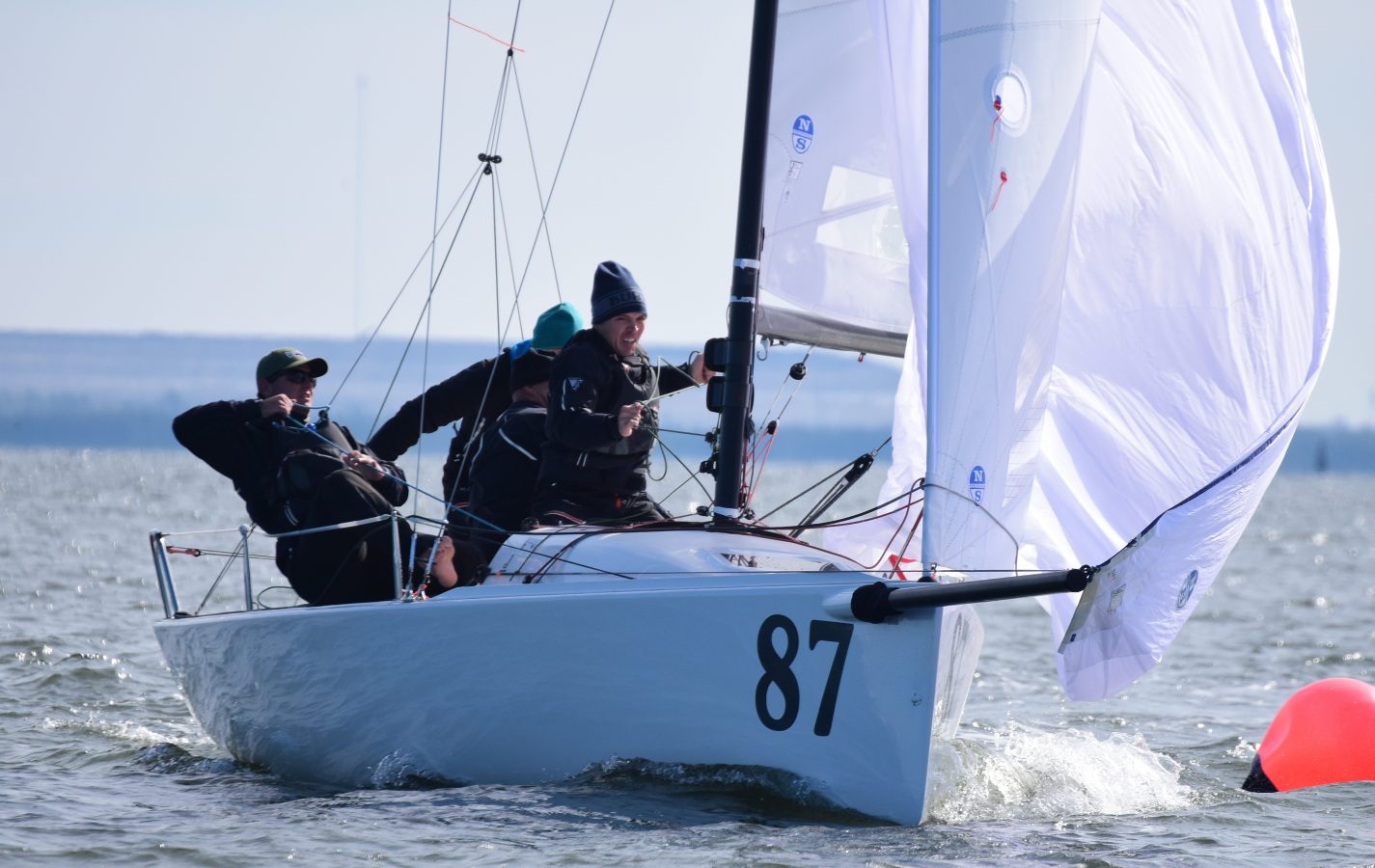
J/70 DOWNWIND TIPS - MARGINAL PLANING CONDITIONS
J/70 WINTER SERIES EVENT #2
Tips for Marginal Planing Conditions
Joel Ronning’s team Catapult, winner of the US Winter Series event #2. Photo Chris Howell
The J/70 Class came back for the action at event #2 of the Davis Island Winter Series in Tampa, Florida. Starting the event off with a bullet, Joel Ronning’s Catapult was ready to take on the 52-boat fleet. A cold front kept things on the chilly side, but with a nice 12-18 knot breeze out of the NE and flat seas, ideal conditions for all teams would be presented for the weekend. The competition was as high as usual. Sailors were eager to get off the line in a clear lane so they could choose their own destiny. After six races, Catapult lived up to their name and stayed clear of the fleet, scoring a total of nine points after one discard. Still having no races out of the top five the entire weekend, they were untouchable and had unbelievable speed. The XCS-1 mainsail, the J-6 jib and AP-1 spinnaker was a common weapon of choice for J/70 teams this weekend, with outstanding results.
North powered clients to 1,3, 5*, 6,7,8*,9 overall, sweeping the fleet full storm. Congratulations to our clients for these outstanding performances throughout the weekend in shifty-puffy conditions.
As always, teams had their share of tricks to get them around the race course. North Sails Tim Healy joined John Heaton’s team Empeiria for the weekend and shared some tips with us afterward. Here is what he had to say about maximizing crew technique in flat water marginal planing conditions.
Tips for Marginal Planing Conditions in 14-16 knots, flat water
At the top of the beat it is important to recognize what side of the course has best pressure.
Plan A: If no jibe is the call, then complete a normal set and quickly determine if you are in a planing puff or not, keeping in mind that you still have to protect your lane to weather.
Plan B: If you decide on a quick jibe, set up on the offset leg so you won’t get overlapped to windward with any boat. It is also important to sail higher, early in the offset leg, so the spinnaker can be set before the offset mark and fill as early as possible. This will allow a jibe at the offset mark to ensure no one will jibe inside you.
If you are in a planing puff, leave the jib out. Once you get planing get more vang on to maximize your power by keeping the main leech from spilling open. You should notice your leech telltales starting to stall then ease off a bit. This will give more power once you are up on a plane, allow you to sail lower while planing and will keep you planing longer as the wind fades off.
Things to keep in mind on crew weight placement:
In marginal or ”lazy” planing conditions, keep crew weight forward. The three forward crew should only move fore and aft in the cockpit section in front of the winch. Helmsman should be hip up to winch to-two feet behind it. The less wind the farther forward the entire crew needs to move.
As your planing puff dies, turn up gradually to maintain power and heel angle. If puff continues to die and you need to start searching up for pressure/power, look upwind and determine if there is another puff coming quickly that you can connect with. If a puff is not coming your way, then quickly go into displacement mode.
Furl jib
Bear away to max downwind angle
Ease main out and adjust vang for proper twist
Weight in for a flat boat and weight max forward
Make sure your backstay is fully eased
When your are in displacement mode, it might be a good time to think about going wing-on-wing. This will allow you to ride the 8-13 knot puff back down to the center of the course and away from the pack. It works well in these marginal planing conditions because it allows you to separate from other boats that may be searching too high to stay on a plane. You will be sailing close to DDW, while they are sailing high (on a reach) searching for the next planing puff. This is an opportunity to gain a lot of distance from your closest competitors.
Once the next puff is identified as a ‘planing puff’, wait until it hits then it’s time to take immediate action:
Unfurl jib (under trim till planing to keep it from disturbing the air flow around spinnaker).
Turn boat up to get planing at the same time all the crew weight is moved to the weather rail.
Find the correct heading based on heel angle. No more than 12 degrees of heel when puff hits then less than 10 degrees to get planing. Keep in mind that a planing boat should be flat and have no more than 10 degrees of heel.
Spin can be eased to see curl when puff first hits. When planing trim in to eliminate that curl. Only test curl from time to time. This keeps the spin leech from twisting too far open and depowering.
Once planing, trim vang on and trim in the jib, being careful not to overtrim.
See you at the next regatta! Please do not hesitate to contact Tim or the North Sails J/70 experts with go fast questions or product information.
J/70 2017-18 US Winter Series – Event 2
1
Catapult / Joel Ronning
3
Savasana / Brian Keane
5*
Powerplay Racing / Peter Cunningham
6
Stampede / Bruno Pasquinelli
7
Scamp / Will Welles
8*
Minor Threat / Jeff Janov
10
Building A / Josh Goldman
* Denotes Partial North Sails Inventory
Full Results
Sail22 Porch Series with North U – J/70 experts Tim Healy, Eric Doyle and Jackson Benvenutti
READ MORE
READ MORE
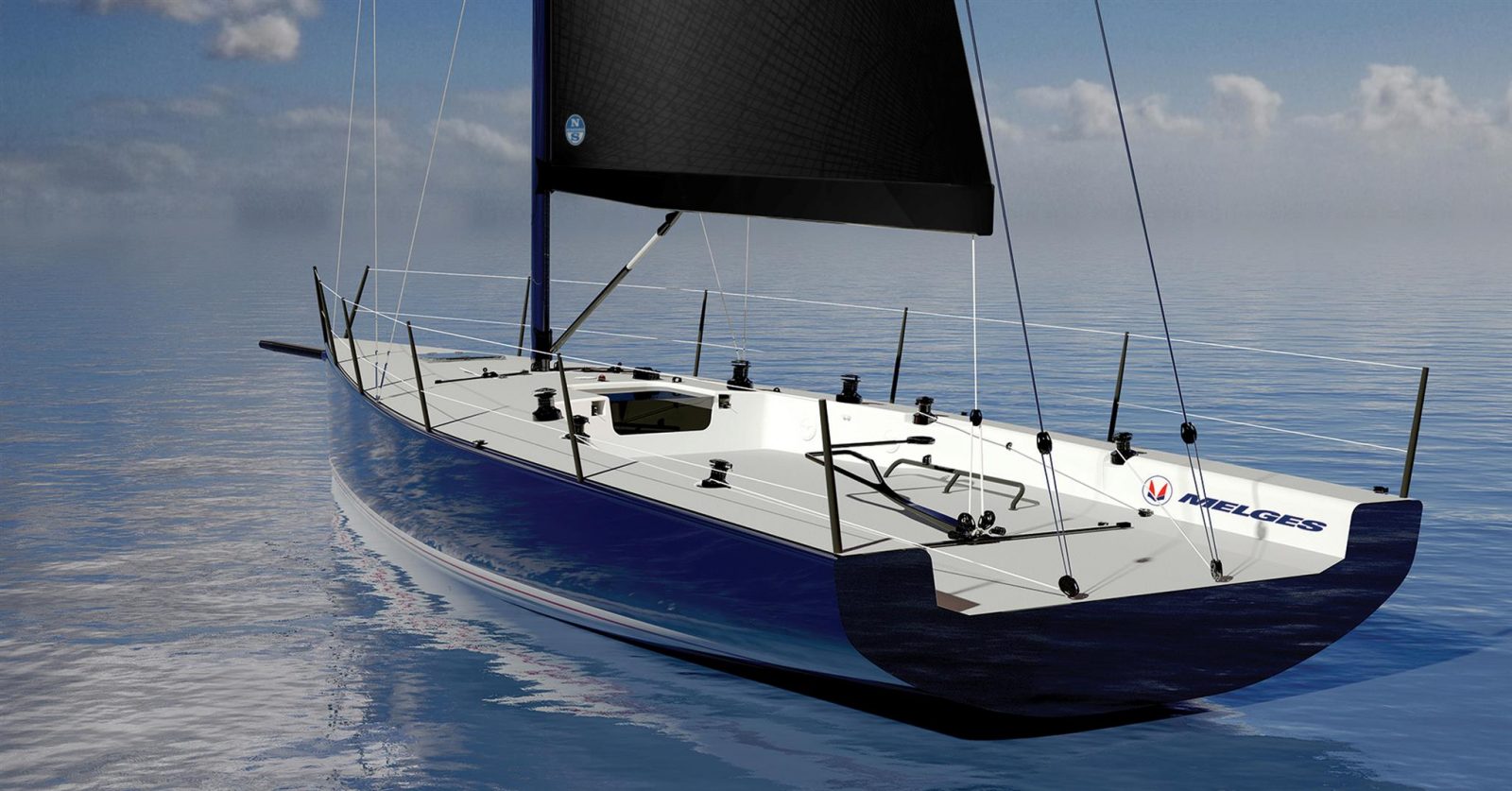
NORTH SAILS EXCLUSIVE SAIL SUPPLIER FOR THE NEW IC37 BY MELGES
NORTH SAILS EXCLUSIVE SAIL SUPPLIER FOR THE NEW IC37 BY MELGES
North Sails to Deliver the First Set of Sails in Early 2018
North Sails is a proud to be the exclusive sail supplier to the new IC37 by Melges. A fun, modern 37-foot race boat, this exciting new class will make its debut in the spring of 2018. The first 20 hulls have been purchased by the New York Yacht Club for the 2019 Rolex New York Yacht Club Invitational Cup, and it is Melges’ expectation to grow the class to an international audience over time.
North Sails President Ken Read and One Design experts have been working with boat designer Mark Mills and the New York Yacht Club to design an inventory that best supports this Corinthian focused class. North Sails will deliver the first set of sails in early 2018.
“The IC37 by Melges is a perfect example of a class that will be accessible to the masses,” commented Ken Read. “We have designed high performance yet cost controlled inventory that puts focus on smarts and crew work, rather than managing a large sail inventory. The class will enforce a strict one-design rule, limiting expensive sail development arms races. As exclusive supplier to events like the Volvo Ocean Race, America’s Cup, M32 circuit, and Extreme Sailing Series, the choice of North Sails as a supplier ensures IC37 owners will have industry-leading technology.”
Learn more about the IC37 by Melges by visiting MelgesIC37Class.com
READ MORE
READ MORE


